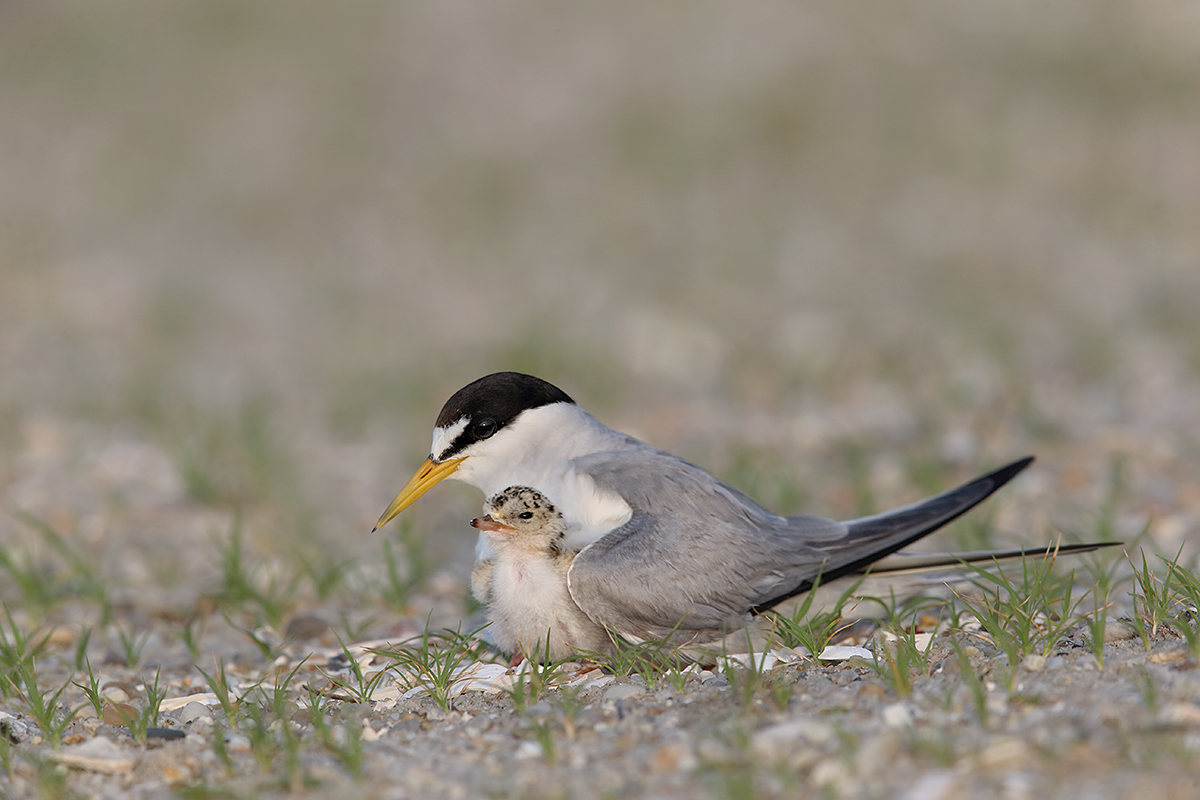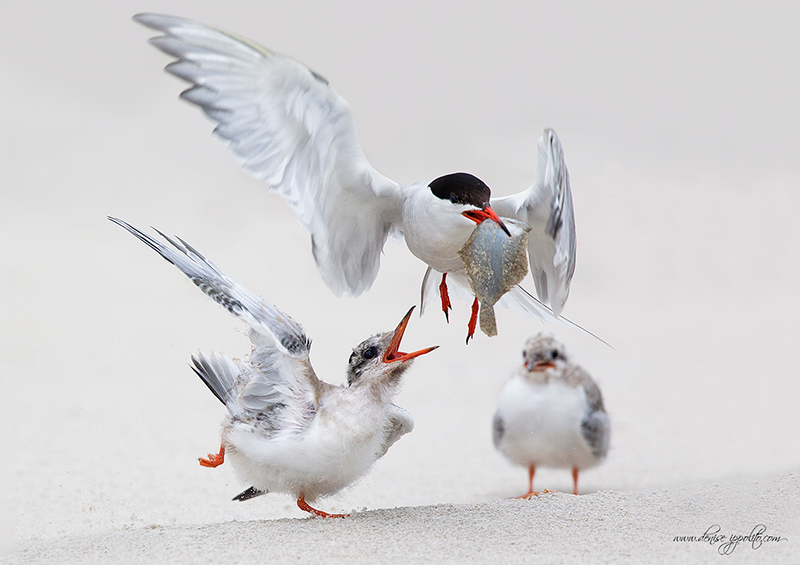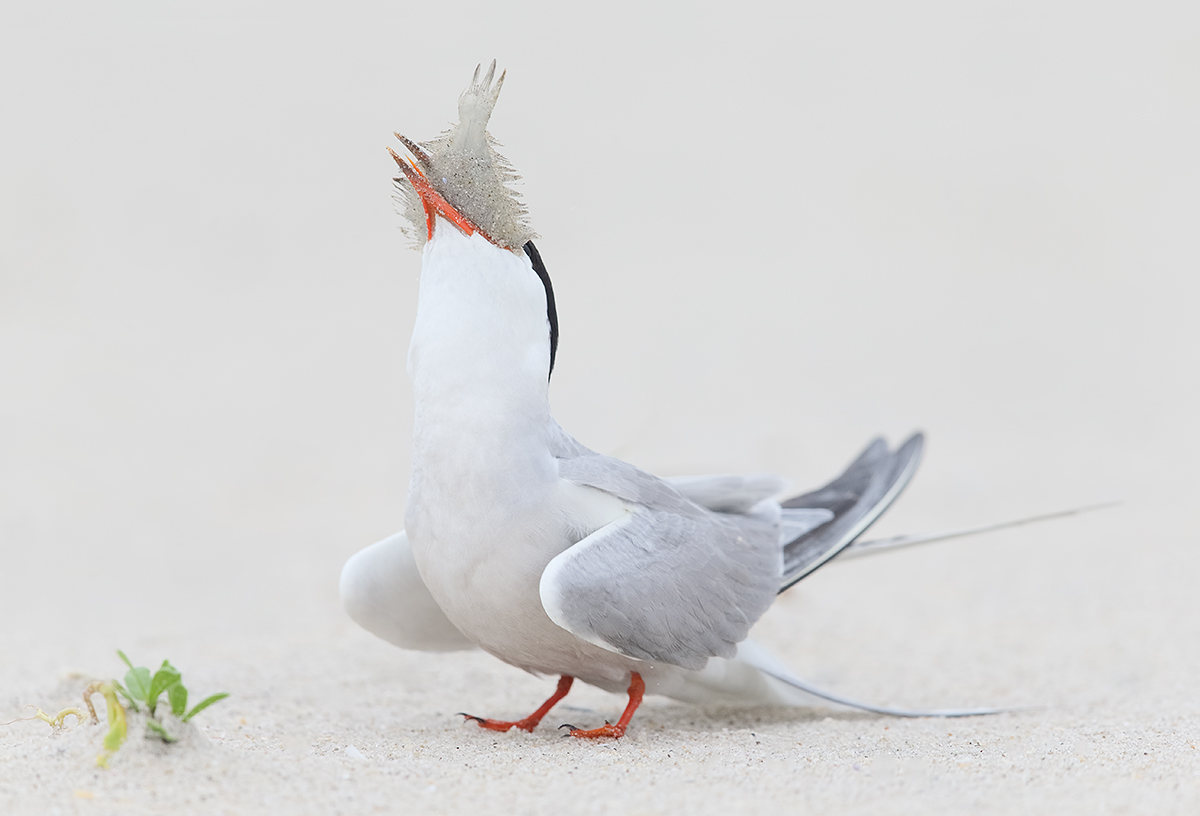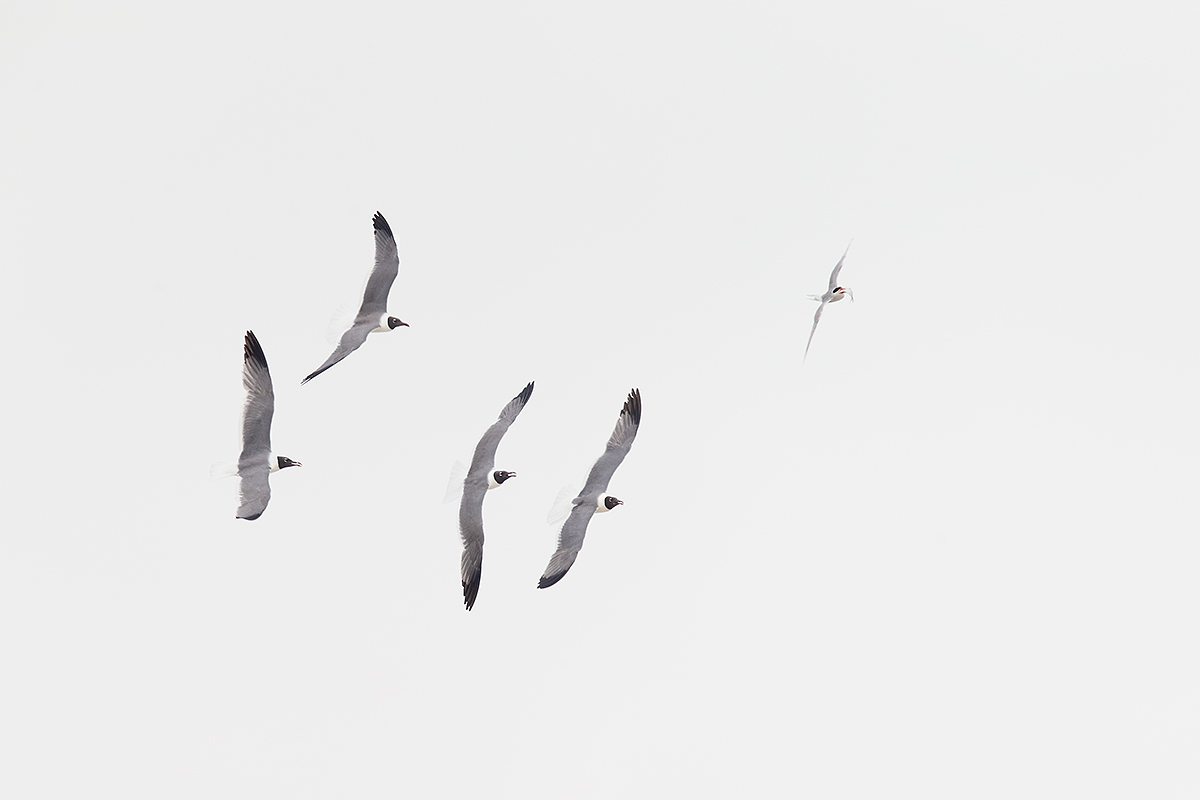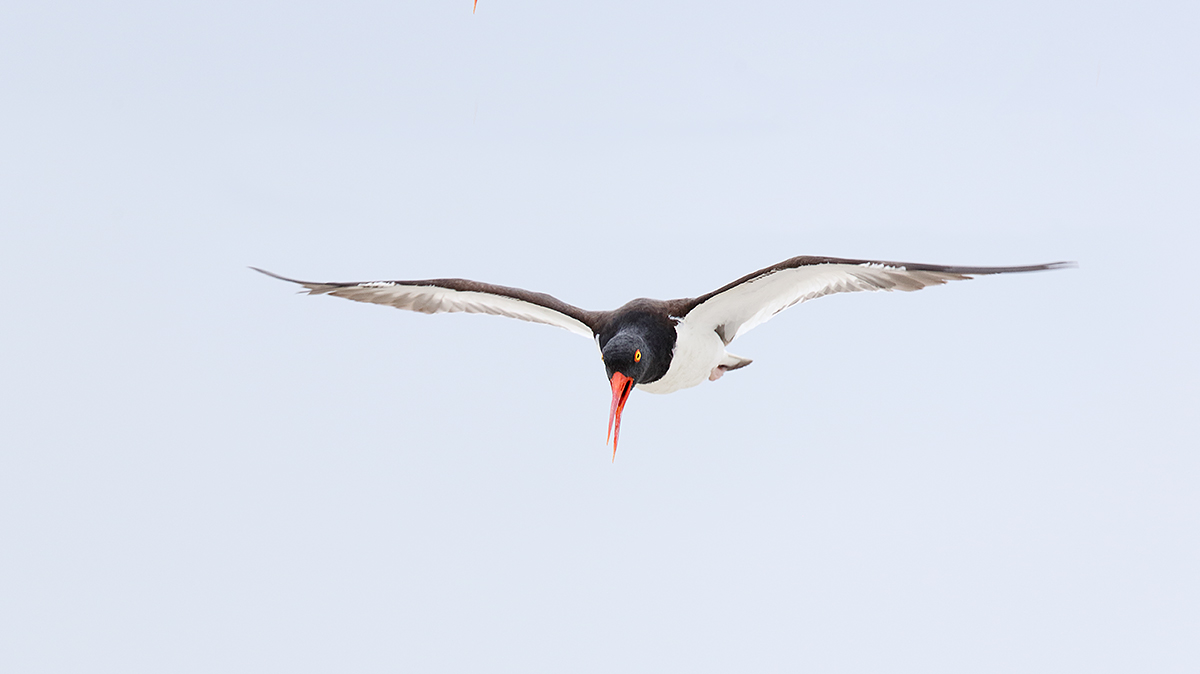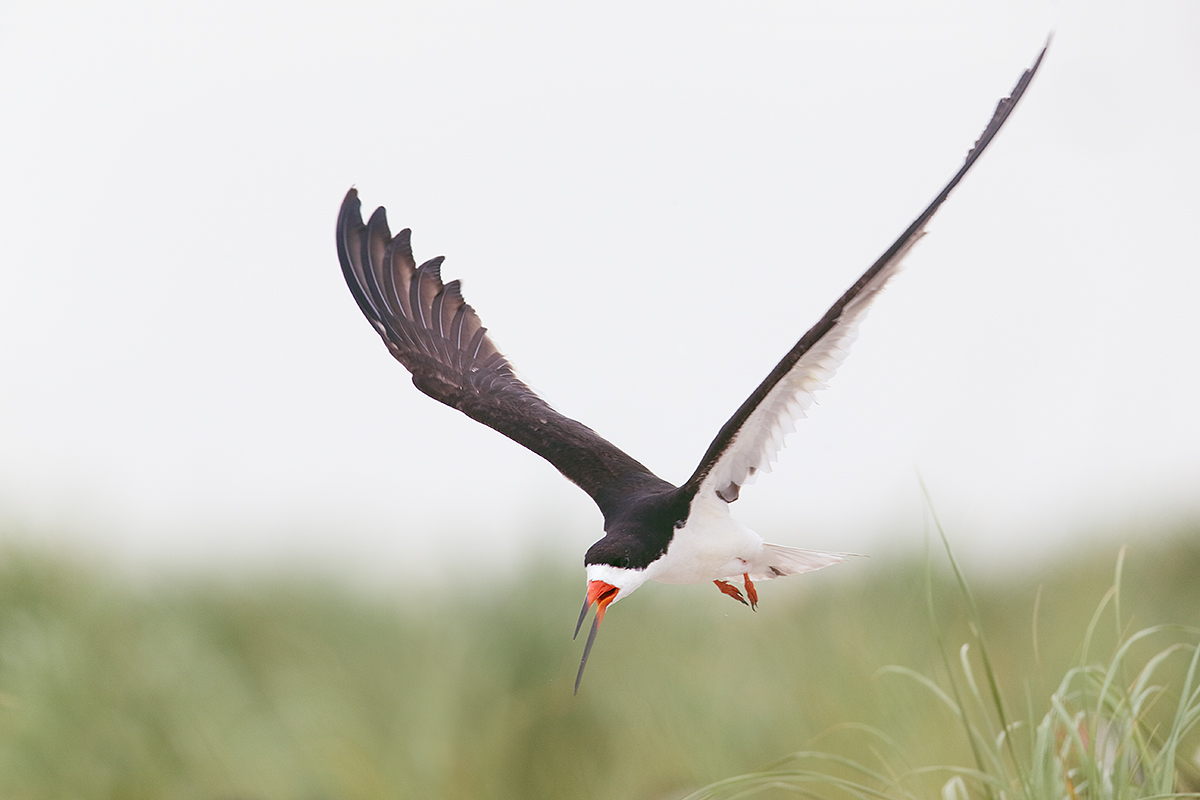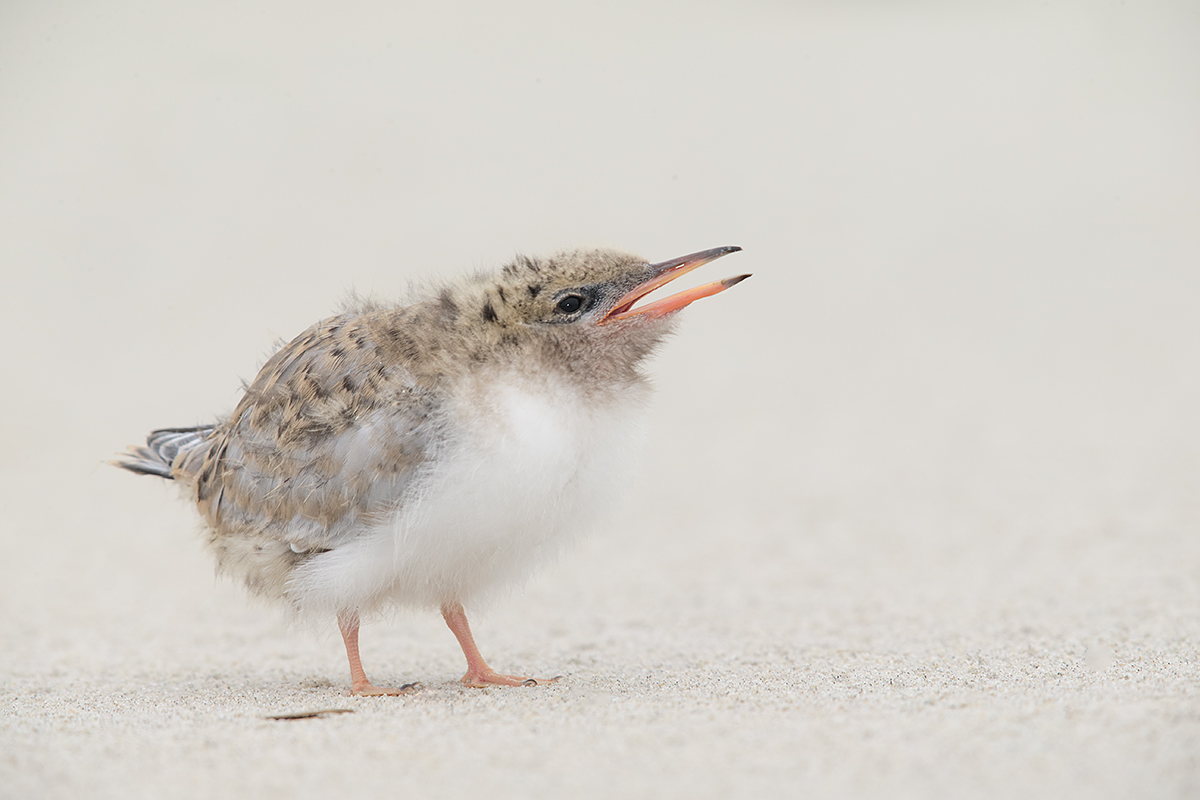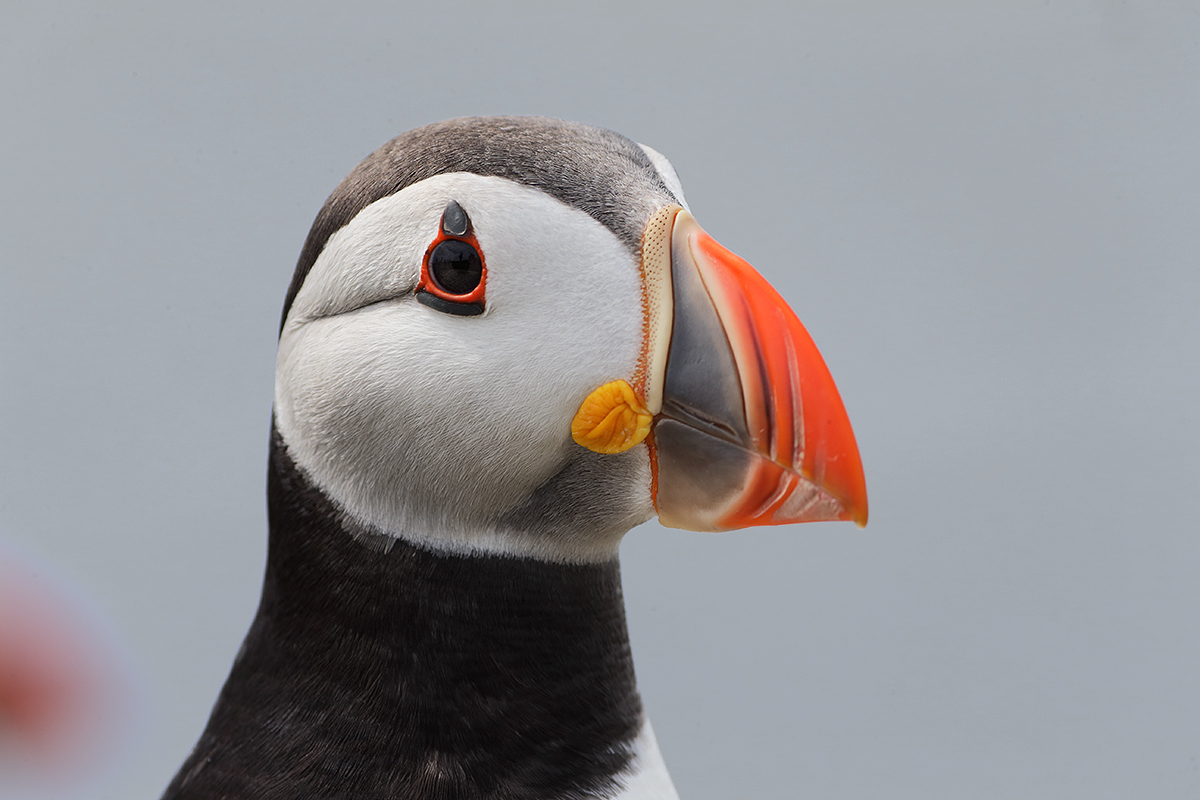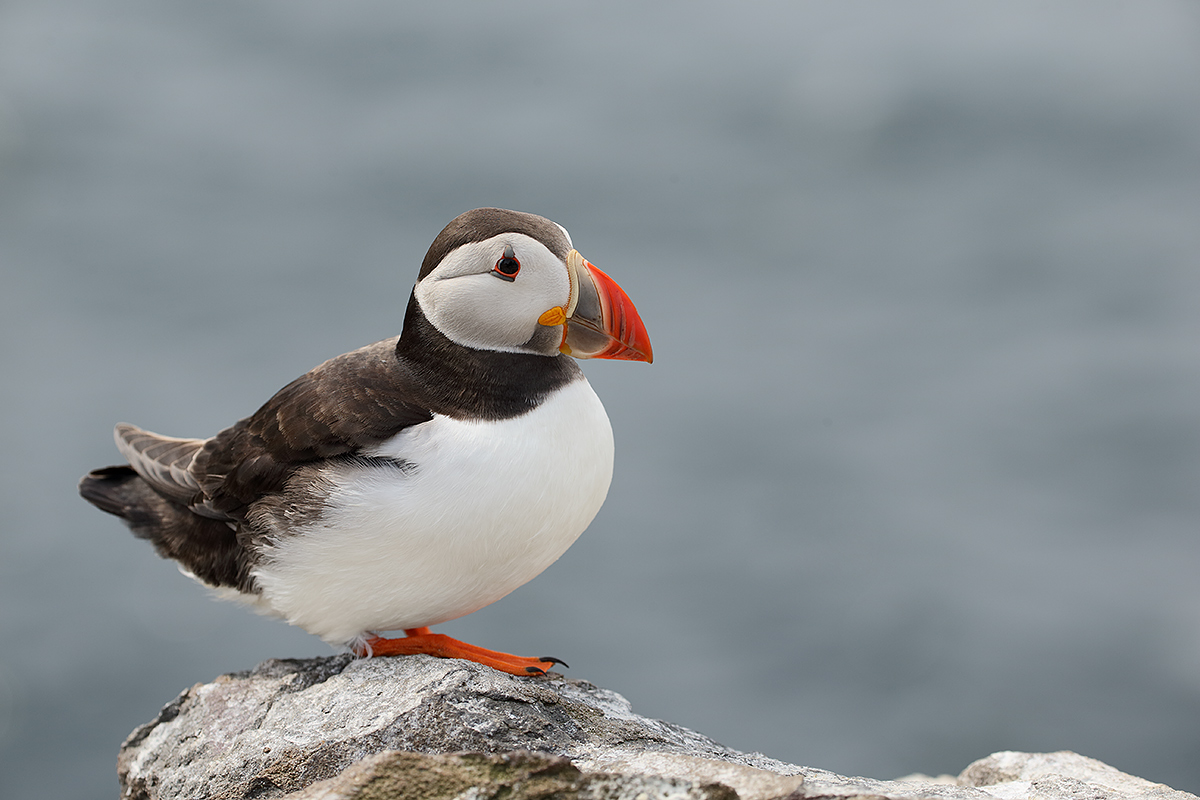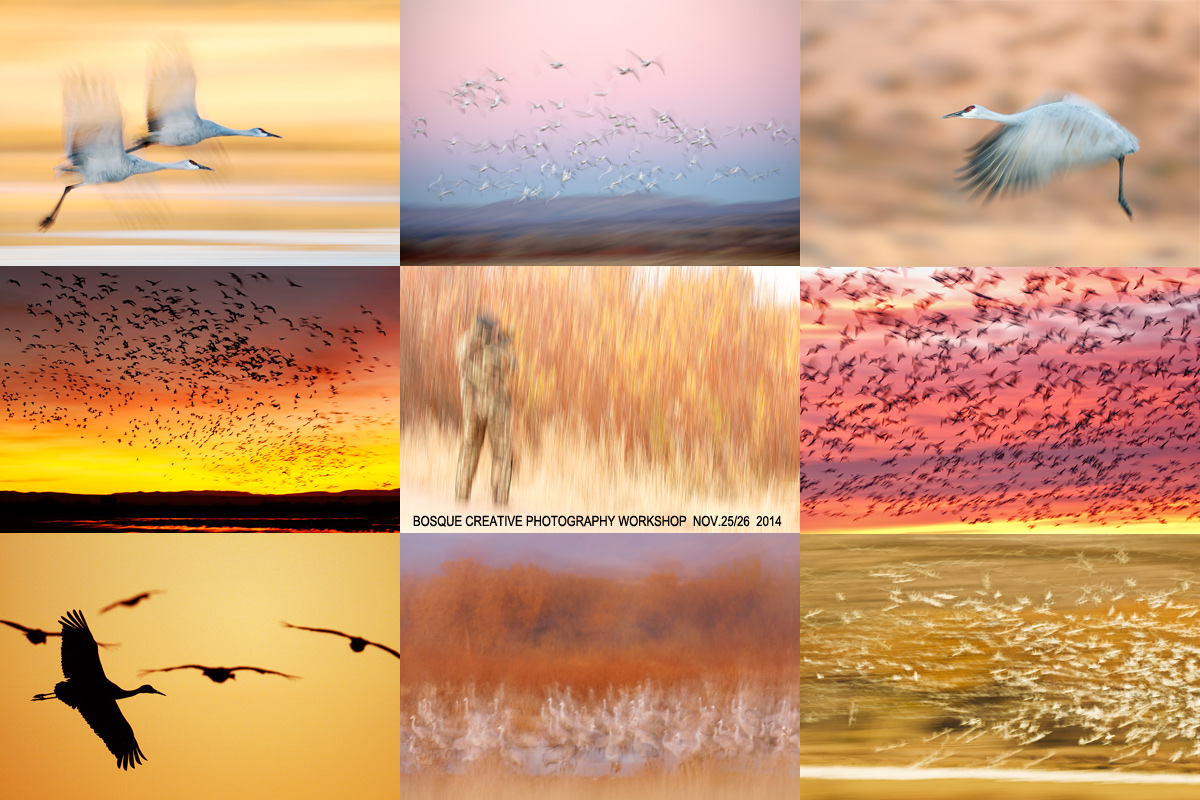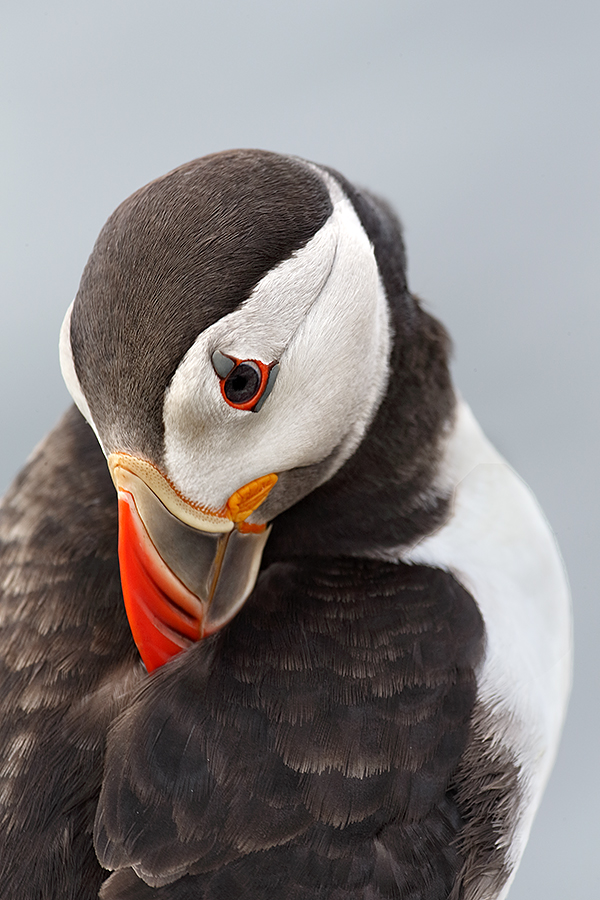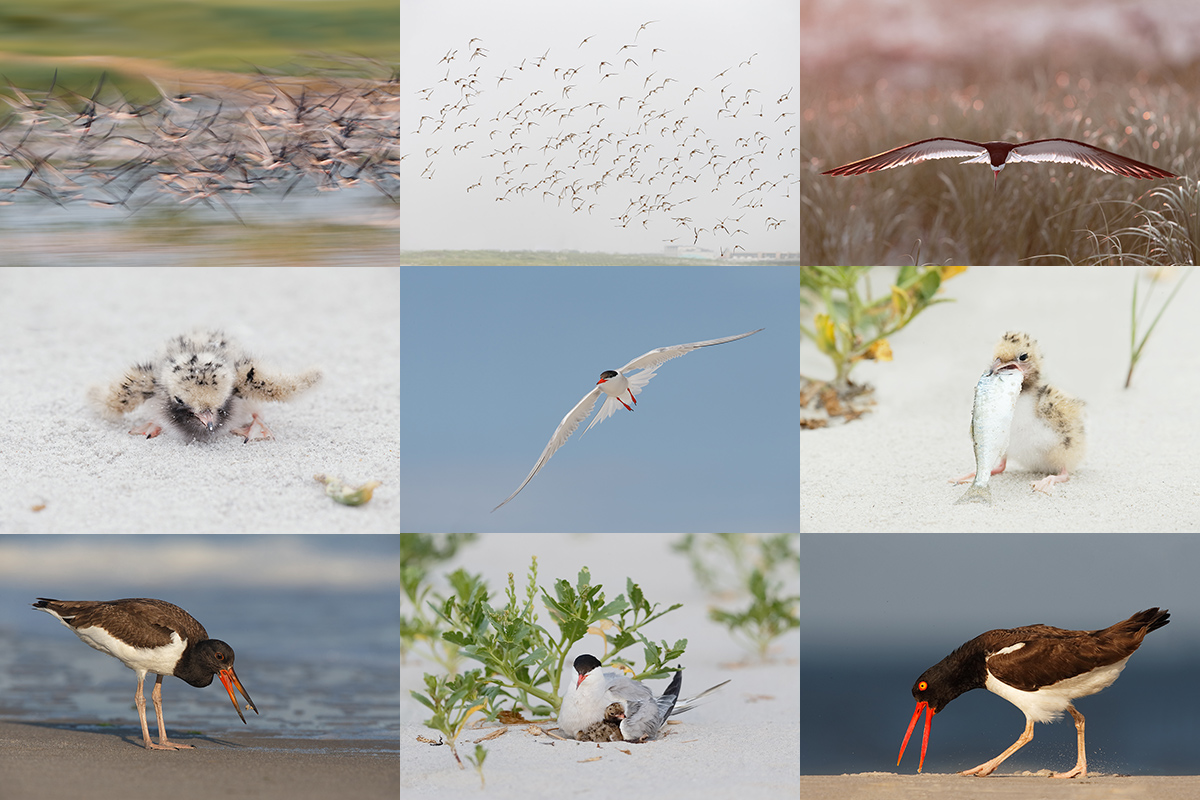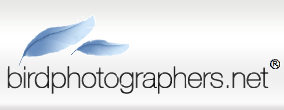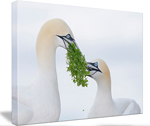July 24th, 2014
|
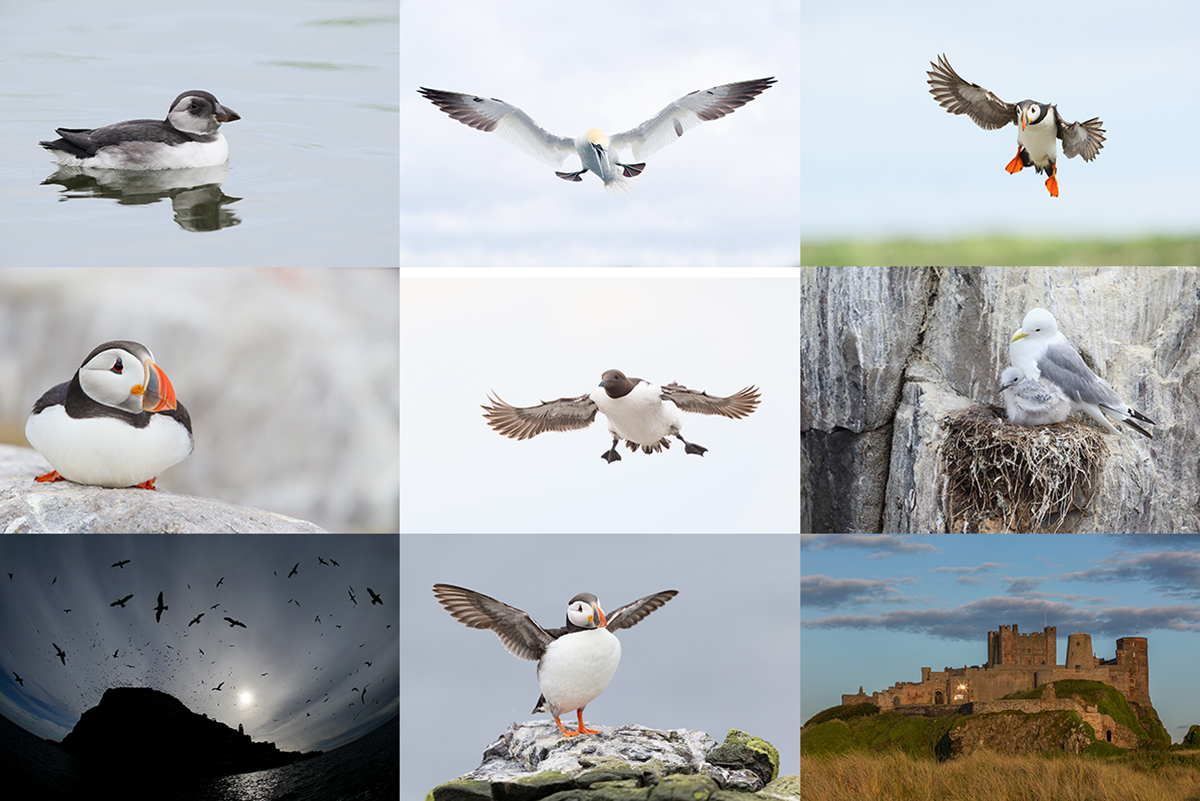
|
|
Images and card design copyright 2014: Arthur Morris/BIRDS AS ART. Click on the card to enjoy a spectacular larger version.
|
The Streak Continues: 236
This post was published just before 6am from my Mom’s home in Holbrook, NY. I had another good afternoon at Nickerson yesterday. I will be very busy packing this morning as I head to Nianctic, CT to catch a ride on a Sunbeam fleet boat to Great Gull Island for a week as an invited guest. My main target will be recently fledged Roseate Terns. They are among the most exquisitely beautiful young terns. If I am able to get online with my cell phone as I did last year, the streak will remain intact. If not, I will see you in a week or so.
This post, which took me 3 1/2 hours to prepare–making the cards is time-consuming, marks 236 consecutive days with a new enjoyable and educational blog post. With so many folks getting in the habit of using our B&H links and our Amazon logo-links, why quit now? April, May, June, and July have been fantastic as lots of folks are getting the message; using my affiliate links does not cost you a penny and helps support my efforts here. To show your appreciation, I do ask that you use our B&H and Amazon affiliate links on the right side of the blog for all of your purchases. Please check the availability of all photographic accessories in the BIRDS AS ART Online Store, especially Gitzo tripods, Wimberley tripod heads, and the like. We sell only what I have used and tested, and know that you can depend on. We will not sell you junk. We know the tools that you need to make creating great images easy and fun. And we are always glad to answer your gear questions via e-mail.
You can find the following items in the store: Gitzo tripods, Mongoose M3.6 and Wimberley heads, plates, low feet, and accessories, flash brackets, , Delkin e-film Pro Compact Flash Cards, LensCoat products, and our unique line-up of educational materials including ABP I & II, Digital Basics, Site and Set-up e-Guides, Canon and Nikon Camera Users and AF e-Guides, and MP-4 Photoshop video tutorials among others.
I would of course appreciate your using our B&H affiliate links for all of your major gear, video, and electronic purchases. For the photographic stuff mentioned in the paragraph above we, meaning BAA, would of course greatly appreciate your business. Here is a huge thank you to the many who have been using our links on a regular basis and visiting the BAA Online store as well.
|
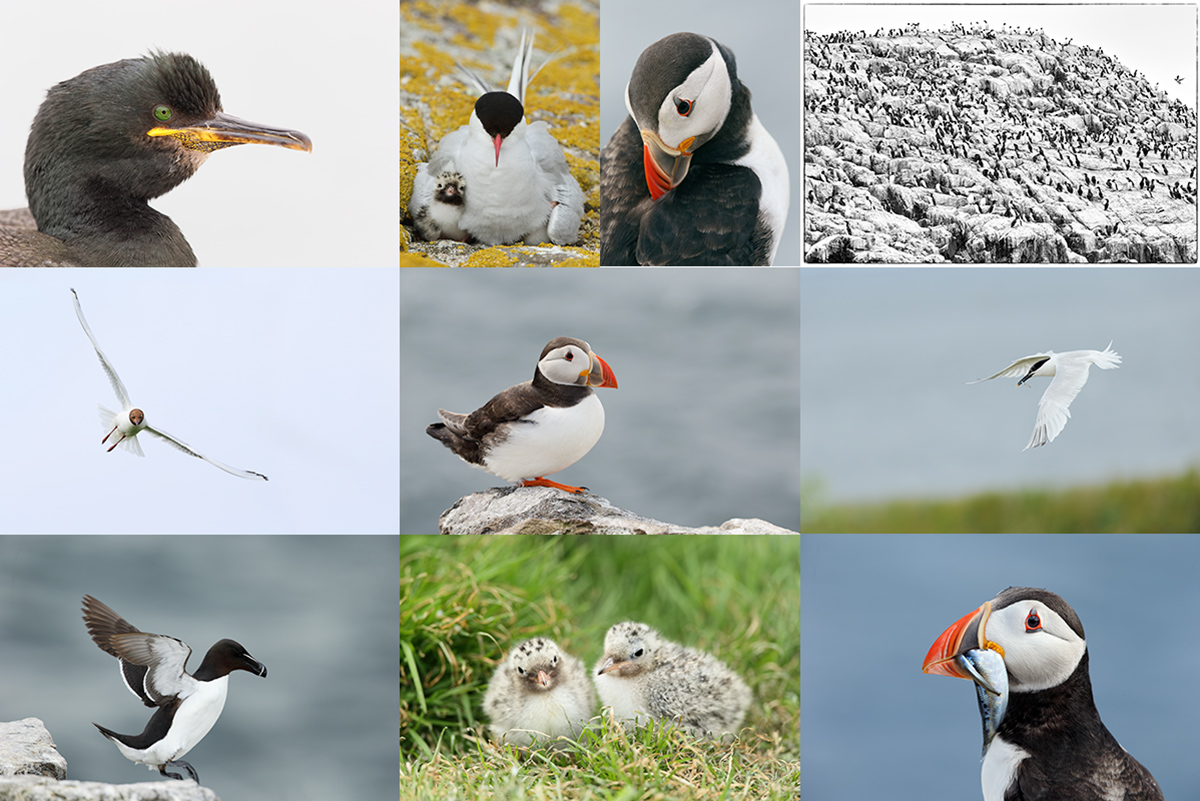
|
|
Images and card design copyright 2014: Arthur Morris/BIRDS AS ART. Click on the card to enjoy a spectacular larger version.
|
Puffins, Gannets, Murres, Razorbills, Terns–especially Arctic, Gulls, Shags, Chicks, and Castles!
As you know, our recent trip to the UK for puffins and gannets and more was a huge success. We are going back in 2015. Though the trip is being announced here formally for the first time, we already have 2 very Happy Campers signed up. If you have any questions or if you would like us to hold a spot for you pending the arrival of your deposit check (see below), please let me know via e-mail asap.
We will likely be running a similar trip to Ireland the week before; if you might consider that either separately or in addition to the UK trip announced below, please wait a bit on getting your flights.
|
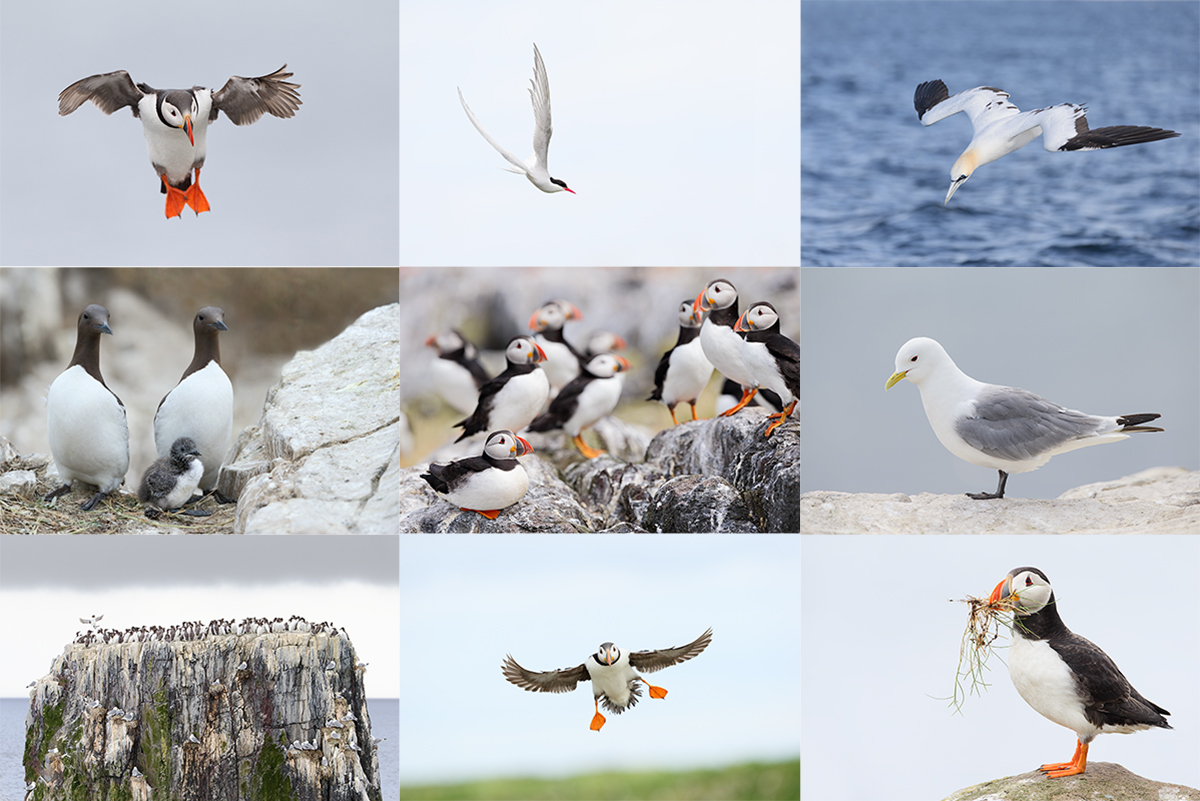
|
|
Images and card design copyright 2014: Arthur Morris/BIRDS AS ART. Click on the card to enjoy a spectacular larger version.
|
The 2015 UK Puffins and Gannets IPT
June 29 through July 5, 2015: $5499: Limit 10 photographers/Openings 7. Two great leaders: Denise Ippolito and Arthur Morris.
Here are the plans for next year: take a red eye from the east coast of the US on 28 June arriving in Edinburgh, Scotland on the morning of Monday 29 June (or simply meet us then either at the Edinburgh Airport (EDI) or later in the day at our cottages if you are driving your own vehicle either from the UK or from somewhere in Europe. Stay 7 nights in two gorgeous modern country cottages.
There are 5 days of planned puffin/seabird trips—weather permitting, and 1 full day of gannet photography with 2 sessions on the boat. (More info below.)
|
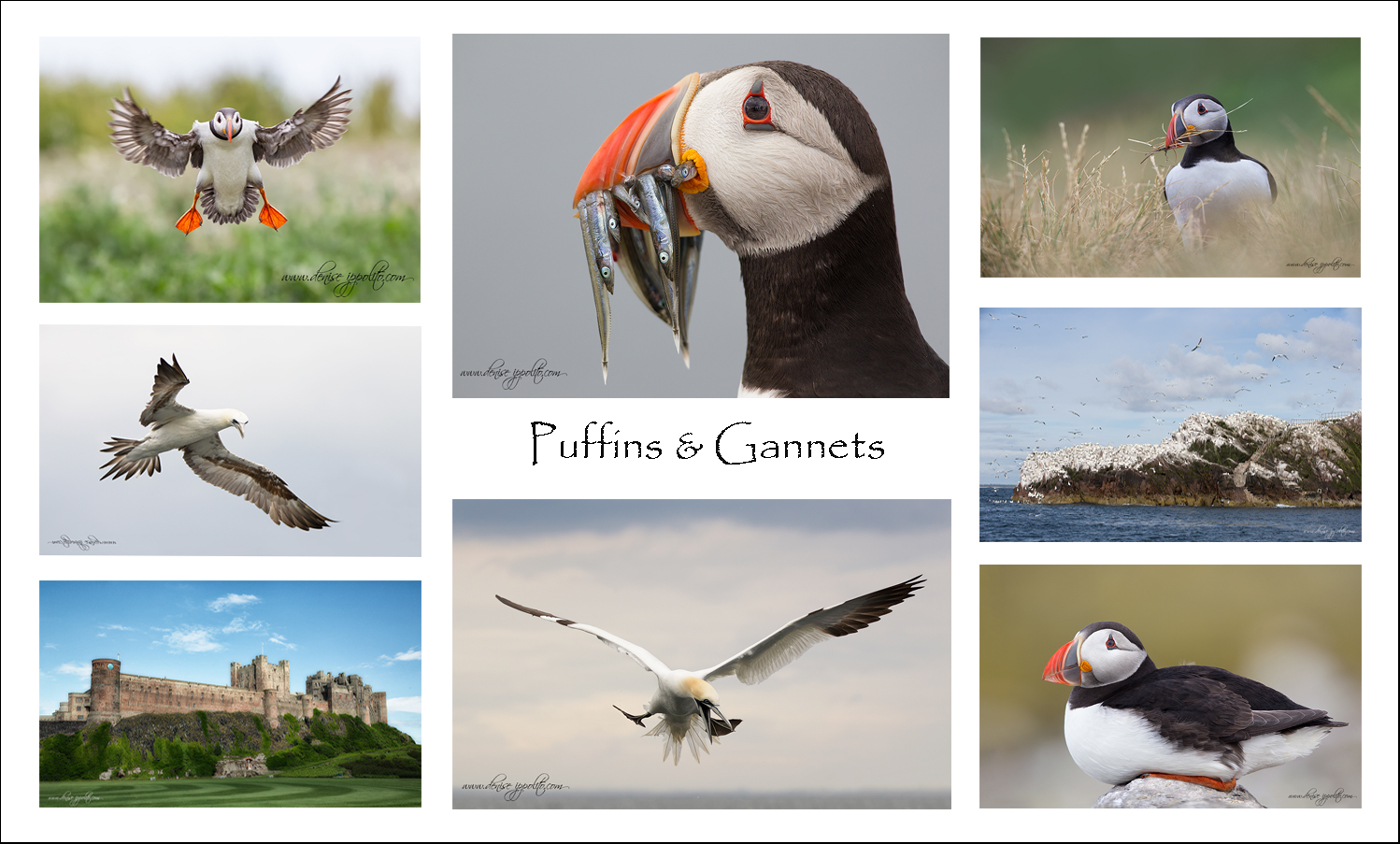
|
|
Images and card design copyright 2014: Denise Ippolito/A Creative Adventure. Click on the card to enjoy a spectacular larger version.
|
The Rest of the Fine Details
All breakfasts, lunches and dinners are included. All 5 puffins boat lunches will need to be prepared in advance, taken with, and consumed at your leisure. I usually eat mine on the short boat trip from one island to the other. Also included is a restaurant lunch on the gannet boat day and a farewell fine dining thank you dinner. The cost of your National Heritage Trust is also included; that covers the twice a day landing fees.
Plan to fly home on the early morning of Monday 6 July or to continue your stay or travels.
We are planning this as double-occupancy only but we should be able to arrange for singles by renting a 3rd cottage. We would need to know well in advance, i.e., soon, and it would be pricey and would need to be paid with your non-refundable deposit of $2,000. The shared rooms are decent-sized, each with two roomy single beds and a private bathroom. There are two king rooms available for couples. The upscale country-side cottages are beyond lovely with large living areas and lots of open space for image sharing and Photoshop lessons.
The single supplement is $1475. As we will be renting a third cottage the $1475 is due with your deposit and is also non-refundable.
If you are good to go please send your $2,000 deposit check now to save a spot. We do expect this workshop to sell out very quickly as we have already sold 2 slots even though the trip has not yet been formally announced till right now. Not to mention that everyone loves puffins. Please make your check out to “Arthur Morris” and send it to Arthur Morris/BIRDS AS ART, PO Box 7245, Indian Lake Estates, FL, 33855.
We do hope that you can join us.
Facebook
Be sure to like and follow BAA on Facebook by clicking on the logo link upper right. Tanks a stack!
Support the BAA Blog. Support the BAA Bulletins: Shop B&H here!
We want and need to keep providing you with the latest free information, photography and Photoshop lessons, and all manner of related information. Show your appreciation by making your purchases immediately after clicking on any of our B&H or Amazon Affiliate links in this blog post. Remember, B&H ain’t just photography!
…..
Amazon Canada
Many kind folks from north of the border, ay, have e-mailed stating that they would love to help us out by using one of our affiliate links but that living in Canada and doing so presents numerous problems. Now, they can help us out by using our Amazon Canada affiliate link by starting their searches by clicking here. Many thanks to those who have written.
Typos
In all blog posts and Bulletins, feel free to e-mail or to leave a comment regarding any typos, wrong words, misspellings, omissions, or grammatical errors. Just be right. 🙂
July 23rd, 2014 The Streak Continues: 235
This post was published just before 6am from my Mom’s home in Holbrook, NY. I decided to sleep in this morning with clear skies and SW winds; wind against sun conditions make things very difficult as nearly all of the birds will be flying, landing, and facing into the wind. I am not a big fan of photographing bird butts. I should get back to the beach late this afternoon after a very busy day of work. Tomorrow afternoon I head out to Great Gull Island for a week as an invited guest. My main target will be recently fledged Roseate Terns. They are among the most exquisitely beautiful young terns.
This post, which took me 1 1/2 hours to prepare, marks 235 consecutive days with a new enjoyable and educational blog post. With so many folks getting in the habit of using our B&H links and our Amazon logo-links, why quit now? April, May, June, and July have been fantastic as lots of folks are getting the message; using my affiliate links does not cost you a penny and helps support my efforts here. To show your appreciation, I do ask that you use our B&H and Amazon affiliate links on the right side of the blog for all of your purchases. Please check the availability of all photographic accessories in the BIRDS AS ART Online Store, especially Gitzo tripods, Wimberley tripod heads, and the like. We sell only what I have used and tested, and know that you can depend on. We will not sell you junk. We know the tools that you need to make creating great images easy and fun. And we are always glad to answer your gear questions via e-mail.
You can find the following items in the store: Gitzo tripods, Mongoose M3.6 and Wimberley heads, plates, low feet, and accessories, flash brackets, , Delkin e-film Pro Compact Flash Cards, LensCoat products, and our unique line-up of educational materials including ABP I & II, Digital Basics, Site and Set-up e-Guides, Canon and Nikon Camera Users and AF e-Guides, and MP-4 Photoshop video tutorials among others.
I would of course appreciate your using our B&H affiliate links for all of your major gear, video, and electronic purchases. For the photographic stuff mentioned in the paragraph above we, meaning BAA, would of course greatly appreciate your business. Here is a huge thank you to the many who have been using our links on a regular basis and visiting the BAA Online store as well.
Used Mint Canon EF 500mm f/4L IS II Lens for Sale
Aubrey Blalock is offering a used Canon EF 500mm f/4L IS II lens in like new, near-mint condition–used only once, for $9,199. The sale includes the original leather front lens cap, the rear lens cap, the lens trunk, a LensCoat, and an Arca-Swiss compatible Really Right Stuff Low Foot. Seller pays insured shipping to continental US addresses. The lens will not ship until your check clears.
Please contact Aubrey via e-mail or by phone at 1-409-767-3155. As this lens sells new at B&H $10,499 you can save $1300 and wind up with the state of the art 500mm lens. To see if the 500 II is better for you than the 600 II click here. The 500 II is lighter than the 200-400 and is of course lighter than the 600 II. It is easily hand holdable by most folks. It features the incredible 4-stop IS system and is capable of producing razor sharp images with either the 1.4X III or the 2X III TC.
Check out more great used lens options here. I have added lots of great new listings in the last several days including an 800mm f/5.6L IS, the close-focusing Canon 300mm f/4L IS that makes a great starter lens for beginning bird photographers, a very versatile Nikkor 28-300mm 3.5-5.6 G ED VR, and a Canon 70-200mm f/2.8L IS II, my favorite mid-range telephoto zoom lens. Lingering are a 400 DO, a Canon EOS-1D Mark III, and a Canon EF 600mm f/4L IS USM lens, the “old six.” The latter would be a great lens for someone young and strong. Or old and strong.
The Question: Did Murphy’s Law Strike Again? Or Not?
Thanks again to Dr. Greg Gulbransen who recently has become quite addicted to bird photography. And quite good at it. He has been carefully monitoring the status of the eggs and nests at a local Least Tern colony and kindly shared images of the chick in this photo with me when–having just hatched–it was a wet mess of feathers. I then had the pleasure of photographing this fluffy blonde chick on consecutive mornings, the first alone, the second with Joe Senzatimore, a friend from BPN, and with old friend Tom Pfeiffer. Tom invited me to dinner at his home about a zillion years ago on the evening that I did a slide program (with real slides in a carousel!) for an out-east Audubon society. We have remained great friends ever since.
Did Mr. Murphy bite me in the butt again on this occasion? Did I do something drastic in Photoshop to salvage the optimized image above? Or is this, like the last few of which I have asked the same question, right out of camera? Be sure to click on the image to enlarge it before you put on your Photoshop Detective’s cloak. Another way to ask the same question is, “What could possibly have gone wrong in this wonderful situation?”
Facebook
Be sure to like and follow BAA on Facebook by clicking on the logo link upper right. Tanks a stack!
Support the BAA Blog. Support the BAA Bulletins: Shop B&H here!
We want and need to keep providing you with the latest free information, photography and Photoshop lessons, and all manner of related information. Show your appreciation by making your purchases immediately after clicking on any of our B&H or Amazon Affiliate links in this blog post. Remember, B&H ain’t just photography!
…..
Amazon Canada
Many kind folks from north of the border, ay, have e-mailed stating that they would love to help us out by using one of our affiliate links but that living in Canada and doing so presents numerous problems. Now, they can help us out by using our Amazon Canada affiliate link by starting their searches by clicking here. Many thanks to those who have written.
Typos
In all blog posts and Bulletins, feel free to e-mail or to leave a comment regarding any typos, wrong words, misspellings, omissions, or grammatical errors. Just be right. 🙂
July 22nd, 2014 The Streak Continues: 234
This post was published at 4:55am from my Mom’s home in Holbrook, NY. I am headed out at 5:15am for the beach. Was in bed early again last night.
This post, which took me 1 1/2 hours to prepare, marks 234 consecutive days with a new enjoyable and educational blog post. With so many folks getting in the habit of using our B&H links and our Amazon logo-links, why quit now? April, May, June, and July have been fantastic as lots of folks are getting the message; using my affiliate links does not cost you a penny and helps support my efforts here. To show your appreciation, I do ask that you use our B&H and Amazon affiliate links on the right side of the blog for all of your purchases. Please check the availability of all photographic accessories in the BIRDS AS ART Online Store, especially Gitzo tripods, Wimberley tripod heads, and the like. We sell only what I have used and tested, and know that you can depend on. We will not sell you junk. We know the tools that you need to make creating great images easy and fun. And we are always glad to answer your gear questions via e-mail.
You can find the following items in the store: Gitzo tripods, Mongoose M3.6 and Wimberley heads, plates, low feet, and accessories, flash brackets, , Delkin e-film Pro Compact Flash Cards, LensCoat products, and our unique line-up of educational materials including ABP I & II, Digital Basics, Site and Set-up e-Guides, Canon and Nikon Camera Users and AF e-Guides, and MP-4 Photoshop video tutorials among others.
I would of course appreciate your using our B&H affiliate links for all of your major gear, video, and electronic purchases. For the photographic stuff mentioned in the paragraph above we, meaning BAA, would of course greatly appreciate your business. Here is a huge thank you to the many who have been using our links on a regular basis and visiting the BAA Online store as well.
This Just In: 12:15 pm ET: Used Mint 500 II for Sale
Aubrey Blalock is offering a used Canon EF 500mm f/4L IS II lens in like new, near-mint condition–used only once, for $9,199. Includes the original leather front lens cap, the rear lens cap, the lens trunk, a LensCoat, and an Arca-Swiss compatible Really Right Stuff Low Foot. Seller pays insured shipping to continental US addresses. The lens will not ship until your check clears.
Please contact Aubrey via e-mail or by phone at 1-409-767-3155. As the last two 300 IIs did, this one should sell instantly.
|
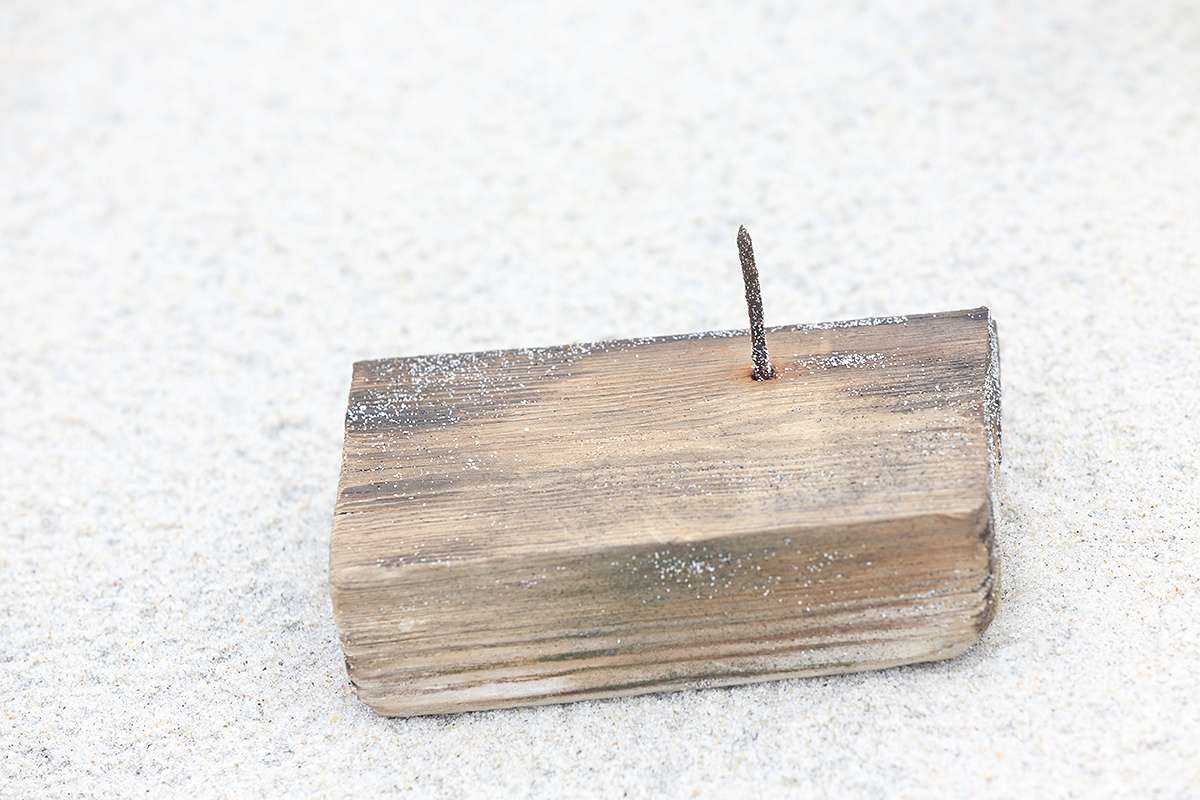
|
|
The Rusty Nail in an Old Section of 2X4
|
Murphy’s Law at Work in the Fog Part I
At some point in the early morning I walked back to my new fat wheel beach cart for some reason or another. And got a big surprise. I felt a stabbing pain in my left foot, shifted my weight back to my right foot, bent over, and pulled the board and the nail that you see above out of my foot. It had punctured my surf bootie and gone about 3/8″ into the ball of my left foot. I immediately consulted the doctor. The doctor being Dr. Greg Gulbransen, a pediatrician whom you have read about on the blog before here.
He asked me if I had had a tetanus shot in the last 10 years and I said that I probably had had one but was not positive. He kindly volunteered to give me a tetanus shot the next morning before we hit the beach. Denise suggested that I wash the foot with in the ocean as the saltwater would cleanse the wound. Greg agreed. So I walked into the shallow surf without removing my surf booties and sloshed my foot around. A lifeguard came running up to me from afar and told me that because of the reduced visibility that I needed to get out of the water. He was actually nice about it. The foot hurt pretty good but only for about 30 minutes….
The 5D III vs. the 1D X
I have long argued that if you are not photographing birds in flight or in action or wildlife in action where the super-fast frame rate of the 1D X offers a huge advantage over the EOS-5D Mark III, that the 5D III is as good or better a camera body than the 1D X as it offers a lot more pixels on the subject at the cost of slightly slower initial focusing acquisition (due to the 5D III’s less powerful battery). Simply pre-focusing the lens manually pretty much eliminates that minor problem.
Murphy’s Law at Work in the Fog Part II
As there was not much going on that morning in terms of flight or action I decided to switch from my 1D X to the 5D III and create some images for a future blog post on the subject. After a very few frames Mr. Murphy struck again; the LCD screen on the back of my much-used 5D III flickered and then crapped out. I could see the info in the viewfinder and I could see the top LCD screen but there was no image playback and thus no histogram and no blinkies. I was so confident in my ability to get a good exposure even when flying in the dark that I continued to the 5D III. The image above was created without the benefits of playback, a histogram, or blinkies. As I have long espoused, getting a good digital exposure is easy for those who study and practice just a bit.
The Image Design
Note my careful choice of perspective here that resulted in the bird being placed in the opening between the two bunches of grass…. Things like that do not happen by accident.
|
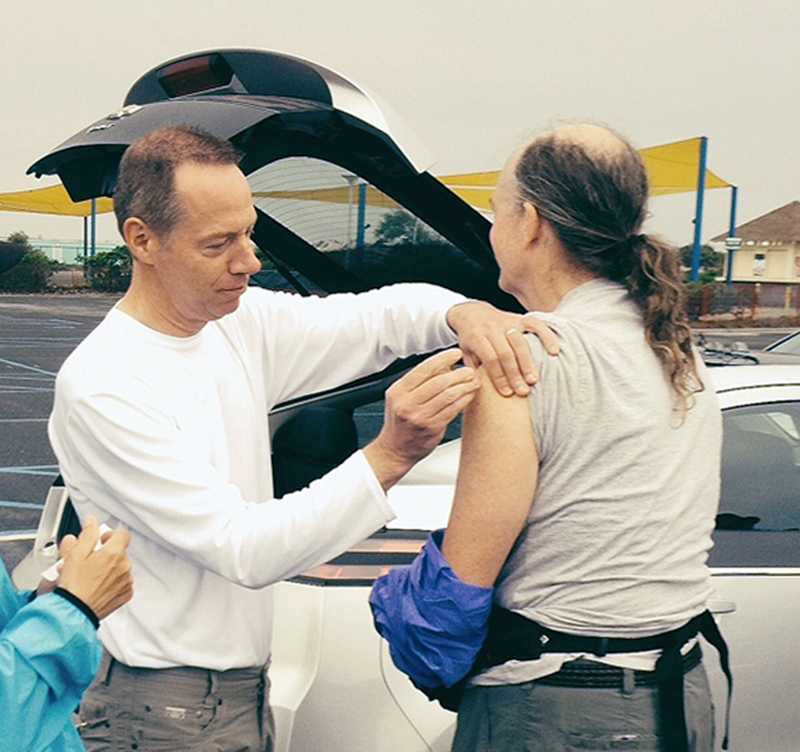
|
|
A Sticky Situation
|
The Moment of Truth
Above, Dr. Greg gives me the often quite painful and sometimes dreaded tetanus injection. The truth be told, I did not feel a thing. Once I knew that Greg was done, I asked, “When are you going to give me the shot?” Dr. Greg had heard that one before…. Denise Ippolito observed with apparent glee. Though we could find no entry wound I am feeling fine and so is my left foot.
Facebook
Be sure to like and follow BAA on Facebook by clicking on the logo link upper right. Tanks a stack!
Support the BAA Blog. Support the BAA Bulletins: Shop B&H here!
We want and need to keep providing you with the latest free information, photography and Photoshop lessons, and all manner of related information. Show your appreciation by making your purchases immediately after clicking on any of our B&H or Amazon Affiliate links in this blog post. Remember, B&H ain’t just photography!
…..
Amazon Canada
Many kind folks from north of the border, ay, have e-mailed stating that they would love to help us out by using one of our affiliate links but that living in Canada and doing so presents numerous problems. Now, they can help us out by using our Amazon Canada affiliate link by starting their searches by clicking here. Many thanks to those who have written.
Typos
In all blog posts and Bulletins, feel free to e-mail or to leave a comment regarding any typos, wrong words, misspellings, omissions, or grammatical errors. Just be right. 🙂
July 21st, 2014 The Streak Continues: 233
This post was published at 2:38am from my Mom’s home in Holbrook, NY. I am headed out at 4:15am for the beach. Was in bed early.
This post, which took me 3 hours to prepare, marks 233 consecutive days with a new enjoyable and educational blog post. With so many folks getting in the habit of using our B&H links and our Amazon logo-links, why quit now? April, May, June, and July have been fantastic as lots of folks are getting the message; using my affiliate links does not cost you a penny and helps support my efforts here. To show your appreciation, I do ask that you use our B&H and Amazon affiliate links on the right side of the blog for all of your purchases. Please check the availability of all photographic accessories in the BIRDS AS ART Online Store, especially Gitzo tripods, Wimberley tripod heads, and the like. We sell only what I have used and tested, and know that you can depend on. We will not sell you junk. We know the tools that you need to make creating great images easy and fun. And we are always glad to answer your gear questions via e-mail.
You can find the following items in the store: Gitzo tripods, Mongoose M3.6 and Wimberley heads, plates, low feet, and accessories, flash brackets, , Delkin e-film Pro Compact Flash Cards, LensCoat products, and our unique line-up of educational materials including ABP I & II, Digital Basics, Site and Set-up e-Guides, Canon and Nikon Camera Users and AF e-Guides, and MP-4 Photoshop video tutorials among others.
I would of course appreciate your using our B&H affiliate links for all of your major gear, video, and electronic purchases. For the photographic stuff mentioned in the paragraph above we, meaning BAA, would of course greatly appreciate your business. Here is a huge thank you to the many who have been using our links on a regular basis and visiting the BAA Online store as well.
|
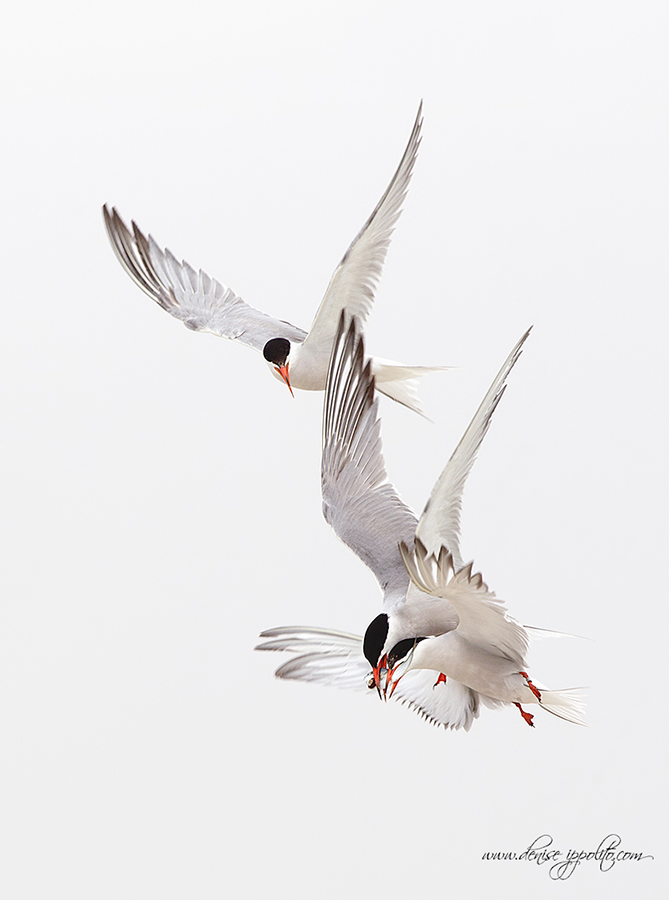
|
|
This image was created on the Nickerson Baby Beach Nesting Birds IPT by Denise Ippolito with the hand held Canon EF 300mm f/2.8L IS II USM lens, Canon Extender EF 2X III, and the EOS-1D Mark IV now replaced by the Canon EOS-1D X.
Shutter Button AF. Click on the image to enjoy a larger version.
Image #1: Common Terns battling in flight. Image courtesy of and copyright 2014: Denise Ippolito/A Creative Adventure
|
Poor, Poor Denise Ippolito with “Only” the 300mm f/2.8L IS II…
I opted to make the trip to the UK without my beloved 600mm f/4L IS II because of concerns involving my damaged but recovering right shoulder. Co-leader Denise Ippolito opted to make the trip to the UK without her 600 II because of concerns involving carry-on weight and travel restrictions. I left instructions with Jim at the BA office to ship my 600 II to my Mom’s house on Long Island so that I would have it–shoulder permitting, for the Nickerson IPT. As we traveled directly from the Newark Airport and then to the NECCC event and then continued on to the IPT motel, Denise was left with “only” her 300mm f/2.8L IS II as her long lens for Nickerson. With both TC of course. I thought that perhaps her not shipping her 600 to my Mom’s might have been a mistake. Hand holding her 300 II for almost the entire 3 days, she proved me wrong in spades.
As above, hand holding allows you to get on and follow the action more quickly and easily than when working on a tripod. And with the 300 II/2X III/1D IV combo she had plenty of reach: 780mm, 15.6X magnification.
|
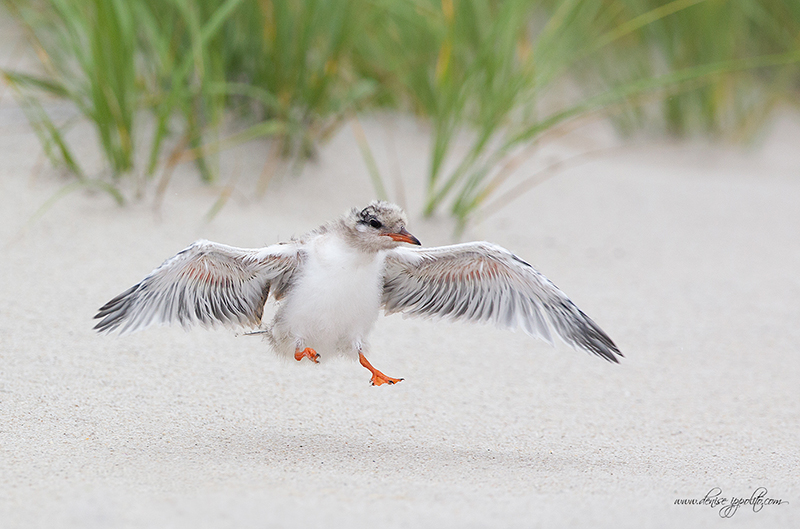
|
|
This image was created on the Nickerson Baby Beach Nesting Birds IPT by Denise Ippolito with the hand held Canon EF 300mm f/2.8L IS II USM lens, Canon Extender EF 1.4X III, and the EOS-1D Mark IV now replaced by the Canon EOS-1D X.
Shutter Button AF. Click on the image to enjoy a larger version.
Image #2: Common Tern, large chick jumping. Image courtesy of and copyright 2014: Denise Ippolito/A Creative Adventure
|
Jumping Tern Chick
Here again we see one of the main advantages of hand holding: being able to get quickly on the subject and acquire focus. Don’t be fooled however: for many, hand holding the 300 II over time requires strength and stamina and getting on the bird requires superior hand-eye coordination. In addition, Denise, though known primarily for her flower and creative photography, knows bird behavior. That enables her to anticipate the action as she did above.
|
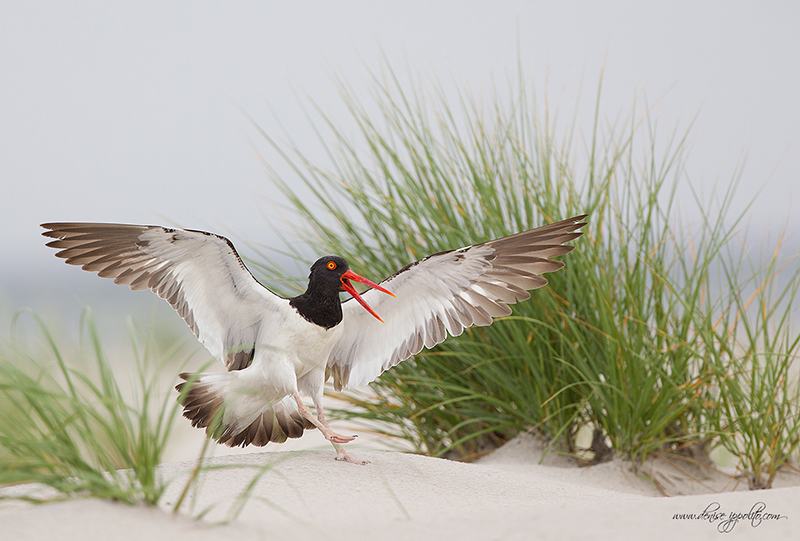
|
|
This image was created on the Nickerson Baby Beach Nesting Birds IPT by Denise Ippolito with the hand held Canon EF 300mm f/2.8L IS II USM lens, Canon Extender EF 1.4X III, and the EOS-1D Mark IV now replaced by the Canon EOS-1D X.
Shutter Button AF. Click on the image to enjoy a larger version.
Image #3: American Oystercatcher landing, screaming. Image courtesy of and copyright 2014: Denise Ippolito/A Creative Adventure
|
Landing Oystercatcher
Please re-read my comments on the jumping tern chick image above….
The Flatfish Dinner
Here Denise was disappointed with herself as she just clipped the last primary of the adult’s right wing. She showed off her formidable Photoshop skills by completing the repair with the Clone Stamp Tool. From where I sit, this was is incredible image that features frantic action and in addition is incredibly sharp. How she gets the lens on these situations and acquires sharp focus so quickly is beyond me.
|
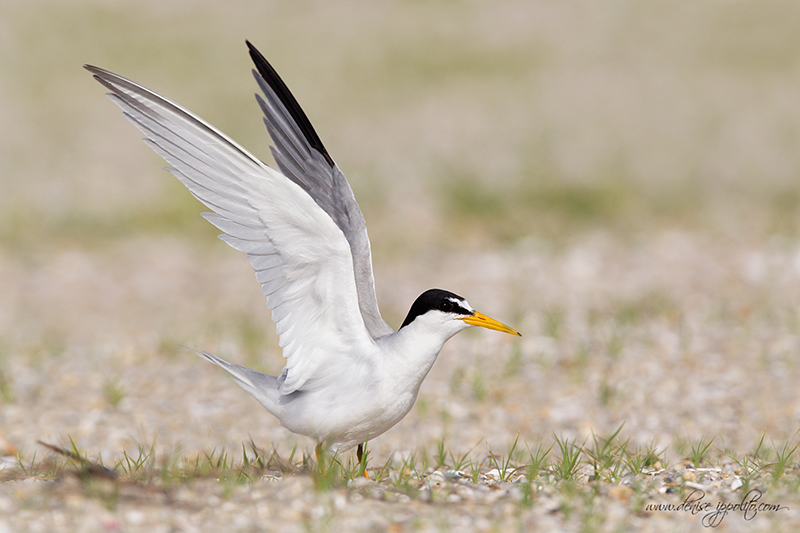
|
|
This image was created on the Nickerson Baby Beach Nesting Birds IPT by Denise Ippolito with the hand held Canon EF 300mm f/2.8L IS II USM lens, Canon Extender EF 2X III, and the EOS-1D Mark IV now replaced by the Canon EOS-1D X.
Shutter Button AF. Click on the image to enjoy a larger version.
Image #5: Least Tern, wings-up landing display. Image courtesy of and copyright 2014: Denise Ippolito/A Creative Adventure
|
Wings-up Landing Display
Here the race again went to the young, the fast, and the well-prepared. I was still setting my up gear when Denise created this image. Even though we had a few similar chances after I was in place I just could not get the tripod-mounted 600 II on the bird fast enough to acquire focus; the bird kept its wings raised for only a second or two at most after landing….
|
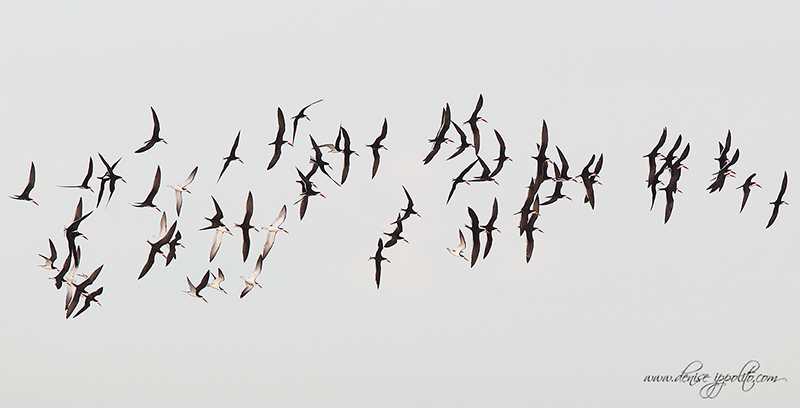
|
|
This image was created on the Nickerson Baby Beach Nesting Birds IPT by Denise Ippolito with the hand held Canon EF 300mm f/2.8L IS II USM lens, Canon Extender EF 2X III, and the EOS-1D Mark IV now replaced by the Canon EOS-1D X.
Shutter Button AF. Click on the image to enjoy a larger version.
Image #6: Black Skimmers, flock in flight pano. Image courtesy of and copyright 2014: Denise Ippolito/A Creative Adventure
|
Black Skimmers, Flock in Flight Pano
Here Denise showcases here artistic side with a lovely pano crop. In situations like this, knowing exactly when to press the shutter button is the key to create a successful images; pointing and shooting without being aware of the shape of the flock as it fluxes and without concern for compositional balance simply does not work….
|
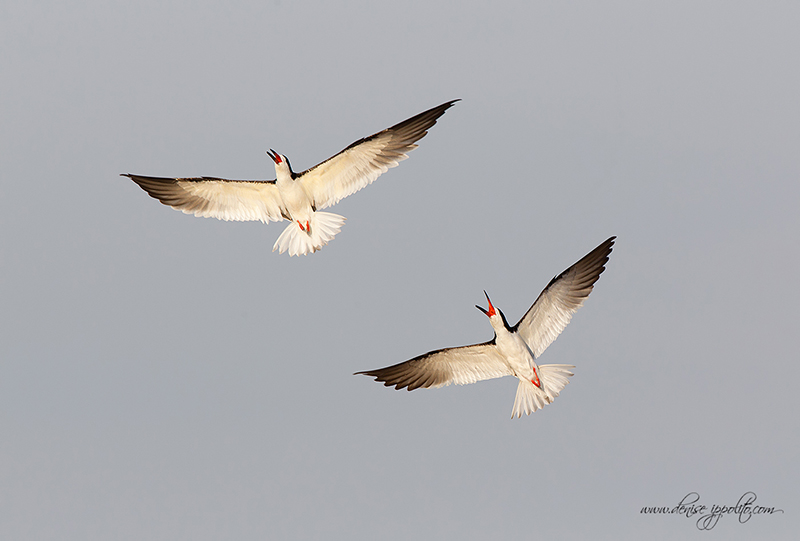
|
|
This image was created on the Nickerson Baby Beach Nesting Birds IPT by Denise Ippolito with the hand held Canon EF 300mm f/2.8L IS II USM lens, Canon Extender EF 1.4X III, and the EOS-1D Mark IV now replaced by the Canon EOS-1D X.
Shutter Button AF. Click on the image to enjoy a larger version.
Image #7: Black Skimmers battling. Image courtesy of and copyright 2014: Denise Ippolito/A Creative Adventure
|
Bad Luck for Me 🙂
I had been sitting behind my lowered tripod for near 90 minutes doing skimmer flight photography. My butt hurt so badly that I got up to stretch. Ten seconds after I stood up I missed the best and only skimmer aerial battle of the day. One of the participants, Dave Klein, got a very similar, possibly slightly better image of pretty much the same instant in time. You stretch, you lose.
|
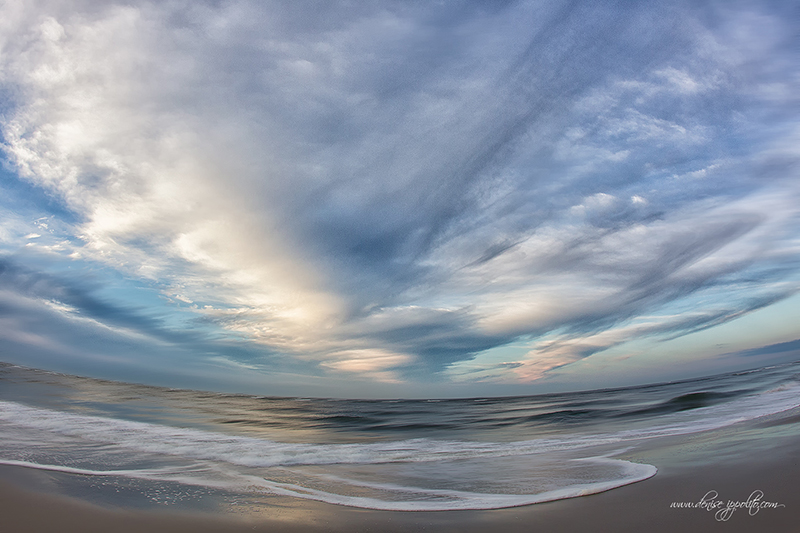
|
|
This image was created on the Nickerson Baby Beach Nesting Birds IPT by Denise Ippolito with the hand held Canon 15mm fish eye lens now replaced by the Canon EF 8-15mm f/4L Fisheye USM Fisheye Ultra-Wide Zoom Lens and the EOS-1D Mark IV now replaced for landscape photography by the Canon EOS 5D Mark III .
Shutter Button AF. Click on the image to enjoy a larger version.
Image #8: Sea, Surf, and Sky Fish Eye. Image courtesy of and copyright 2014: Denise Ippolito/A Creative Adventure
|
Sea, Surf, and Sky Fish Eye
Here Denise shows off her artistic sense of image design as well as her impeccable timing.
Image Question
What does this seascape image have to do with the timing of the shutter release?
This Just In: 10:50am ET: Another Used Mint 300 II for Sale
Sale Pending/Sold Instantly
Aubrey Blalock is offering a used Canon EF 300mm f/2.8L IS II lens in like new, near-mint condition–used only twice, for $6,399. Includes factory software upgrade, the original front lens cap, a LensCoat, and an Arca-Swiss compatible Really Right Stuff Low Foot. Seller pays insured shipping to continental US addresses. The lens will not ship until your check clears.
Please contact Aubrey via e-mail or by phone at 1-409-767-3155. As yesterday’s 300 !1 did, this one should sell instantly.
Your Favorite?
Please take a moment to leave a comment and let us know which of Denise’s great images is your very favorite. And please let us know why. If you think that Denise is a great bird photographer, you are right. But you should see her flowers…. Do think about joining us on next spring’s Tulips and a Touch of Holland IPT. See below for details.
If…
If this post inspires you to purchase a new 300 II, please consider using one of our B&H affiliate links above. Same goes for the TCs. As predicted, the 300 II that was listed only yesterday sold instantly. You can see lots more great new ued photo gear listings here.
Facebook
Be sure to like and follow BAA on Facebook by clicking on the logo link upper right. Tanks a stack!
|
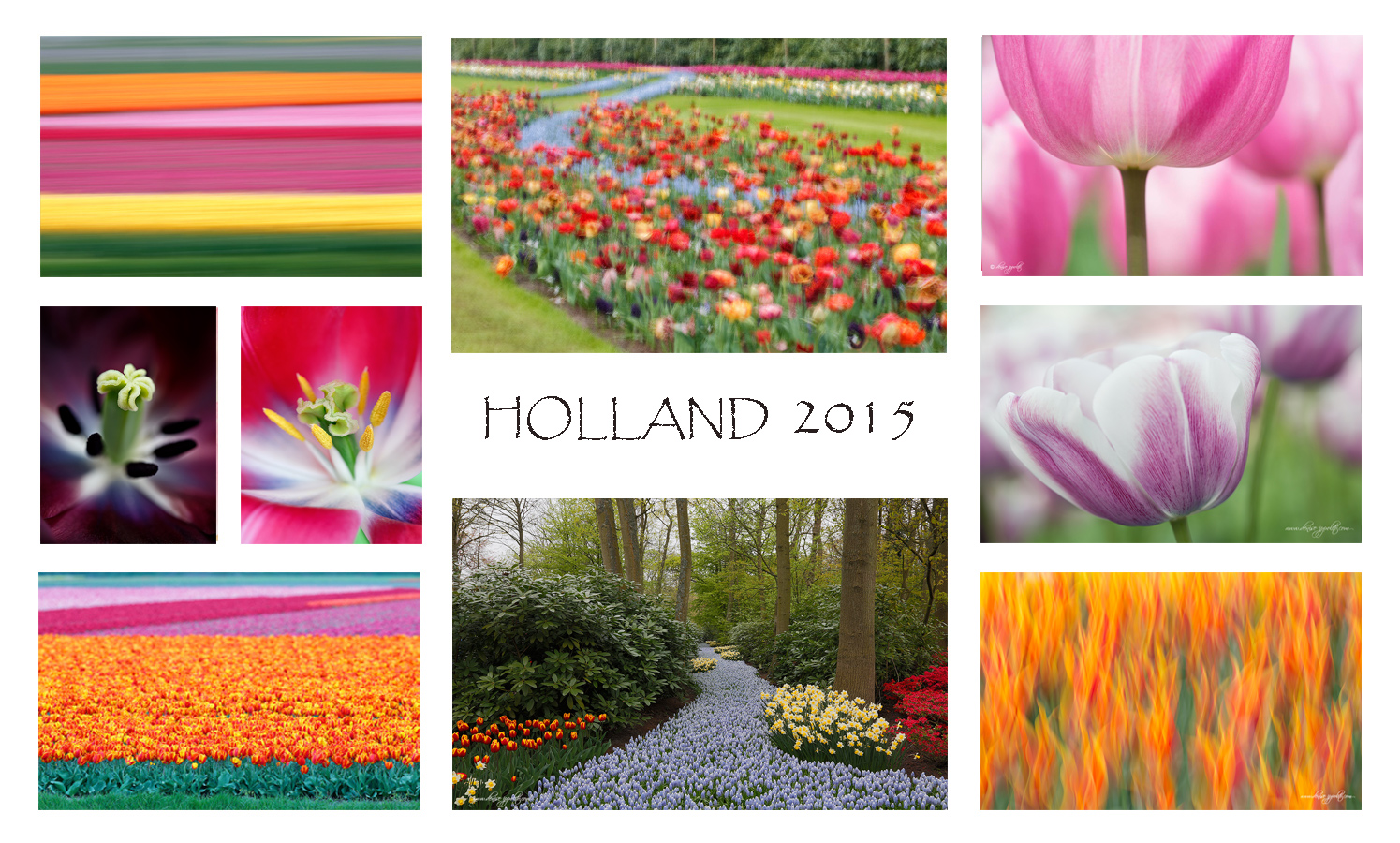
|
|
Denise and artie hope that you can join them next spring in Holland and learn to improve both the technical and creative aspects of your flower (and street) photography.
|
7 1/2-Day/8-Night: A Creative Adventure/BIRDS AS ART/Tulips & A Touch of Holland Instructional Photo-Tour (IPT)
Keukenhof—Delft—Amsterdam–Flower Fields—Kinderdijk
April 9 -April 16, 2015: $4995. Limit: 12 photographers/Openings 10. Four more to make the trip a go.
This trip needs 6 registrants to run so please do not purchase your plane tickets until you hear from us that the trip is a go.
Join Denise Ippolito, the author of “Bloomin’ Ideas,” and Arthur Morris, Canon Explorer of Light Emeritus, for a great trip to Holland in mid-April 2015. Day 1 of the IPT will be April 9, 2015. We will have a short afternoon get-together and then our first photographic session at the justly-famed Keukenhof. Our last day, Day 8, April 16 will be a full day of photography.
The primary subjects will be tulips and orchids at Keukenhof and the spectacularly amazing tulip, hyacinth, and daffodil bulb fields around Lisse and points north. We will spend one full day in Amsterdam. There will be optional visits to the Van Gogh Museum, the Anne Frank House and/or the Rijk’s Museum. Street photography and sightseeing will be other options. We will spend a half day at Kinderdijk where we will be photographing the windmills and doing some creative photography. We will spend an afternoon in the lovely Dutch town of Delft where we will do some street photography and shopping. There is an optional church tower tour/climb. We will also enjoy a superb fine dining experience in a traditional restaurant.
Other than the arrival date: April 9, Day 1, and the date of our last day of photography on April 16, Day 8, there is no set itinerary. We will check the weather and play everything by ear to maximize the photographic opportunities. We will try to do Amsterdam, Delft, and especially Kinderdijik, on cloudy days.
There are several huge pluses to this trip. First off, denise is an amazingly skilled and caring instructor. Both her creativity and her willingness to share and to help beginning and intermediate photographers are unmatched. And though artie has learned a ton about flower photography from denise, their styles and techniques do vary considerably. You will have a chance to be counseled by and to learn from both of them. While denise will hunt you down to help you, artie’s teaching style is more “the closer you stay to me, the more you will learn.” Both leaders consistently inspire the participants. And each other. The sky, of course, is the limit.
You will learn to create tight abstracts, how best to use depth-of-field (or the lack thereof) to improve your flower photography, how to get the right exposure and make sharp images every time, how to see the best shot, and how to choose the best perspective for a given situation. And you will of course learn to create a variety of pleasingly blurred flower images. If you bring a long lens, you will learn to use it effectively for flower photography. Denise’s two favorite flower lenses are the Canon EF 100mm f/2.8L Macro IS USM lens and the Canon EF 24-105mm f/4L IS USM lens. Mine are the Canon 100mm f/2.8L IS macro , the Canon EF 180mm f/3.5L Macro USM lens ,and the Canon EF 300mm f/2.8L IS II USM lens, all almost always on a tripod. Often with extension tubes and/or either the 1.4X or the 2X (with the 300 II) teleconverters. Denise hand holds a great deal of the time. For flower field blurs denise uses the same lenses mentioned above along with her new 70-200mm f/2.8L IS III lens. Artie’s favorite is that same 70-200 often with a 1.4X TC but he uses both the new Canon EF 24-70mm f/2.8L II USM lens and the 300 II as well. Both of us use and love the Canon EOS 5D Mark IIIfor all of our flower photography. The in-camera HDR and Multiple Exposure features are a blast.
One of the great advantages of our trip is that we will be staying in a single, strategically located hotel that is quite excellent. Do note that all ground transfers to and from Schipol Airport will be via the free hotel shuttle bus.
What’s included: Eight hotel nights. All ground transportation except for airport transfers as noted above. In-the-field instruction and small group image review and Photoshop sessions. All meals from dinner on Day 1 through dinner on Day 8. There is good food at the hotel and we will be dining there on occasion; whenever you order off the menu be it at the hotel or at another restaurant only the cost of your main course is included. On these occasions the cost of soups, appetizers, salads, sodas and other beverages, alcoholic drinks and wine, bottled water, and desserts are not included. Snacks, personal items, phone calls, etc. are also not included. The cost of bus or train transportation to and from Amsterdam (about $20 US), museum entry, and tower and church entry fees (optional) are likewise not included.
Beware of seemingly longer, slightly less expensive tours that include travel days and days sitting in the hotel doing nothing as part of the tour. In addition, other similar trips have you changing hotels often and needlessly. One final note on other similar trips: the instructors on this trip actually instruct. On other similar trips the instructors, though usually imminently qualified, serve for the most part as van drivers and van door openers.
A non-refundable deposit of $1,000 per person is required to hold your spot. The second payment of $2,000 due by October 30, 2014. The balance is due on January 15, 2015. Payments in full are of course welcome at any time. All payments including the deposit must be by check made out to “Arthur Morris.” As life has a way of throwing an occasional curve ball our way, you are urged to purchase travel insurance within 15 days of our cashing your check. Artie uses and recommends Travel Insurance Services. All payments are non-refundable unless the trip fills to capacity. In that case, all payments but your deposit will be refunded. If the trip does not run every penny will of course be refunded. Again, please do not purchase your air tickets until you hear from us that the trip is a go. We are very confident that it will.
All checks should be made out to “Arthur Morris” and sent to: Arthur Morris, PO Box 7245, Indian Lake Estates, FL 33855. Call Jim or Jen in the BAA office with any additional registration questions: 863-692-0906.
For couples or friends signing up at the same time for the tulip trip, a $200/duo discount will be applied to the final payment.
When you send your deposit check, please print, sign, and include the paperwork here.
If you have any questions on the trip please contact artie by e-mail or denise by e-mail.
Support the BAA Blog. Support the BAA Bulletins: Shop B&H here!
We want and need to keep providing you with the latest free information, photography and Photoshop lessons, and all manner of related information. Show your appreciation by making your purchases immediately after clicking on any of our B&H or Amazon Affiliate links in this blog post. Remember, B&H ain’t just photography!
…..
Amazon Canada
Many kind folks from north of the border, ay, have e-mailed stating that they would love to help us out by using one of our affiliate links but that living in Canada and doing so presents numerous problems. Now, they can help us out by using our Amazon Canada affiliate link by starting their searches by clicking here. Many thanks to those who have written.
Typos
In all blog posts and Bulletins, feel free to e-mail or to leave a comment regarding any typos, wrong words, misspellings, omissions, or grammatical errors. Just be right. 🙂
July 20th, 2014 The Streak Continues: 232
This post was published at 4:45am from my Mom’s home in Holbrook, NY.
This post, which took me 2 hours to prepare, marks 232 consecutive days with a new educational blog post. With so many folks getting in the habit of using our B&H links and our Amazon logo-links, why quit now? April, May, June, and July have been fantastic as lots of folks are getting the message; using my affiliate links does not cost you a penny and helps support my efforts here. To show your appreciation, I do ask that you use our B&H and Amazon affiliate links on the right side of the blog for all of your purchases. Please check the availability of all photographic accessories in the BIRDS AS ART Online Store, especially Gitzo tripods, Wimberley tripod heads, and the like. We sell only what I have used and tested, and know that you can depend on. We will not sell you junk. We know the tools that you need to make creating great images easy and fun. And we are always glad to answer your gear questions via e-mail.
You can find the following items in the store: Gitzo tripods, Mongoose M3.6 and Wimberley heads, plates, low feet, and accessories, flash brackets, , Delkin e-film Pro Compact Flash Cards, LensCoat products, and our unique line-up of educational materials including ABP I & II, Digital Basics, Site and Set-up e-Guides, Canon and Nikon Camera Users and AF e-Guides, and MP-4 Photoshop video tutorials among others.
I would of course appreciate your using our B&H affiliate links for all of your major gear, video, and electronic purchases. For the photographic stuff mentioned in the paragraph above we, meaning BAA, would of course greatly appreciate your business. Here is a huge thank you to the many who have been using our links on a regular basis and visiting the BAA Online store as well.
Can a Bird be a Pig?
As I understand it, this bird tried to feed the rather large flatfish to its chick. When that did not work the bird tried to swallow the fish itself. That did not work too well either, at least at first. Just after the image above was created the adult succeeded in pigging out.
Thanks again to Dave Klein who alerted me to the situation as I approached. I was surprised that Dave was the only one of the nearby group members who was photographing the bird as it struggled to get the fish down. Dave was not very excited but I was!
Image Questions
1-Why was it necessary to use a sensor that was two sensors to the left of the central sensor?
2-Why do you think that I was working with a high ISO, a high shutter speed, and at the wide open aperture? Here is another way of asking the same question: what was I doing just before creating this image?
3-After clicking on the image to enlarge it, can you detect any Photoshop hanky-panky?
Lots of New Used Lens Listings
Please pardon the oxymoronic heading, but after a hot streak of selling a slew of big lenses about 10 days ago we have a slew of great new lenses to share with y’all.
Used Canon 800mm f/56L IS USM Lens
Multiple IPT veteran and good friend Mike Gotthelf, is offering a used Canon EF 800mm f/5.6L IS USM lens in excellent + condition for $8850. The lens is like new except for some very minor wear on the finish. The sale includes the leather hood, the original hard case and key, a low foot, a LensCoat, and insured shipping via UPS Ground to US addresses only. Personal checks only; your new lens will be shipped only after your check clears.
This great lens, my favorite for 3 years, sells new at B&H for $13,999.00. B&H is asking $11,399.95 for a used one here in the same condition as Mike’s. They recently dropped their price for this lens from $11,999.90…. Buy Mike’s lens and save $2456.95 right now! It will save you a ton of dough and you will have a super-sharp lens with lots of reach. And it works great with a 1.4X TC too with all pro bodies and with the 5D Mark III.
Interested folks can contact Mike via e-mail or by phone at (978)-407-0679 (eastern time).
Used Canon 300mm f/2.8L IS II USM Lens
Sale Pending
John Beasley is offering a used Canon 300mm f/2.8L IS II USM Lens in nearly mint condition for $6299. The lens is less than 3 months old and has been rarely used. The sale includes everything that came originally with the lens—the hard case, the CDs, the warranty card, the lens strap, all except the shipping carton. Also included is a 4th Generation Design CR-X 3.5, The seller will pay insured UPS shipping within continental US. The lens will ship after the check clears.
Please contact John via e-mail or by phone at 917-374-7527 (eastern time).
Both Denise Ippolito and I have been loving our 300 IIs and using them extensively. It recently served as denise’s longest telephoto lens on both the Puffins and Gannets and the Nickerson Beach IPTs.
Used Canon 300mm f/4L IS USM Lens
Chris Callahan is offering a used Canon 300mm f/4L IS USM Lens in good to very good condition for $900. There is some wear on the finish. The sale includes the heavy duty fabric carrying case that is moderately worn, the tripod ring (tripod collar), and the rear cap. The seller will pay insured UPS shipping within continental US. The lens will ship after the check clears.
Please contact Chris via e-mail or by phone at 1-850-516-7155 (eastern time).
I have long recommended this lens as the best Canon bird photography starter lens, a clear choice over my old “toy lens,” the 400mm f/5.6L. Why? It is faster at f/4. It has IS. And it autofocuses with a 7D and a 1.4X teleconverter. The 300 f/4 L IS has great close focus making it great for frogs, butterflies, medium-sized and large flowers, and large insects like dragonflies. It is a great flight lens either alone or with the 1.4X TC. And it is deadly sharp. It is great on a tripod with the Mongoose M3.6.
Used Nikkor 28-300mm 3.5-5.6 G ED VR Lens
Steve Ellis is offering a used Nikkor 28-300mm 3.5-5.6 G ED VR lens in excellent condition for $699. The lens has some very minor wear on the finish. The sale includes the original box, soft case, manual, lens hood, front and rear caps a Hoya HMC UV filter, and insured shipping via UPS Ground to US addresses only. Personal checks only; the lens will be shipped only after your check clears.
Contact Steve via e-mail or call him at 203-292-3101 (EST time zone).
The 28-300 focal length range makes this lens very versatile. It is a great travel and B roll lens and a great lens to have at Bosque. It sells new at B&H for $1,046.95.
Used Canon 70-200mm f/2.8L IS II Lens
Dale Lorenzen is offering a used Canon 70-200mm f/2.8L IS II USM Lens in nearly mint condition for $1850. It is like new with a small scratch on the hood. The sale includes the original box, the software CD, the carrying case, the tripod ring, and the front and rear caps. The seller will pay insured UPS shipping within continental US. The lens will ship after the check clears.
Please contact Dale via e-mail. At this give-away price, this lens should sell instantly.
As regular blog readers know full well, the Canon 70-200mm f/2.8L IS II USM lens is one of my very favorite lenses. It is often the only other lens that I take into the field with my tripod-mounted Canon EF 600mm f/4L IS II USM lens. As above, I use it often to create small-in-the-frame or habitat images. I use it for flocks in flight at Bosque with either TC. I use it often to photograph family groups of birds or birds interacting at close range. I use it a ton for scenic images as I did with great success in the Palouse. And I use it either alone (see here) or with either TC to photograph birds in flight at close range. In short, the 70-200 II is an incredibly versatile hand holdable intermediate telephoto lens that offers me a focal length range of from 70 to 400mm.
Selling Your Used Photo Gear Through BIRDS AS ART
Selling your used (or like-new) photo gear through the BAA Blog or via a BAA Online Bulletin is a great idea. We charge only a 5% commission. One of the more popular used gear for sale sites charges a minimum of 20% plus assorted fees! Yikes. The minimum item price here is $500 (or less for a $25 fee). If you are interested please e-mail with the words Items for Sale Info Request cut and pasted into the Subject line :). Stuff that is priced fairly–I offer free pricing advise, usually sells in no time flat. Lately we have been selling everything that comes along quickly.
You can always see our complete listing by clicking here or by clicking on the Used Photography Gear for Sale tab on the yellow tool bar at the top of each blog page. In addition to the above lenses, you can find the following used items: a 600mm f/4L IS USM lens, an EOS-1D Mark III, and a 400mm f/4 IS DO USM lens.
Used Gear Caution
Though I am not in a position to post images of gear for sale here or elsewhere, prospective buyers are encouraged to request for photos of the gear that they are interested in purchasing via e-mail. Doing so will help to avoid any misunderstandings as to the condition of the gear.
Facebook
Be sure to like and follow BAA on Facebook by clicking on the logo link upper right. Tanks a stack!
Support the BAA Blog. Support the BAA Bulletins: Shop B&H here!
We want and need to keep providing you with the latest free information, photography and Photoshop lessons, and all manner of related information. Show your appreciation by making your purchases immediately after clicking on any of our B&H or Amazon Affiliate links in this blog post. Remember, B&H ain’t just photography!
…..
Amazon Canada
Many kind folks from north of the border, ay, have e-mailed stating that they would love to help us out by using one of our affiliate links but that living in Canada and doing so presents numerous problems. Now, they can help us out by using our Amazon Canada affiliate link by starting their searches by clicking here. Many thanks to those who have written.
Typos
In all blog posts and Bulletins, feel free to e-mail or to leave a comment regarding any typos, wrong words, misspellings, omissions, or grammatical errors. Just be right. 🙂
July 19th, 2014 The Streak Continues: 231
This post was published at 5:45am from my Mom’s home in Holbrook, NY.
This post, which took me about 1 1/2 hours to prepare, marks 231 consecutive days with a new educational blog post. With so many folks getting in the habit of using our B&H links and our Amazon logo-links, why quit now? April, May, June, and July have been fantastic as lots of folks are getting the message; using my affiliate links does not cost you a penny and helps support my efforts here. To show your appreciation, I do ask that you use our B&H and Amazon affiliate links on the right side of the blog for all of your purchases. Please check the availability of all photographic accessories in the BIRDS AS ART Online Store, especially Gitzo tripods, Wimberley tripod heads, and the like. We sell only what I have used and tested, and know that you can depend on. We will not sell you junk. We know the tools that you need to make creating great images easy and fun. And we are always glad to answer your gear questions via e-mail.
You can find the following items in the store: Gitzo tripods, Mongoose M3.6 and Wimberley heads, plates, low feet, and accessories, flash brackets, , Delkin e-film Pro Compact Flash Cards, LensCoat products, and our unique line-up of educational materials including ABP I & II, Digital Basics, Site and Set-up e-Guides, Canon and Nikon Camera Users and AF e-Guides, and MP-4 Photoshop video tutorials among others.
I would of course appreciate your using our B&H affiliate links for all of your major gear, video, and electronic purchases. For the photographic stuff mentioned in the paragraph above we, meaning BAA, would of course greatly appreciate your business. Here is a huge thank you to the many who have been using our links on a regular basis and visiting the BAA Online store as well.
|
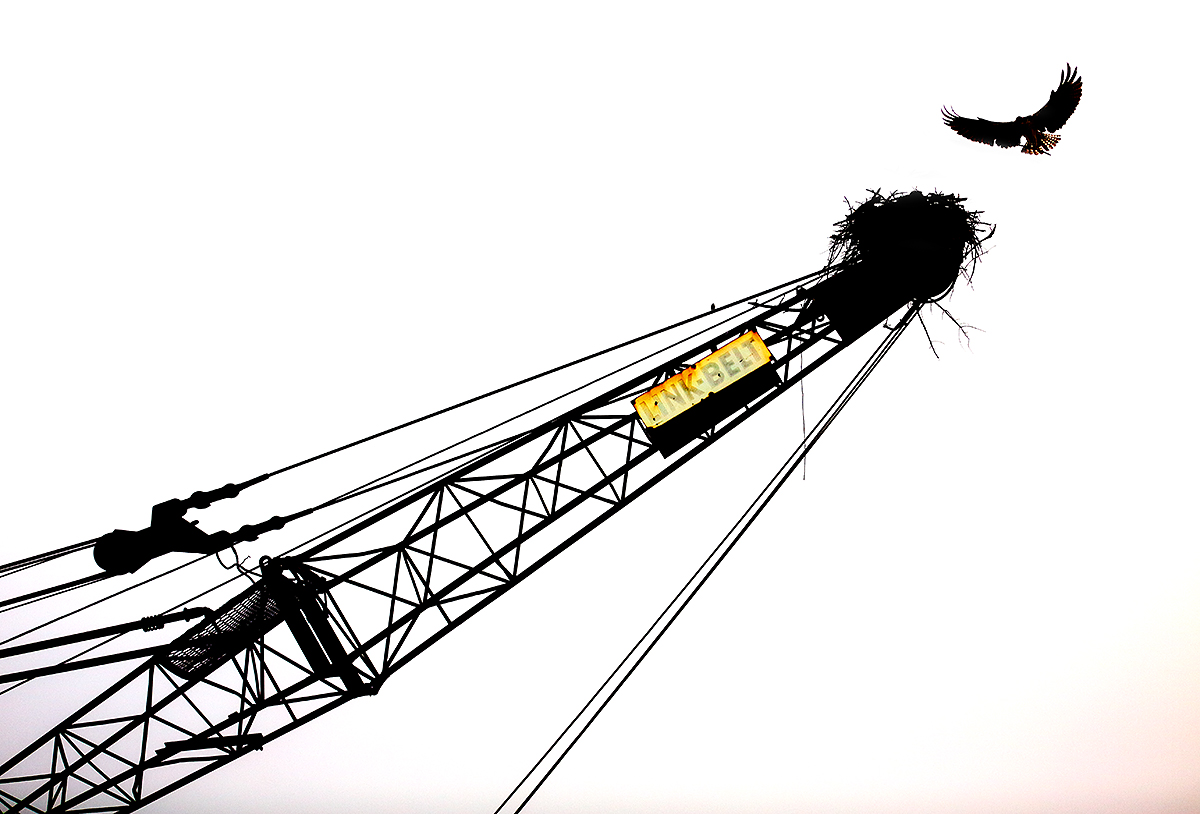
|
|
This image was created Nickerson Baby Beach Nesting Birds IPT with the hand held Canon EF 70-200mm f/2.8L IS II lens (at 70mm) and the Canon EOS-1D X. ISO 800. Evaluative metering + 2 2/3 stops as framed: 1/2000 sec. at f/2.8 in Av mode.
Central sensor/AI Servo Surround/Rear Focus AF on the center of the crane as originally framed was active at the moment of exposure. Click here if you missed the Rear Focus Tutorial. Be sure to click on the image to see a larger version.
|
Foggy Link Belt Crane…
We were just minutes from turning into the Nickerson Beach parking lot at about 6am on a very foggy morning when Denise asked, “Did you see the Osprey nest on the crane?” “Nope” I replied. “Was it nice? Was there a bird on the nest?” “Yes and yes,” she said.
Thinking of the raven nest on a derelict gold dredge that I had photographed more than a decade ago in Nome, AK, I slowed and indicated to the other cars in our caravan that we would be making a detour. Though one of those Nome Common Raven images had been published in National Geographic, the group members then were also dubious despite my excitement: “How can you make a good image in such heavy fog?”. As it was our first morning I knew that working in the fog would be a great vehicle for teaching the group to expose to the right; please see the original image below. It took us a while to get the right lenses in our hands and to find a good perspective. The Osprey cooperated nicely by flying around and landing several times. In fifteen short minutes we were back in the cars headed for a great morning at the beach.
The Link Belt Crane
The crane in the photo is actually fully operational but once the Ospreys began building their nest a local ordinance prevented the owners from using it. My understanding is that they complied gladly. Click here to learn about Link Belt Cranes. For some really neat, incredibly interesting stuff on the development of this company first click on the “About” tab and the click on the “History” link.
The All Purpose 70-200mm f/2.8L IS II Lens
As regular readers know full well, the Canon 70-200mm f/2.8L IS II USM lens is one of my very favorite lenses. It is often the only other lens that I take into the field with my tripod-mounted Canon EF 600mm f/4L IS II USM lens. As above, I use it often to create small-in-the-frame or habitat images. I use it for flocks in flight at Bosque with either TC. I use it often to photograph family groups of birds or birds interacting at close range. I use it a ton for scenic images as I did with great success in the Palouse. And I use it either alone (see here) or with either TC to photograph birds in flight at close range. In short, the 70-200 II is an incredibly versatile hand holdable intermediate telephoto lens that offers me a focal length range of from 70 to 400mm.
A used 70-200mm f/2.8L IS II Lens For You
Dale Lorenzen is offering a used Canon 70-200mm f/2.8L IS II USM Lens in nearly mint condition for $1850. It is like new with a small scratch on the hood. The sale includes the original box, the software CD, the carrying case, the tripod ring, and the front and rear caps. The seller will pay insured UPS shipping within continental US. The lens will ship after the check clears.
Please contact Dale via e-mail. At this give-away price, this lens should sell instantly.
A 300 II Heads Up
There is a brand new listing here for a near mint 300 II for $1,000 less than the current B&H price and the sale includes a CRX-3.5 plate. I expect that this one will also sell instantly….
Selling Your Used Photo Gear Through BIRDS AS ART
Selling your used (or like-new) photo gear through the BAA Blog or via a BAA Online Bulletin is a great idea. We charge only a 5% commission. One of the more popular used gear for sale sites charges a minimum of 20% plus assorted fees! Yikes. The minimum item price here is $500 (or less for a $25 fee). If you are interested please e-mail with the words Items for Sale Info Request cut and pasted into the Subject line :). Stuff that is priced fairly–I offer free pricing advise, usually sells in no time flat.
|
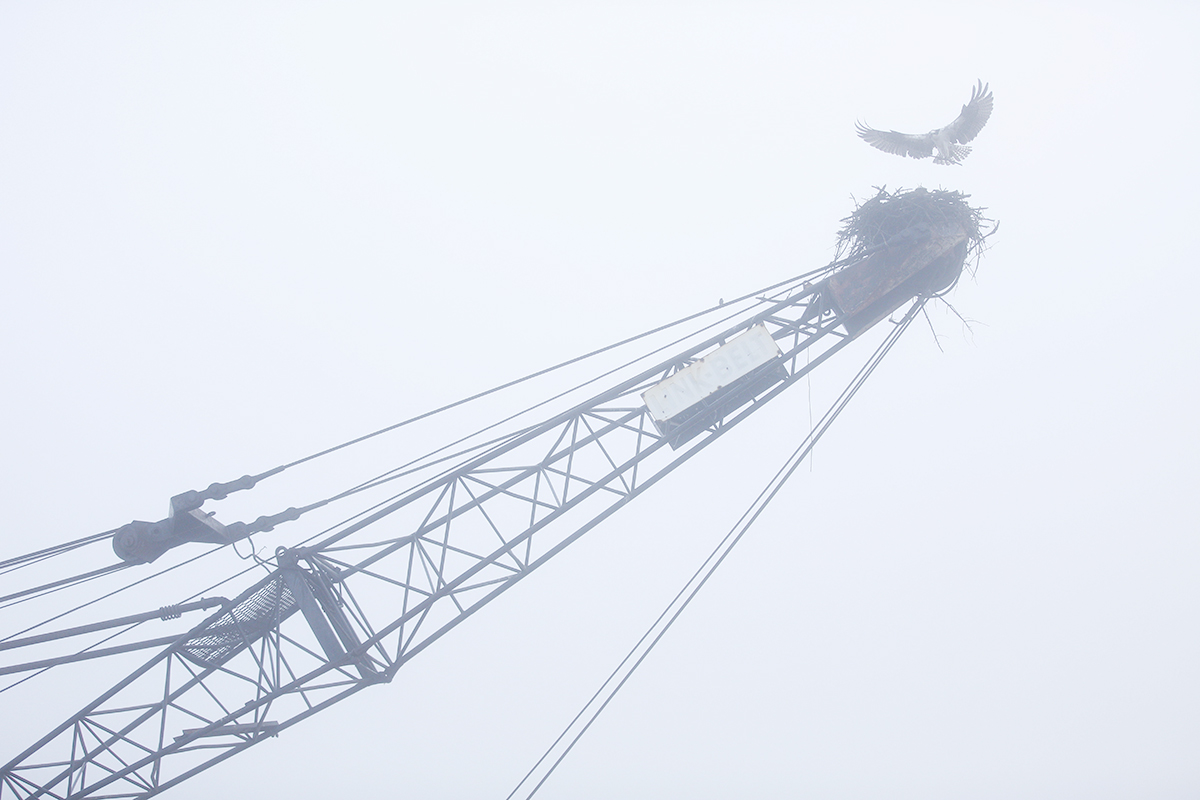
|
|
This JPEG was created from the large JPEG that is embedded in all RAW files at the moment of capture. It is an accurate representation of the original RAW capture.
|
Exposing to the Right
Exposing to the right while avoiding significant blinkies produces high quality images while minimizing noise. Be sure to have at least some data in the right-most histogram box, the 5th box on Canon camera bodies, the 4th box on Nikon bodies.
Image Optimization Questions
1-What is the simplest way to get the from the foggy look of the original capture to the high key/high contrast look of the optimized image?
2-How would you move the bird to the right as I did?
3-How did I juice up the Link Belt sign?
Digital Basics
Most everything I did to optimize today’s image is detailed in my Digital Basics File–written in my easy-to-follow, easy-to-understand style. Are you tired of making your images look worse in Photoshop? Have you no clue as to how I optimized the image above? The Photoshop techniques that I used plus tons more are covered in my Digital Basics File, an instructional PDF that is sent via e-mail. It includes my complete digital workflow, dozens of great Photoshop tips, the use of Contrast Masks, several different ways of expanding and filling in canvas, all of my time-saving Keyboard Shortcuts, Quick Masking, Layer Masking, and NIK Color Efex Pro basics, my killer image clean-up techniques, Digital Eye Doctor, creating time-saving actions, and lots more.
The DPP RAW Conversion Guide
To learn why I use Canon’s Digital Photo Professional (DPP) to convert every image that I work on, click here.
APTATS I & II
Learn the details of advanced Quick Masking techniques in APTATS I. Learn Advanced Layer Masking Techniques in APTATS I. Mention this blog post and apply a $5 discount to either with phone orders only. Buy both APTATS I and APTATS II and we will be glad to apply at $15 discount with phone orders only.
Facebook
Be sure to like and follow BAA on Facebook by clicking on the logo link upper right. Tanks a stack!
|
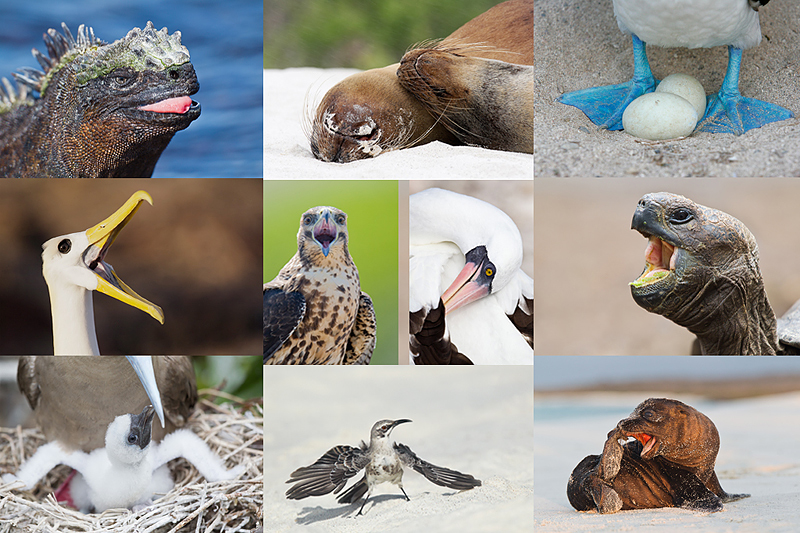
|
|
Do consider joining me for a once in a lifetime trip to the Galapagos archipelago in July, 2015.
|
GALAPAGOS Photo Cruise of a Lifetime IPT/The Complete Galapagos Photographic Experience. July 14-28, 2015 on the boat. 13 FULL and two half-days of photography: $12,499. Limit 14 including the leader(s)/Openings: 7.
My two-week Galapagos Photo-Cruises are without equal. The world’s best guide, a killer itinerary, a great boat (the Samba), and the best leader with eight Galapagos cruises under his belt. Pre-trip and pre-landing location-specific gear advice. In-the-field photo instruction and guidance. Jeez, I almost forgot: fine dining at sea!
The great spots that we will visit include Tower Island (including Prince Phillips Steps and Darwin Bay), Hood Island (including Punta Suarez, the world’s only nesting site of Waved Albatross, and Gardner Bay)—each of the preceding are world class wildlife photography designations that rank right up there with Antarctica, Africa, and Midway. We will also visit Fernandina, Puerto Ayora for the tortoises, Puerto Egas—James Bay, North Seymour and Isla Lobos for nesting Blue-footed Booby (most years), South Plaza, Floreana, and Urbina Bay, all spectacular in their own right. We visit every great spot on a single trip. Plus tons more. And there will he lots of opportunities to snorkel on sunny mid-days for those like me who wish to partake.
We will be the first boat on each island in the morning and the last boat to leave each island every afternoon. If we are blessed with overcast weather, we will often spend 5-6 hours at the best sites. And as noted above, mid-day snorkeling is an option on most sunny days depending on location. Note: some of the walks are a bit strenuous. Great images are possible on all landings with a hand held 70-200mm lens and a 1.4X teleconverter. I bring a longer lens ashore on most landings as that fits my style. I generally work with either the Canon 300mm f/2.8L IS or the Canon 200-400mm f/4 L IS with Internal Extender.
Do know that there is a NatureScapes Galapagos trip: one week for $8495. Thus, my trip represents a tremendous value; why go all that way and miss half of the great photographic locations?
The Logistics
Fly to Guayacil, Ecuador on July 12, 2015. Travel insurance/rest day: July 13 (We may or may not offer a photo outing on the 13th). Fly to the archipelago on July 14 and board the Samba. Get off the boat on July 28. Fly to Guayacil that afternoon. Fly home on the early morning of July 29 unless you are staying on or going elsewhere (or catching a red-eye flight on the evening of the 28th).
$12,499 includes just about everything: all transfers, guide and park fees, all food on the boat, transfers and ground transportation, your flights to the archipelago, and three nights (double occupancy) in a top notch hotel in Guayacil. If you are good to go, a non-refundable deposit of $5,000 per person is due immediately. The second payment of $4,000 is not due until 11/1/14. The final payment of $3749 per person will be due on 2/1/15. A $200 discount will be applied to each of the balances for couples or friends who register at the same time.
Purchasing travel insurance within 2 weeks of our cashing your deposit check is strongly recommended. On my past two cruises a total of 5 folks were forced to cancel less than one week prior to the trip. My family and I use Travel Insurance Services and strongly recommend that you do the same.
Not included: your round trip airfare from your home to and from Guayaquil, beverages on the boat, phone calls, your meals in Guayacil, personal items, and a $600/person cash tip for the crew and the guide—this works out to roughly $40/day to be shared by the 7 folks who will be waiting on us hand and foot every day for two weeks. The service is so wonderful that many folks choose to tip extra.
Please e-mail for the complete itinerary and for additional info and images. Please cut and paste “Galapagos 2015 Info Please) into the Subject line.
Support the BAA Blog. Support the BAA Bulletins: Shop B&H here!
We want and need to keep providing you with the latest free information, photography and Photoshop lessons, and all manner of related information. Show your appreciation by making your purchases immediately after clicking on any of our B&H or Amazon Affiliate links in this blog post. Remember, B&H ain’t just photography!
…..
Amazon Canada
Many kind folks from north of the border, ay, have e-mailed stating that they would love to help us out by using one of our affiliate links but that living in Canada and doing so presents numerous problems. Now, they can help us out by using our Amazon Canada affiliate link by starting their searches by clicking here. Many thanks to those who have written.
Typos
In all blog posts and Bulletins, feel free to e-mail or to leave a comment regarding any typos, wrong words, misspellings, omissions, or grammatical errors. Just be right. 🙂
July 18th, 2014 The Streak Continues: 230
This post was published just before 5:00am from Rockville, Center, Long Island, NY. I am not sure what the plans are right now but I will wind up back at my Mom’s sometime later today.
This post, which took me about 2 hours to prepare, marks 230 consecutive days with a new educational blog post. With so many folks getting in the habit of using our B&H links and our Amazon logo-links, why quit now? April, May, June, and July have been fantastic as lots of folks are getting the message; using my affiliate links does not cost you a penny and helps support my efforts here. To show your appreciation, I do ask that you use our B&H and Amazon affiliate links on the right side of the blog for all of your purchases. Please check the availability of all photographic accessories in the BIRDS AS ART Online Store, especially Gitzo tripods, Wimberley tripod heads, and the like. We sell only what I have used and tested, and know that you can depend on. We will not sell you junk. We know the tools that you need to make creating great images easy and fun. And we are always glad to answer your gear questions via e-mail.
You can find the following items in the store: Gitzo tripods, Mongoose M3.6 and Wimberley heads, plates, low feet, and accessories, flash brackets, , Delkin e-film Pro Compact Flash Cards, LensCoat products, and our unique line-up of educational materials including ABP I & II, Digital Basics, Site and Set-up e-Guides, Canon and Nikon Camera Users and AF e-Guides, and MP-4 Photoshop video tutorials among others.
I would of course appreciate your using our B&H affiliate links for all of your major gear, video, and electronic purchases. For the photographic stuff mentioned in the paragraph above we, meaning BAA, would of course greatly appreciate your business. Here is a huge thank you to the many who have been using our links on a regular basis and visiting the BAA Online store as well.
|
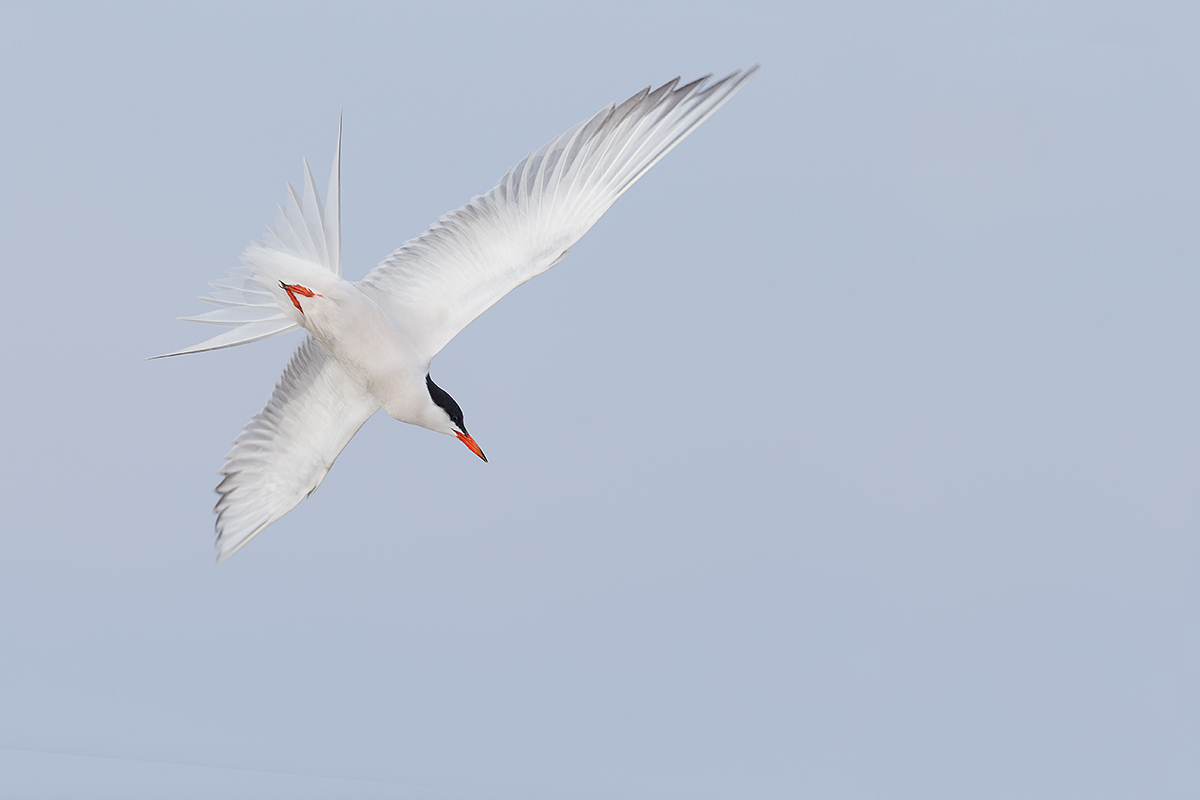
|
|
This image was created at 6:11pm in very soft sunlight on the Nickerson Baby Beach Nesting Bird IPT with the Gitzo 3532 LS carbon fiber tripod, the Mongoose M3.6 head, the Canon EF 600mm f/4L IS II USM lens and the Canon EOS-1D X Digital SLR camera. ISO 400. Evaluative metering +2 1/3 stops off the light blue sky: 1/1600 sec. at f/4.5 in Manual mode.
Central Sensor/AI Servo/Surround AF on the point where the lower right flank meets the base of the far wing was active at the moment of exposure. Be sure to click on the image to see the spectacular larger version.
|
Persistence and Determination Trump Poor Hand Eye Coordination
Good numbers of adult Common Terns were diving for baitfish in the wash, the shallow breaking surf. I stood in the same spot in about a foot of water for about 2 hours. Again.
I created more than 800 flight images. Most of them featured the birds either flying right at me (from east to west into the wind as I looked east) or kiting as they got ready to dive for Atlantic Silversides, the spearing of my childhood that we used as bait for snapper blues. About half of the images were sharp. Of those, more than 9 of every 10 were of what Denise Ippolito and I call the “Who Cares?” variety, i.e., sharp but nothing special. After an hour I noticed that some of the birds that were flying the “wrong” way, from west to east with the wind, would bank and turn nearly upside down as they dove for one of the small fish. I acquired focus on each bird that flew by me and then hoped that it would turn and dive. Most did not. Several, including the bird in today’s featured image, did. I pretty much jerked the lens down hard and right to focus track while striving to keep the bird completely in the frame. Of the very few chances that I had, I wound up clipping something. Except in the single very sharp image above.
|
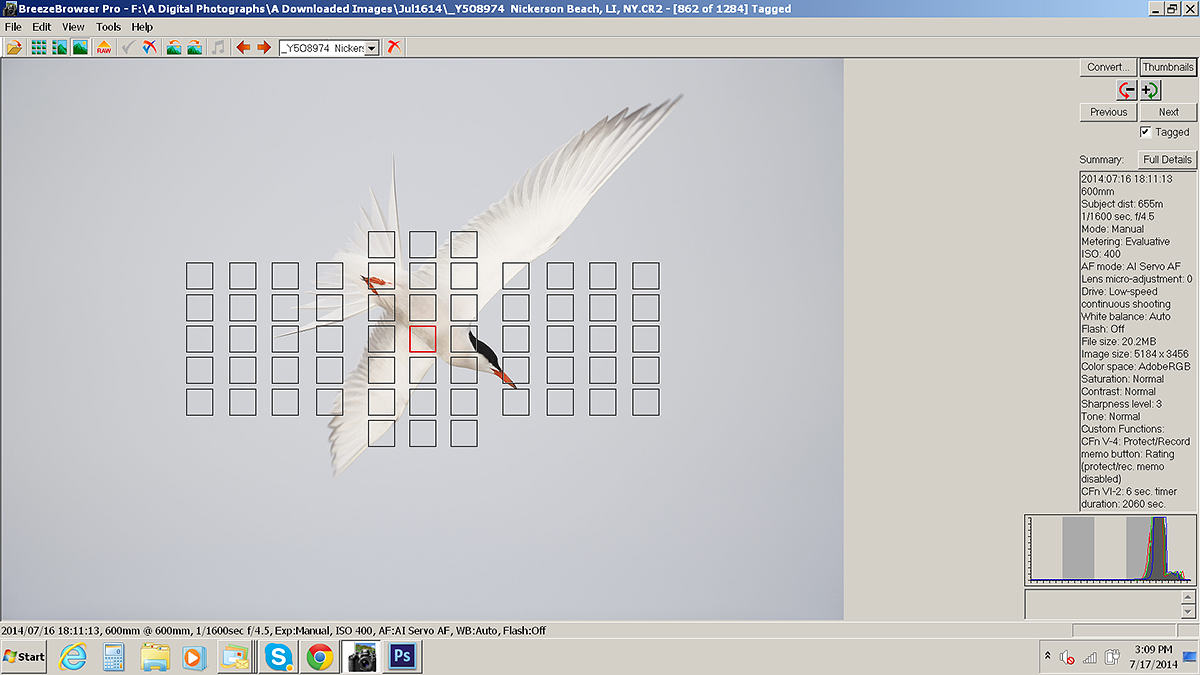
|
|
This is the BreezeBrowser Main View screen capture for today’s image.
|
The Breezebrowser Main View Screen Capture
Above is the BreezeBrowser Main View screen capture for today’s image. Note that the illuminated red square shows the AF point that was selected. Remember that with Surround eight additional sensors are active but are not illuminated. Note: in Breezebrowser you need to check “Show Focus Points” under View to activate this feature. To see the focus points in DPP check “AF Point” under View or hit Alt L. Hit Alt M to see Highlight Alert. To learn how and why I use only DPP (Canon Digital Photo Professional) to convert my RAW files, see the info on our DPP RAW Conversion Guide here.
Note the perfect histogram the WHITEs well into the rightmost histogram box. Regular readers know that I use and depend on BreezeBrowser every day of the year. It allows me to sort my keepers and delete the rejects faster than any other Windows browsing program. We use it on the main computer in the home office to catalog our images file-drawer style. And the companion program, Downloader Pro allows me to download my images quickly and conveniently. It automatically adds my IPTC data and the shooting location. I have it set up to create a folder named by the Month/date/year. The Breezebrowser/Downloader Pro combo saves me many hours each week. To learn more or to purchase this great PC only program, click here. As far as the BreezeBrowser/Downloader Pro Combo goes, if you are using a Windows platform and are not using these two great programs you are at best, wasting your valuable time. My understanding is that Photo Mechanic is best for Mac-users who do not opt to run Parallels or VM Ware fusion on their Macs so that they can enjoy the many advantages of BreezeBrowser. See BreezeBrowswer on a Mac for details on the latter.
|
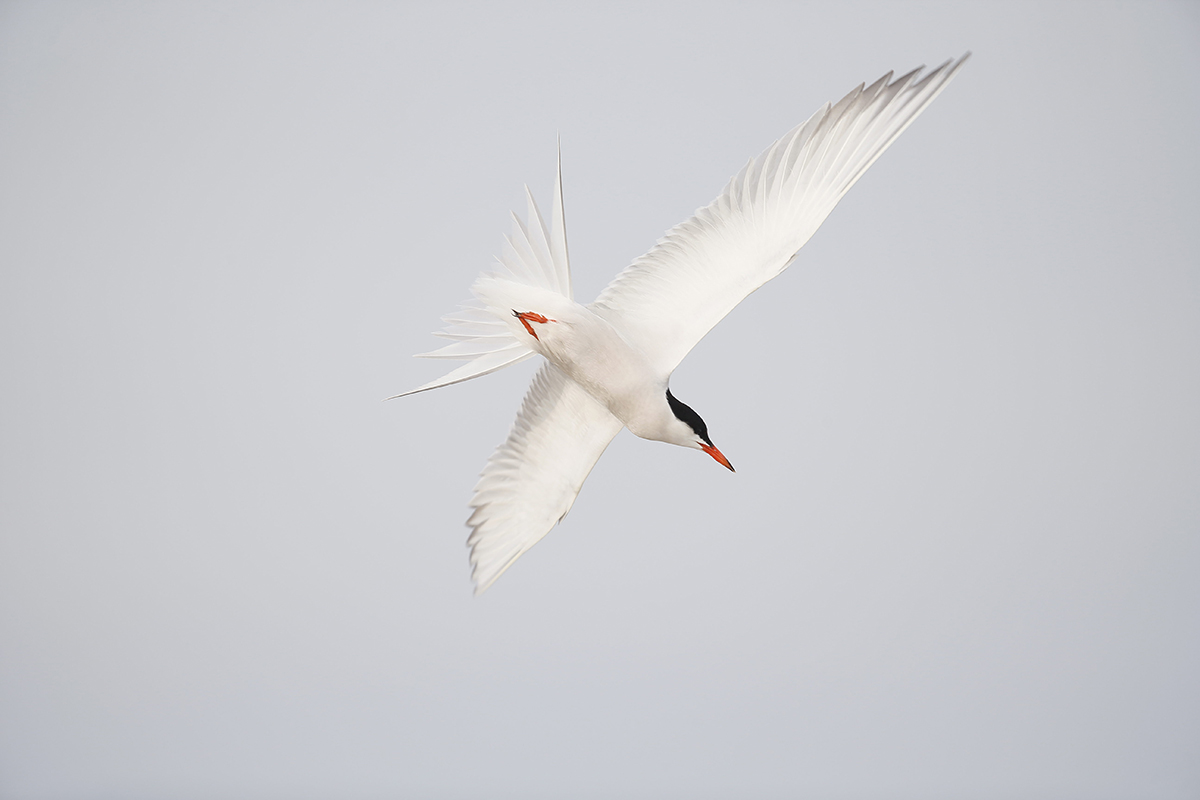
|
|
This JPEG represents the original unsharpened RAW file.
|
The Image Optimization
Having exposed well to the right I darkened the image and eliminated the vignetting with the Lens Aberration feature during conversion in DPP. I moved the bird back in the frame using techniques from APTATS II and angled the bird a bit more steeply using techniques from Digital Basics. I selected the bird with the Quick Selection Tool and ran my 50-50 NIK filter on that layer. I erased the effects from the darker areas of the bird using a Regular Layer Mask. I selected the black cap again using the Quick Selection Tool and lightened it considerably by pulling up the curve. After a bit of Eye Doctor work using Tim Grey Non-destructive Dodge and Burn I sharpened the face and bill with a Contrast Mask. Voila.
The DPP RAW Conversion Guide
To learn why I use Canon’s Digital Photo Professional (DPP) to convert every image that I work on, click here.
APTATS I & II
Learn the details of advanced Quick Masking techniques in APTATS I. Learn Advanced Layer Masking Techniques in APTATS I. Mention this blog post and apply a $5 discount to either with phone orders only. Buy both APTATS I and APTATS II and we will be glad to apply at $15 discount with phone orders only.
Digital Basics
Everything above (except as noted) is detailed in my Digital Basics File–written in my easy-to-follow, easy-to-understand style. Are you tired of making your images look worse in Photoshop? Have you no clue as to how I optimized the image above? The Photoshop techniques mentioned above plus tons more are covered in my Digital Basics File, an instructional PDF that is sent via e-mail. It includes my complete digital workflow, dozens of great Photoshop tips, the use of Contrast Masks, several different ways of expanding and filling in canvas, all of my time-saving Keyboard Shortcuts, Quick Masking, Layer Masking, and NIK Color Efex Pro basics, my killer image clean-up techniques, Digital Eye Doctor, creating time-saving actions, and lots more.
Facebook
Be sure to like and follow BAA on Facebook by clicking on the logo link upper right. Tanks a stack!
Support the BAA Blog. Support the BAA Bulletins: Shop B&H here!
We want and need to keep providing you with the latest free information, photography and Photoshop lessons, and all manner of related information. Show your appreciation by making your purchases immediately after clicking on any of our B&H or Amazon Affiliate links in this blog post. Remember, B&H ain’t just photography!
…..
Amazon Canada
Many kind folks from north of the border, ay, have e-mailed stating that they would love to help us out by using one of our affiliate links but that living in Canada and doing so presents numerous problems. Now, they can help us out by using our Amazon Canada affiliate link by starting their searches by clicking here. Many thanks to those who have written.
Typos
In all blog posts and Bulletins, feel free to e-mail or to leave a comment regarding any typos, wrong words, misspellings, omissions, or grammatical errors. Just be right. 🙂
July 17th, 2014 The Streak Continues: 229
This post was published just after 4:00am from Rockville, Center, Long Island, NY as we get ready for the last morning of the Nickerson Baby Beach Nesting Birds IPT. It is our first morning that might offer some nice sunrise colors…. This post, which took me about 2 hours to prepare, marks 229 consecutive days with a new educational blog post. With so many folks getting in the habit of using our B&H links and our Amazon logo-links, why quit now? April, May, June, and July have been fantastic as lots of folks are getting the message; using my affiliate links does not cost you a penny and helps support my efforts here. To show your appreciation, I do ask that you use our B&H and Amazon affiliate links on the right side of the blog for all of your purchases. Please check the availability of all photographic accessories in the BIRDS AS ART Online Store, especially Gitzo tripods, Wimberley tripod heads, and the like. We sell only what I have used and tested, and know that you can depend on. We will not sell you junk. We know the tools that you need to make creating great images easy and fun. And we are always glad to answer your gear questions via e-mail.
You can find the following items in the store: Gitzo tripods, Mongoose M3.6 and Wimberley heads, plates, low feet, and accessories, flash brackets, , Delkin e-film Pro Compact Flash Cards, LensCoat products, and our unique line-up of educational materials including ABP I & II, Digital Basics, Site and Set-up e-Guides, Canon and Nikon Camera Users and AF e-Guides, and MP-4 Photoshop video tutorials among others.
I would of course appreciate your using our B&H affiliate links for all of your major gear, video, and electronic purchases. For the photographic stuff mentioned in the paragraph above we, meaning BAA, would of course greatly appreciate your business. Here is a huge thank you to the many who have been using our links on a regular basis and visiting the BAA Online store as well.
Flight Photography with the 600 II
I am not capable of shooting hand held flight with the 600 II for more than a few minutes. Working on the tripod with the Mongoose M3.6 makes it easy to survive long shooting sessions with little or no muscle strain. Most of the time I support the lens barrel near the front from below with my left hand; in addition, my left hand helps guide the lens so that I can easily track the birds in flight. Make sure that your tripod is tall enough so that you do not have to bend over to get your eye comfortably to the viewfinder….
Hand Holding the 500 II
Will du Plessis, who drove down from somewhere in Canada to join the IPT, was having trouble focusing with his 500 II/1.4X/5D Mark III so we switched rigs and I tried to figure out what the problem was. The lens would not attempt to focus at all so I checked for the #1 culprit. Will had inadvertently set AF Search to Off; this told the lens not to search to acquire AF. I was sure that this would solve the problem but as it turned out, there is a problem, most likely with the camera; the rig would acquire focus and then lose it quickly…. I was able, with some difficulty, to make a few sharp images hand held. I have one more test to do today to make sure that it is the camera and not the lens.
Hand holding the 500 II is a snap for me as compared to hand holding the 600 II. We were sitting so my rest position had my left forearm resting on my left knee. From there it was a simply matter of raising the lens a few inches to photograph the birds flying right at us into the north/northwest wind.
Sitting Down on the Job
To better separate the incoming birds from the tall grasses of the nesting grounds we had the group sitting. Some were hand holding 300 IIs while others like me were working off a tripod. After trying my rig for a while Will is lusting for both a 1D X and a Mongoose M3.6. In addition, by sitting you increase the chance of having a fledgling Common Tern land right in front of you.
The 2015 UK Puffins and Gannets IPTs
Our first UK Puffins and Gannets IPT was so amazingly productive and so much fun that by the 2nd afternoon Denise and I had already decided to return in very early July 2015. In addition, we may run the first-ever Ireland Puffins and Gannets IPT the week before. If you are interested in receiving early notice for either or both of these great trips, please shoot me an e-mail with the words “2015 Puffins and Gannets IPTs” cut and pasted into the Subject line.
Facebook
Be sure to like and follow BAA on Facebook by clicking on the logo link upper right. Tanks a stack!
|

|
|
Denise and artie hope that you can join them next spring in Holland and learn to improve both the technical and creative aspects of your flower (and street) photography.
|
7 1/2-Day/8-Night: A Creative Adventure/BIRDS AS ART/Tulips & A Touch of Holland Instructional Photo-Tour (IPT)
Keukenhof—Delft—Amsterdam–Flower Fields—Kinderdijk
April 9 -April 16, 2015: $4995. Limit: 12 photographers/Openings 10. Four more to make the trip a go.
This trip needs 6 registrants to run so please do not purchase your plane tickets until you hear from us that the trip is a go.
Join Denise Ippolito, the author of “Bloomin’ Ideas,” and Arthur Morris, Canon Explorer of Light Emeritus, for a great trip to Holland in mid-April 2015. Day 1 of the IPT will be April 9, 2015. We will have a short afternoon get-together and then our first photographic session at the justly-famed Keukenhof. Our last day, Day 8, April 16 will be a full day of photography.
The primary subjects will be tulips and orchids at Keukenhof and the spectacularly amazing tulip, hyacinth, and daffodil bulb fields around Lisse and points north. We will spend one full day in Amsterdam. There will be optional visits to the Van Gogh Museum, the Anne Frank House and/or the Rijk’s Museum. Street photography and sightseeing will be other options. We will spend a half day at Kinderdijk where we will be photographing the windmills and doing some creative photography. We will spend an afternoon in the lovely Dutch town of Delft where we will do some street photography and shopping. There is an optional church tower tour/climb. We will also enjoy a superb fine dining experience in a traditional restaurant.
Other than the arrival date: April 9, Day 1, and the date of our last day of photography on April 16, Day 8, there is no set itinerary. We will check the weather and play everything by ear to maximize the photographic opportunities. We will try to do Amsterdam, Delft, and especially Kinderdijik, on cloudy days.
There are several huge pluses to this trip. First off, denise is an amazingly skilled and caring instructor. Both her creativity and her willingness to share and to help beginning and intermediate photographers are unmatched. And though artie has learned a ton about flower photography from denise, their styles and techniques do vary considerably. You will have a chance to be counseled by and to learn from both of them. While denise will hunt you down to help you, artie’s teaching style is more “the closer you stay to me, the more you will learn.” Both leaders consistently inspire the participants. And each other. The sky, of course, is the limit.
You will learn to create tight abstracts, how best to use depth-of-field (or the lack thereof) to improve your flower photography, how to get the right exposure and make sharp images every time, how to see the best shot, and how to choose the best perspective for a given situation. And you will of course learn to create a variety of pleasingly blurred flower images. If you bring a long lens, you will learn to use it effectively for flower photography. Denise’s two favorite flower lenses are the Canon EF 100mm f/2.8L Macro IS USM lens and the Canon EF 24-105mm f/4L IS USM lens. Mine are the Canon 100mm f/2.8L IS macro , the Canon EF 180mm f/3.5L Macro USM lens ,and the Canon EF 300mm f/2.8L IS II USM lens, all almost always on a tripod. Often with extension tubes and/or either the 1.4X or the 2X (with the 300 II) teleconverters. Denise hand holds a great deal of the time. For flower field blurs denise uses the same lenses mentioned above along with her new 70-200mm f/2.8L IS III lens. Artie’s favorite is that same 70-200 often with a 1.4X TC but he uses both the new Canon EF 24-70mm f/2.8L II USM lens and the 300 II as well. Both of us use and love the Canon EOS 5D Mark IIIfor all of our flower photography. The in-camera HDR and Multiple Exposure features are a blast.
One of the great advantages of our trip is that we will be staying in a single, strategically located hotel that is quite excellent. Do note that all ground transfers to and from Schipol Airport will be via the free hotel shuttle bus.
What’s included: Eight hotel nights. All ground transportation except for airport transfers as noted above. In-the-field instruction and small group image review and Photoshop sessions. All meals from dinner on Day 1 through dinner on Day 8. There is good food at the hotel and we will be dining there on occasion; whenever you order off the menu be it at the hotel or at another restaurant only the cost of your main course is included. On these occasions the cost of soups, appetizers, salads, sodas and other beverages, alcoholic drinks and wine, bottled water, and desserts are not included. Snacks, personal items, phone calls, etc. are also not included. The cost of bus or train transportation to and from Amsterdam (about $20 US), museum entry, and tower and church entry fees (optional) are likewise not included.
Beware of seemingly longer, slightly less expensive tours that include travel days and days sitting in the hotel doing nothing as part of the tour. In addition, other similar trips have you changing hotels often and needlessly. One final note on other similar trips: the instructors on this trip actually instruct. On other similar trips the instructors, though usually imminently qualified, serve for the most part as van drivers and van door openers.
A non-refundable deposit of $1,000 per person is required to hold your spot. The second payment of $2,000 due by October 30, 2014. The balance is due on January 15, 2015. Payments in full are of course welcome at any time. All payments including the deposit must be by check made out to “Arthur Morris.” As life has a way of throwing an occasional curve ball our way, you are urged to purchase travel insurance within 15 days of our cashing your check. Artie uses and recommends Travel Insurance Services. All payments are non-refundable unless the trip fills to capacity. In that case, all payments but your deposit will be refunded. If the trip does not run every penny will of course be refunded. Again, please do not purchase your air tickets until you hear from us that the trip is a go. We are very confident that it will.
All checks should be made out to “Arthur Morris” and sent to: Arthur Morris, PO Box 7245, Indian Lake Estates, FL 33855. Call Jim or Jen in the BAA office with any additional registration questions: 863-692-0906.
For couples or friends signing up at the same time for the tulip trip, a $200/duo discount will be applied to the final payment.
When you send your deposit check, please print, sign, and include the paperwork here.
If you have any questions on the trip please contact artie by e-mail or denise by e-mail.
Support the BAA Blog. Support the BAA Bulletins: Shop B&H here!
We want and need to keep providing you with the latest free information, photography and Photoshop lessons, and all manner of related information. Show your appreciation by making your purchases immediately after clicking on any of our B&H or Amazon Affiliate links in this blog post. Remember, B&H ain’t just photography!
…..
Amazon Canada
Many kind folks from north of the border, ay, have e-mailed stating that they would love to help us out by using one of our affiliate links but that living in Canada and doing so presents numerous problems. Now, they can help us out by using our Amazon Canada affiliate link by starting their searches by clicking here. Many thanks to those who have written.
Typos
In all blog posts and Bulletins, feel free to e-mail or to leave a comment regarding any typos, wrong words, misspellings, omissions, or grammatical errors. Just be right. 🙂
July 16th, 2014 The Streak Continues: 228
This post was published just before 5:00am from Rockville, Center, Long Island, NY as I get ready for the second morning of the Nickerson Baby Beach Nesting Birds IPT. I was in bed by 8:30pm last night and have been wide awake since just after 3:00am with dull aches in my left knee and my right shoulder. :). This post, which took me about 2 hours to prepare, marks 228 consecutive days with a new educational blog post. With so many folks getting in the habit of using our B&H links and our Amazon logo-links, why quit now? April, May, June, and July have been fantastic as lots of folks are getting the message; using my affiliate links does not cost you a penny and helps support my efforts here. To show your appreciation, I do ask that you use our B&H and Amazon affiliate links on the right side of the blog for all of your purchases. Please check the availability of all photographic accessories in the BIRDS AS ART Online Store, especially Gitzo tripods, Wimberley tripod heads, and the like. We sell only what I have used and tested, and know that you can depend on. We will not sell you junk. We know the tools that you need to make creating great images easy and fun. And we are always glad to answer your gear questions via e-mail.
You can find the following items in the store: Gitzo tripods, Mongoose M3.6 and Wimberley heads, plates, low feet, and accessories, flash brackets, , Delkin e-film Pro Compact Flash Cards, LensCoat products, and our unique line-up of educational materials including ABP I & II, Digital Basics, Site and Set-up e-Guides, Canon and Nikon Camera Users and AF e-Guides, and MP-4 Photoshop video tutorials among others.
I would of course appreciate your using our B&H affiliate links for all of your major gear, video, and electronic purchases. For the photographic stuff mentioned in the paragraph above we, meaning BAA, would of course greatly appreciate your business. Here is a huge thank you to the many who have been using our links on a regular basis and visiting the BAA Online store as well.
|
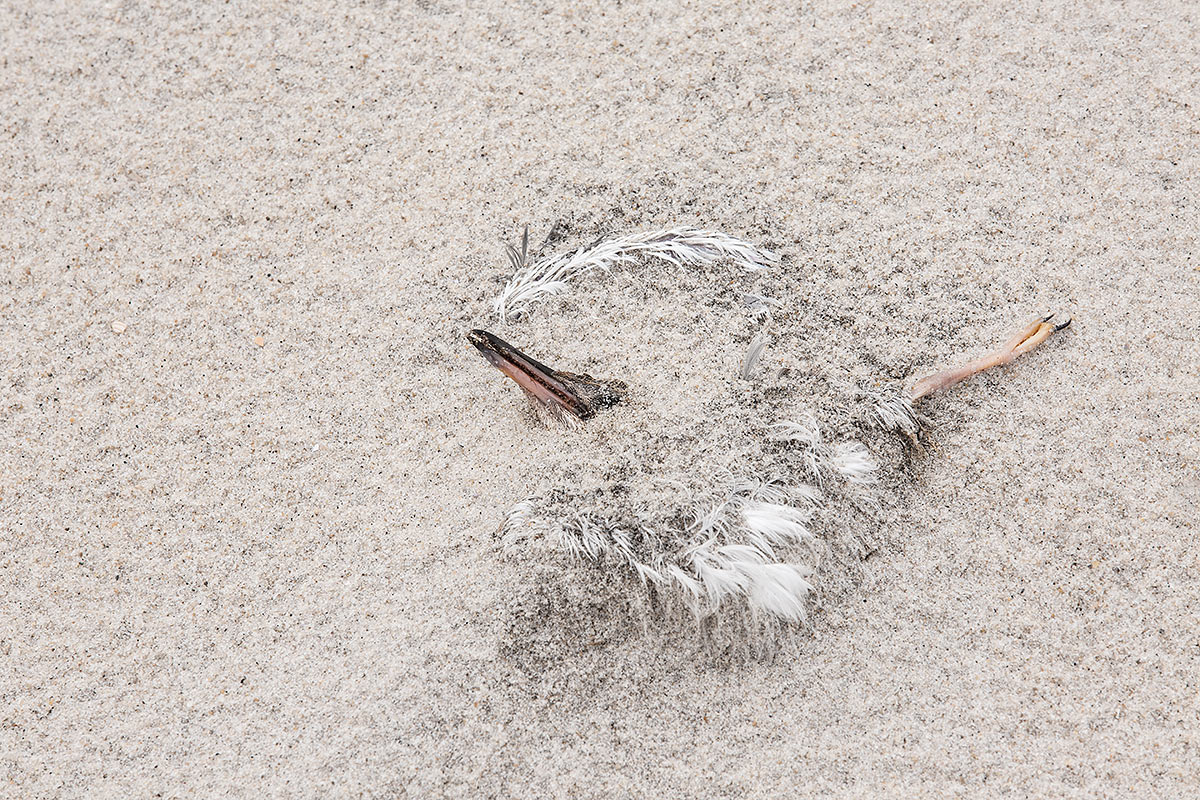
|
|
This image was created on the first morning of the Nickerson Baby Beach Nesting Birds IPT with the hand held Canon EF 70-200mm f/2.8L IS II lens , the Canon 1.4x EF Extender III (Teleconverter) (at 168mm), and the Canon EOS 5D Mark III. ISO 400. Evaluative metering +1 2/3 stops: 1/250 sec. at f/16 in Av mode.
Central sensor/AI Servo Surround/Rear Focus AF on the base of the bird’s bill was active at the moment of exposure. Click here if you missed the Rear Focus Tutorial. Be sure to click on the image to see a larger version.
|
Sad?
Does the image above make you feel sad? Why or why not? Feel free to rate the degree of sadness that you feel on a scale of from 0 to 10 with 0 being not sad at all to 10 being sad to the point of tears. Don’t be shy about sharing your feelings.
Thanks to multiple IPT participant Dave Klein for finding this dead Common Tern chick and sharing it with me as we straggled and I struggled back to the car after a great first morning shooting session in the face of a 60% chance of rain forecast. We enjoyed foggy and cloudy bright conditions. And everyone learned a ton about exposure.
Life and Death…
The line between surviving and dying for the offspring of beach nesting birds is a fine one. In some years fish crows decimate both eggs and small chicks. And life is very tough for terns that do hatch. There are often several hungry siblings to feed. The adult tern parents are accosted by both Laughing Gulls and other terns while flying back to the chicks with fish. Laughing, Herring, and Great Black-backed Gulls are all willing and eager to gobble up chicks of all sizes. And I think that Ghost Crabs and feral cats take their toll as well. Death from exposure to hard rain and the accompanying cold claims many tern chicks and fledglings as well.
The Strongest?
Which of the two images here do you think is the more powerful one, “In Death” or “In Life?” Please let us know why you made your choice.
Hard to Believe
In yesterday’s blog post here, there was nothing significant done to either image in Photoshop. In fact, the second image is pretty much pixel for pixel as it came out of camera. Though I generally prefer the tight head portraits, in this case, I far preferred the wider environmental view. And I sort of like the out-of-focus bill of a second puffin…. I responded to many of the comments.
|

|
|
Denise and artie hope that you can join them next spring in Holland and learn to improve both the technical and creative aspects of your flower (and street) photography.
|
7 1/2-Day/8-Night: A Creative Adventure/BIRDS AS ART/Tulips & A Touch of Holland Instructional Photo-Tour (IPT)
Keukenhof—Delft—Amsterdam–Flower Fields—Kinderdijk
April 9 -April 16, 2015: $4995. Limit: 12 photographers/Openings 10. Four more to make the trip a go.
This trip needs 6 registrants to run so please do not purchase your plane tickets until you hear from us that the trip is a go.
Join Denise Ippolito, the author of “Bloomin’ Ideas,” and Arthur Morris, Canon Explorer of Light Emeritus, for a great trip to Holland in mid-April 2015. Day 1 of the IPT will be April 9, 2015. We will have a short afternoon get-together and then our first photographic session at the justly-famed Keukenhof. Our last day, Day 8, April 16 will be a full day of photography.
The primary subjects will be tulips and orchids at Keukenhof and the spectacularly amazing tulip, hyacinth, and daffodil bulb fields around Lisse and points north. We will spend one full day in Amsterdam. There will be optional visits to the Van Gogh Museum, the Anne Frank House and/or the Rijk’s Museum. Street photography and sightseeing will be other options. We will spend a half day at Kinderdijk where we will be photographing the windmills and doing some creative photography. We will spend an afternoon in the lovely Dutch town of Delft where we will do some street photography and shopping. There is an optional church tower tour/climb. We will also enjoy a superb fine dining experience in a traditional restaurant.
Other than the arrival date: April 9, Day 1, and the date of our last day of photography on April 16, Day 8, there is no set itinerary. We will check the weather and play everything by ear to maximize the photographic opportunities. We will try to do Amsterdam, Delft, and especially Kinderdijik, on cloudy days.
There are several huge pluses to this trip. First off, denise is an amazingly skilled and caring instructor. Both her creativity and her willingness to share and to help beginning and intermediate photographers are unmatched. And though artie has learned a ton about flower photography from denise, their styles and techniques do vary considerably. You will have a chance to be counseled by and to learn from both of them. While denise will hunt you down to help you, artie’s teaching style is more “the closer you stay to me, the more you will learn.” Both leaders consistently inspire the participants. And each other. The sky, of course, is the limit.
You will learn to create tight abstracts, how best to use depth-of-field (or the lack thereof) to improve your flower photography, how to get the right exposure and make sharp images every time, how to see the best shot, and how to choose the best perspective for a given situation. And you will of course learn to create a variety of pleasingly blurred flower images. If you bring a long lens, you will learn to use it effectively for flower photography. Denise’s two favorite flower lenses are the Canon EF 100mm f/2.8L Macro IS USM lens and the Canon EF 24-105mm f/4L IS USM lens. Mine are the Canon 100mm f/2.8L IS macro , the Canon EF 180mm f/3.5L Macro USM lens ,and the Canon EF 300mm f/2.8L IS II USM lens, all almost always on a tripod. Often with extension tubes and/or either the 1.4X or the 2X (with the 300 II) teleconverters. Denise hand holds a great deal of the time. For flower field blurs denise uses the same lenses mentioned above along with her new 70-200mm f/2.8L IS III lens. Artie’s favorite is that same 70-200 often with a 1.4X TC but he uses both the new Canon EF 24-70mm f/2.8L II USM lens and the 300 II as well. Both of us use and love the Canon EOS 5D Mark IIIfor all of our flower photography. The in-camera HDR and Multiple Exposure features are a blast.
One of the great advantages of our trip is that we will be staying in a single, strategically located hotel that is quite excellent. Do note that all ground transfers to and from Schipol Airport will be via the free hotel shuttle bus.
What’s included: Eight hotel nights. All ground transportation except for airport transfers as noted above. In-the-field instruction and small group image review and Photoshop sessions. All meals from dinner on Day 1 through dinner on Day 8. There is good food at the hotel and we will be dining there on occasion; whenever you order off the menu be it at the hotel or at another restaurant only the cost of your main course is included. On these occasions the cost of soups, appetizers, salads, sodas and other beverages, alcoholic drinks and wine, bottled water, and desserts are not included. Snacks, personal items, phone calls, etc. are also not included. The cost of bus or train transportation to and from Amsterdam (about $20 US), museum entry, and tower and church entry fees (optional) are likewise not included.
Beware of seemingly longer, slightly less expensive tours that include travel days and days sitting in the hotel doing nothing as part of the tour. In addition, other similar trips have you changing hotels often and needlessly. One final note on other similar trips: the instructors on this trip actually instruct. On other similar trips the instructors, though usually imminently qualified, serve for the most part as van drivers and van door openers.
A non-refundable deposit of $1,000 per person is required to hold your spot. The second payment of $2,000 due by October 30, 2014. The balance is due on January 15, 2015. Payments in full are of course welcome at any time. All payments including the deposit must be by check made out to “Arthur Morris.” As life has a way of throwing an occasional curve ball our way, you are urged to purchase travel insurance within 15 days of our cashing your check. Artie uses and recommends Travel Insurance Services. All payments are non-refundable unless the trip fills to capacity. In that case, all payments but your deposit will be refunded. If the trip does not run every penny will of course be refunded. Again, please do not purchase your air tickets until you hear from us that the trip is a go. We are very confident that it will.
All checks should be made out to “Arthur Morris” and sent to: Arthur Morris, PO Box 7245, Indian Lake Estates, FL 33855. Call Jim or Jen in the BAA office with any additional registration questions: 863-692-0906.
For couples or friends signing up at the same time for the tulip trip, a $200/duo discount will be applied to the final payment.
When you send your deposit check, please print, sign, and include the paperwork here.
If you have any questions on the trip please contact artie by e-mail or denise by e-mail.
Support the BAA Blog. Support the BAA Bulletins: Shop B&H here!
We want and need to keep providing you with the latest free information, photography and Photoshop lessons, and all manner of related information. Show your appreciation by making your purchases immediately after clicking on any of our B&H or Amazon Affiliate links in this blog post. Remember, B&H ain’t just photography!
…..
Amazon Canada
Many kind folks from north of the border, ay, have e-mailed stating that they would love to help us out by using one of our affiliate links but that living in Canada and doing so presents numerous problems. Now, they can help us out by using our Amazon Canada affiliate link by starting their searches by clicking here. Many thanks to those who have written.
Typos
In all blog posts and Bulletins, feel free to e-mail or to leave a comment regarding any typos, wrong words, misspellings, omissions, or grammatical errors. Just be right. 🙂
July 15th, 2014 The Streak Continues: 227
This post was published just before 5:30am from Rockville, Center, Long Island, NY as Denise and I got ready for the first morning of the Nickerson Baby Beach Nesting Birds IPT. This post, which took me about 2 hours to prepare, marks 227 consecutive days with a new educational blog post. With so many folks getting in the habit of using our B&H links and our Amazon logo-links, why quit now? April, May, June, and July have been fantastic as lots of folks are getting the message; using my affiliate links does not cost you a penny and helps support my efforts here. To show your appreciation, I do ask that you use our B&H and Amazon affiliate links on the right side of the blog for all of your purchases. Please check the availability of all photographic accessories in the BIRDS AS ART Online Store, especially Gitzo tripods, Wimberley tripod heads, and the like. We sell only what I have used and tested, and know that you can depend on. We will not sell you junk. We know the tools that you need to make creating great images easy and fun. And we are always glad to answer your gear questions via e-mail.
You can find the following items in the store: Gitzo tripods, Mongoose M3.6 and Wimberley heads, plates, low feet, and accessories, flash brackets, , Delkin e-film Pro Compact Flash Cards, LensCoat products, and our unique line-up of educational materials including ABP I & II, Digital Basics, Site and Set-up e-Guides, Canon and Nikon Camera Users and AF e-Guides, and MP-4 Photoshop video tutorials among others.
I would of course appreciate your using our B&H affiliate links for all of your major gear, video, and electronic purchases. For the photographic stuff mentioned in the paragraph above we, meaning BAA, would of course greatly appreciate your business. Here is a huge thank you to the many who have been using our links on a regular basis and visiting the BAA Online store as well.
Hard to Believe…
It is hard to believe that the two images presented here today were created with the same lens; the versatility of the 200-400 with internal extender is unmatched when working with relatively tame birds or large mammals. Which image do you think that I created first?
Photoshop Hanky Panky?
After enlarging each image by clicking on it, let us know if you can detect anything screwy that was done to either image (or to both) in Photoshop. Did I replace a head? An eye? Did I remove a band or a bird?
The Stronger Image?
Please take a moment to leave a comment and let us know which of the two puffin images you like best, the tight head portrait or the wide image of the whole bird on the rock. And do let us know why.
Do you like the out-of-focus puffin bill in the first image?
The 2015 UK Puffins and Gannets IPTs
Our first UK Puffins and Gannets IPT was so amazingly productive and so much fun that by the 2nd afternoon Denise and I had already decided to return in very early July 2015. In addition, we may run the first-ever Ireland Puffins and Gannets IPT the week before. If you are interested in receiving early notice for either or both of these great trips, please shoot me an e-mail with the words “2015 Puffins and Gannets IPTs” cut and pasted into the Subject line.
Facebook
Be sure to like and follow BAA on Facebook by clicking on the logo link upper right. Tanks a stack!
Support the BAA Blog. Support the BAA Bulletins: Shop B&H here!
We want and need to keep providing you with the latest free information, photography and Photoshop lessons, and all manner of related information. Show your appreciation by making your purchases immediately after clicking on any of our B&H or Amazon Affiliate links in this blog post. Remember, B&H ain’t just photography!
…..
Amazon Canada
Many kind folks from north of the border, ay, have e-mailed stating that they would love to help us out by using one of our affiliate links but that living in Canada and doing so presents numerous problems. Now, they can help us out by using our Amazon Canada affiliate link by starting their searches by clicking here. Many thanks to those who have written.
Typos
In all blog posts and Bulletins, feel free to e-mail or to leave a comment regarding any typos, wrong words, misspellings, omissions, or grammatical errors. Just be right. 🙂
July 14th, 2014 The Streak Continues: 226
It is just before 5:30am here in Amherst, MA as I publish this blog post. Denise and I are getting ready to head back to my Mom’s via the Port Jefferson ferry for lunch and laundry and then continue on to our Nickerson Beach hotel. My reprise of “What Makes a Great Natural History Image?” was again very well received. And the boys and girls loved Denise’s Bloomin” Ideas program. This post, which took me about 2 hours to prepare, marks 226 consecutive days with a new educational blog post. With so many folks getting in the habit of using our B&H links and our Amazon logo-links, why quit now? April, May, June, and July have been fantastic as lots of folks are getting the message; using my affiliate links does not cost you a penny and helps support my efforts here. To show your appreciation, I do ask that you use our B&H and Amazon affiliate links on the right side of the blog for all of your purchases. Please check the availability of all photographic accessories in the BIRDS AS ART Online Store, especially Gitzo tripods, Wimberley tripod heads, and the like. We sell only what I have used and tested, and know that you can depend on. We will not sell you junk. We know the tools that you need to make creating great images easy and fun. And we are always glad to answer your gear questions via e-mail.
You can find the following items in the store: Gitzo tripods, Mongoose M3.6 and Wimberley heads, plates, low feet, and accessories, flash brackets, , Delkin e-film Pro Compact Flash Cards, LensCoat products, and our unique line-up of educational materials including ABP I & II, Digital Basics, Site and Set-up e-Guides, Canon and Nikon Camera Users and AF e-Guides, and MP-4 Photoshop video tutorials among others.
I would of course appreciate your using our B&H affiliate links for all of your major gear, video, and electronic purchases. For the photographic stuff mentioned in the paragraph above we, meaning BAA, would of course greatly appreciate your business. Here is a huge thank you to the many who have been using our links on a regular basis and visiting the BAA Online store as well.
|
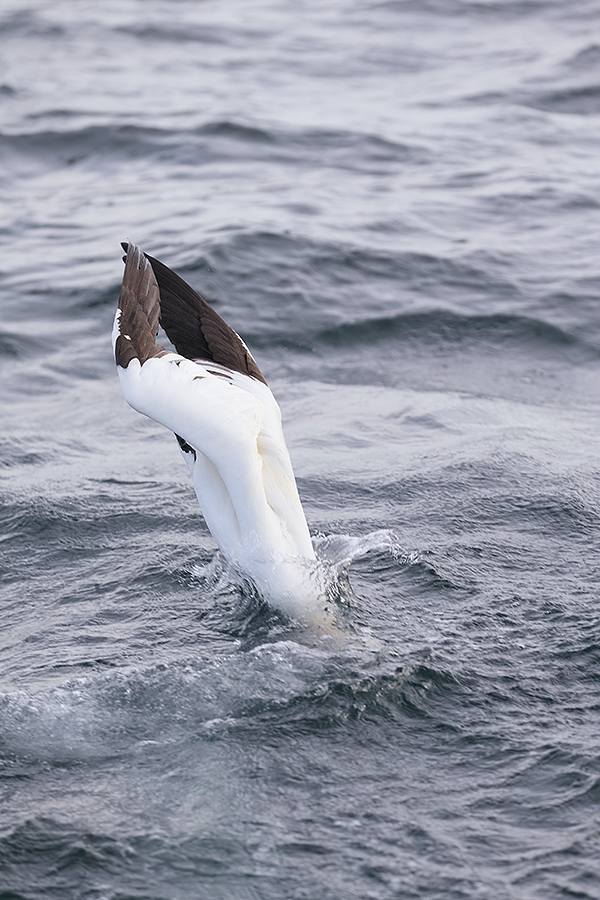
|
|
This image was created on our morning gannet boat trip with the hand held Canon EF 70-200mm f/2.8L IS II lens (this time at 150mm) and the Canon EOS-1D X. ISO 400. Evaluative metering + 2 stops off the grey sky: 1/2000 sec. at f/4 in Manual mode.
Two sensors down from the central sensor/AI Servo Surround/Rear Focus AF on the left side of the bird’s upper back just above the surface of the water was active at the moment of exposure. Click here if you missed the Rear Focus Tutorial. Be sure to click on the image to see a larger version.
|
In the “70-200mm f/2.8L IS & 1D X Combo Does Not Suck” blog post here I explained why I opted to go vertical while attempting to photograph the diving gannets that were hitting the water at high speed just yards from the boat: I was trying to create vertical arrow-type images of the birds just before or just as they hit the water. Above I succeeded.
|
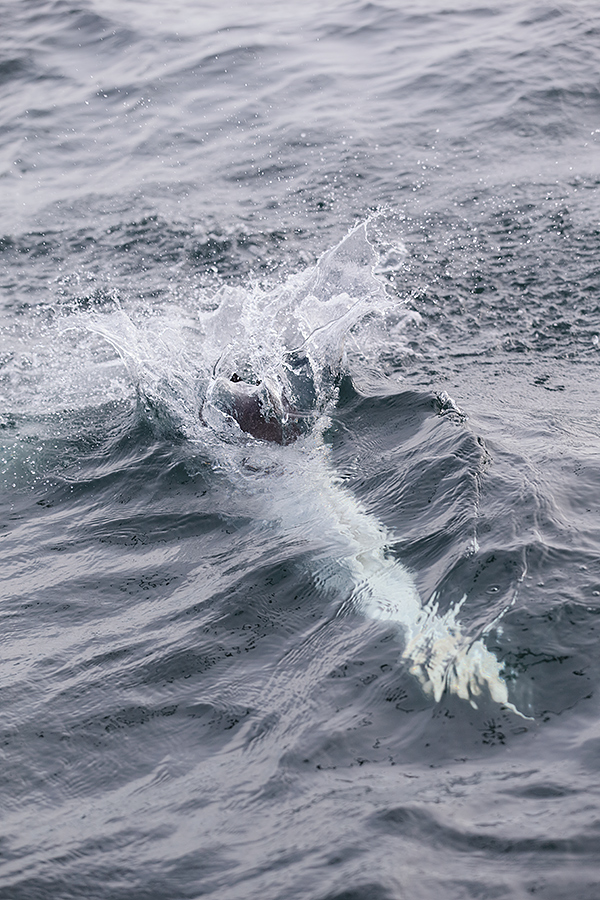
|
|
This image was also created on our morning gannet boat trip with the hand held Canon EF 70-200mm f/2.8L IS II lens (this time at 100mm) and the Canon EOS-1D X. ISO 400. Evaluative metering + 2 stops off the grey sky: 1/2000 sec. at f/4 in Manual mode.
Two sensors down from the central sensor/AI Servo Surround/Rear Focus AF on the above the middle of the bird’s body was active at the moment of exposure. Click here if you missed the Rear Focus Tutorial. Be sure to click on the image to see a larger version.
|
The Stronger Image?
Please take a moment to leave a comment and let us know which of the two diving Northern Gannet images you like best. And do let us know why.
The 2015 UK Puffins and Gannets IPTs
Our first UK Puffins and Gannets IPT was so amazingly productive and so much fun that by the 2nd afternoon Denise and I had already decided to return in very early July 2015. In addition, we may run the first-ever Ireland Puffins and Gannets IPT the week before. If you are interested in receiving early notice for either or both of these great trips, please shoot me an e-mail with the words “2015 Puffins and Gannets IPTs” cut and pasted into the Subject line.
Facebook
Be sure to like and follow BAA on Facebook by clicking on the logo link upper right. Tanks a stack!
Support the BAA Blog. Support the BAA Bulletins: Shop B&H here!
We want and need to keep providing you with the latest free information, photography and Photoshop lessons, and all manner of related information. Show your appreciation by making your purchases immediately after clicking on any of our B&H or Amazon Affiliate links in this blog post. Remember, B&H ain’t just photography!
…..
Amazon Canada
Many kind folks from north of the border, ay, have e-mailed stating that they would love to help us out by using one of our affiliate links but that living in Canada and doing so presents numerous problems. Now, they can help us out by using our Amazon Canada affiliate link by starting their searches by clicking here. Many thanks to those who have written.
Typos
In all blog posts and Bulletins, feel free to e-mail or to leave a comment regarding any typos, wrong words, misspellings, omissions, or grammatical errors. Just be right. 🙂
July 13th, 2014
The Streak Continues: 225
It is just before 5:15am here in Amherst, MA as I publish this blog post. Yesterday’s program, “What Makes a Great Natural History Image?,” my third at the NECCC conference, was very well received. I do it again today in the 10:30 till noon slot. My programs are being generously sponsored by the Canon USA Explorers of Light group. Please stop by and say “Hi.” This post, which took me about 90 minutes to prepare, marks 225 consecutive days with a new educational blog post. With so many folks getting in the habit of using our B&H links and our Amazon logo-links why quit now? April, May, June, and July have been fantastic as lots of folks are getting the message; using my affiliate links does not cost you a penny and helps support my efforts here. To show your appreciation, I do ask that you use our B&H and Amazon affiliate links on the right side of the blog for all of your purchases. Please check the availability of all photographic accessories in the BIRDS AS ART Online Store, especially Gitzo tripods, Wimberley tripod heads, and the like. We sell only what I have used and tested, and know that you can depend on. We will not sell you junk. We know the tools that you need to make creating great images easy and fun. And we are always glad to answer your gear questions via e-mail.
You can find the following items in the store: Gitzo tripods, Mongoose M3.6 and Wimberley heads, plates, low feet, and accessories, flash brackets, , Delkin e-film Pro Compact Flash Cards, LensCoat products, and our unique line-up of educational materials including ABP I & II, Digital Basics, Site and Set-up e-Guides, Canon and Nikon Camera Users and AF e-Guides, and MP-4 Photoshop video tutorials among others.
I would of course appreciate your using our B&H affiliate links for all of your major gear, video, and electronic purchases. For the photographic stuff mentioned in the paragraph above we, meaning BAA, would of course greatly appreciate your business. Here is a huge thank you to the many who have been using our links on a regular basis and visiting the BAA Online store as well.
|
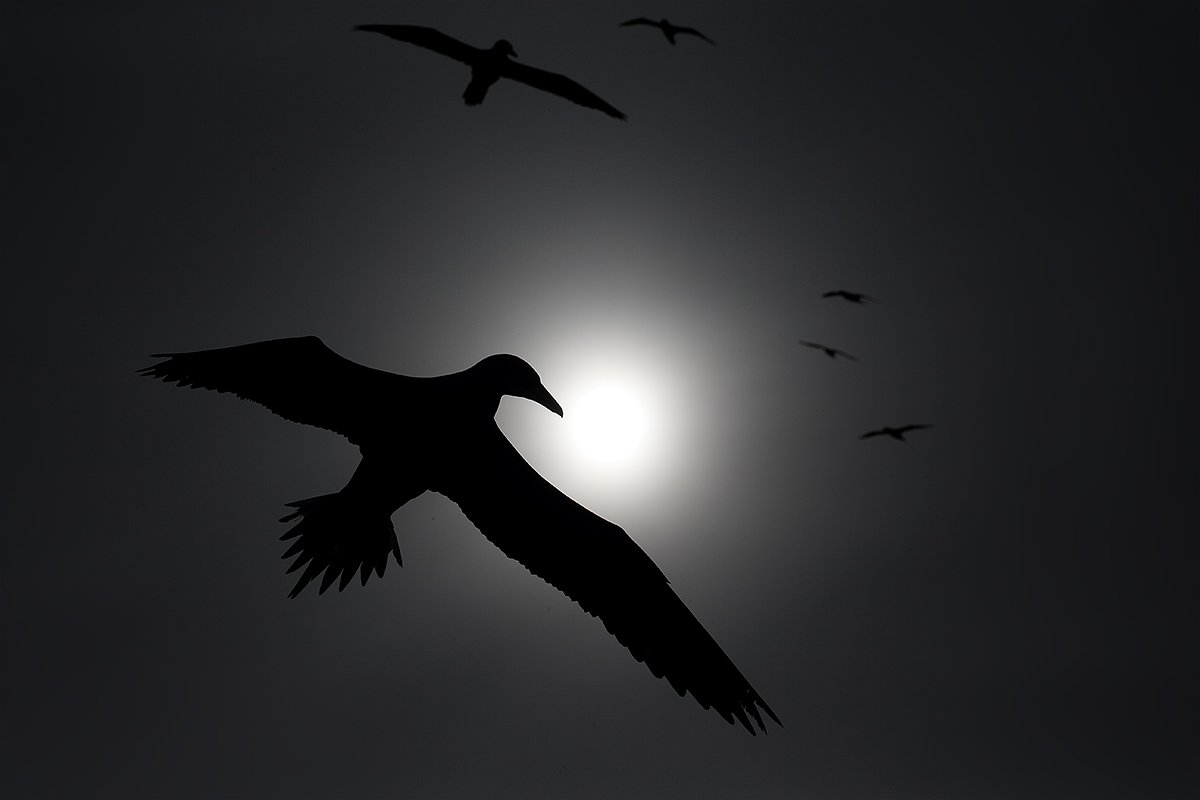
|
|
This image was created on the morning gannet boat trip on the hugely successful UK Puffins and Gannets IPT with the Canon EF 70-200mm f/2.8L IS II lens , the Canon 1.4x EF Extender III (hand held at 222mm), and the Canon EOS-1D X. ISO 200. Evaluative metering -3 stops as framed: 1/8000 sec. at f/16 in Av mode.
Central sensor/AI Servo Surround/Rear Focus AF on main subject’s head (as originally framed) was active at the moment of exposure. Click here if you missed the Rear Focus Tutorial. Be sure to click on the image to see a larger version.
|
Creating Mystery at Bass Rock
As I mentioned in the 70-200mm f/2.8L IS & 1D X Combo Does Not Suck blog post, we had changeable conditions that included foggy bright. In the two images here I opted to include the sun in the frame and to underexpose in part to add drama. With the image above I tried to follow individual birds that were heading towards the muted sun and click the shutter at just the right moment. With the image below the trick was to focus on one of the closer gulls, re-compose while being aware of keeping the image level, and then holding the shutter button down in hopes of coming up with a pleasing arrangement of the swirling birds. As seen below.
|
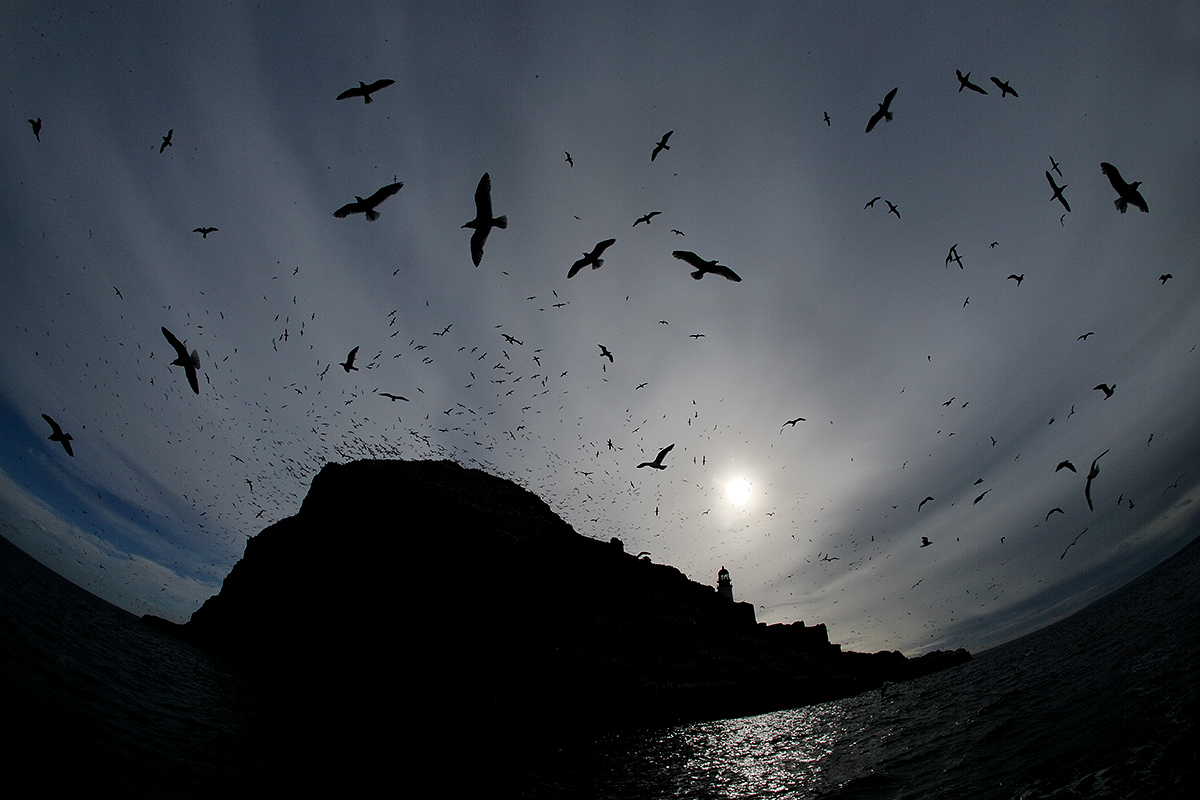
|
|
This image was created with the hand held Canon 15mm fish eye lens (now replaced by the Canon EF 8-15mm f/4L Fisheye USM lens) with the Canon EOS-1D X . ISO 400. Evaluative metering -1 stop: 1/1600 sec. f/22 in Manual mode. Color temperature: AWB.
Central sensor/AI Servo Surround/Rear Focus AF on one of the closer gulls and re-compose. Click here if you missed the Rear Focus Tutorial. Be sure to click on the image to see a larger version.
|
Your Favorite?
I like both of these images. Denise likes one of the two much better than the other. Which one do you think is the stronger image? And why?
Exposure Questions
1-Why did I need to underexpose both of the images here?
2-Why did the first image need much more under-exposure (-3 stops as compared to -1 stop) than the second image? There are two reasons.
3-Which ISO setting should I have used for both images?
ID Points
In the fish eye image the prominent birds are large gulls: Herrings with a few Lesser Black-backeds. Note their broad, slightly curved wings and relatively short fanned tails. You can pick out a few of the higher flying, smaller-in-the-frame gannets by their dead-straight wings and long straight tails.
Facebook
Be sure to like and follow BAA on Facebook by clicking on the logo link upper right. Tanks a stack!
Join Denise Ippolito and me for two great days of photography, fun, and learning at one of our soul places. We will surely be taking you out of the box on this workshop. Please click on the card to enjoy a larger version.
Bosque del Apache 2014 A Creative Adventure/BIRDS AS ART “Creative Photography Instructional Photo-Tour.” (IPT). NOV 24-25, 2014. 2-FULL DAYS: $729. Leaders: Denise Ippolito & Arthur Morris. Introductory Slide program: 7:00pm on Sunday 11/23.
Get Out of Your Box!
The Creative Bosque IPT is perfect for folks who want to learn to think outside the box, to create new and different images. This workshop is the perfect add-on for folks who are planning on attending the Festival of the Cranes. Learn to unleash your creative juices at the wondrous Bosque del Apache National Wildlife Refuge in San Antonio, New Mexico with two great leaders including the amazingly talented and creative Denise Ippolito. In-the-field instruction will include tips on gear set-up, on creating a variety of pleasing blurs, on getting the right exposure, and on designing pleasing images. And lots more. From vertical pan blurs to subject motion blurs to zoom blurs to multiple exposures we will cover it all. If conditions are perfect, we will not hesitate to take advantage of them to do some traditional bird photography. This workshop will include an inspirational introductory slide program on Sunday evening, 11/23, after dinner on your own, two morning and two afternoon photography sessions, all lunches, a digital workflow and Photoshop session after lunch on Monday, and an image critiquing session after lunch on Tuesday.
A $329 non-refundable deposit is required to hold your slot for this IPT. Your balance, payable only by check, will be due on 7/25/2014. If the trip fills, we will be glad to apply a credit applicable to a future IPT for the full amount less a $100 processing fee. If we do not receive your check for the balance on or before the due date we will try to fill your spot from the waiting list. If your spot is filled, you will lose your deposit. If not, you can secure your spot by paying your balance.
Please print, complete, and sign the form that is linked to here and shoot it to us along with your deposit check (made out to “Arthur Morris.”) You can also leave your deposit with a credit card by calling the office at 863-692-0906. If you register by phone, please print, complete and sign the form as noted above and either mail it to us or e-mail the scan. If you have any questions, please feel free to contact me via e-mail.
Support the BAA Blog. Support the BAA Bulletins: Shop B&H here!
We want and need to keep providing you with the latest free information, photography and Photoshop lessons, and all manner of related information. Show your appreciation by making your purchases immediately after clicking on any of our B&H or Amazon Affiliate links in this blog post. Remember, B&H ain’t just photography!
…..
Amazon Canada
Many kind folks from north of the border, ay, have e-mailed stating that they would love to help us out by using one of our affiliate links but that living in Canada and doing so presents numerous problems. Now, they can help us out by using our Amazon Canada affiliate link by starting their searches by clicking here. Many thanks to those who have written.
Typos
In all blog posts and Bulletins, feel free to e-mail or to leave a comment regarding any typos, wrong words, misspellings, omissions, or grammatical errors. Just be right. 🙂
July 12th, 2014
The Streak Continues: 224
It is just after 6:00am in Amherst, MA as I publish this blog post. I am still working on putting the finishing touches on “What Makes a Great Natural History Image.” (SAT and SUN 10:30 till noon.) After a rough start with Photoshop entering the Twilight Zone of its own free will and volition my Photoshop Workshop really got rolling; everyone learned a ton and went home with a copy of Digital Basics. My programs are being generously sponsored by the Canon USA Explorers of Light group. Please stop by and say “Hi.” This post, which took me about 90 minutes to prepare, marks 224 consecutive days with a new educational blog post. With so many folks getting in the habit of using our B&H links and our Amazon logo-links why quit now? April, May, June, and July have been fantastic as lots of folks are getting the message; using my affiliate links does not cost you a penny and helps support my efforts here. To show your appreciation, I do ask that you use our B&H and Amazon affiliate links on the right side of the blog for all of your purchases. Please check the availability of all photographic accessories in the BIRDS AS ART Online Store, especially Gitzo tripods, Wimberley tripod heads, and the like. We sell only what I have used and tested, and know that you can depend on. We will not sell you junk. We know the tools that you need to make creating great images easy and fun. And we are always glad to answer your gear questions via e-mail.
You can find the following items in the store: Gitzo tripods, Mongoose M3.6 and Wimberley heads, plates, low feet, and accessories, flash brackets, , Delkin e-film Pro Compact Flash Cards, LensCoat products, and our unique line-up of educational materials including ABP I & II, Digital Basics, Site and Set-up e-Guides, Canon and Nikon Camera Users and AF e-Guides, and MP-4 Photoshop video tutorials among others.
I would of course appreciate your using our B&H affiliate links for all of your major gear, video, and electronic purchases. For the photographic stuff mentioned in the paragraph above we, meaning BAA, would of course greatly appreciate your business. Here is a huge thank you to the many who have been using our links on a regular basis and visiting the BAA Online store as well.
|
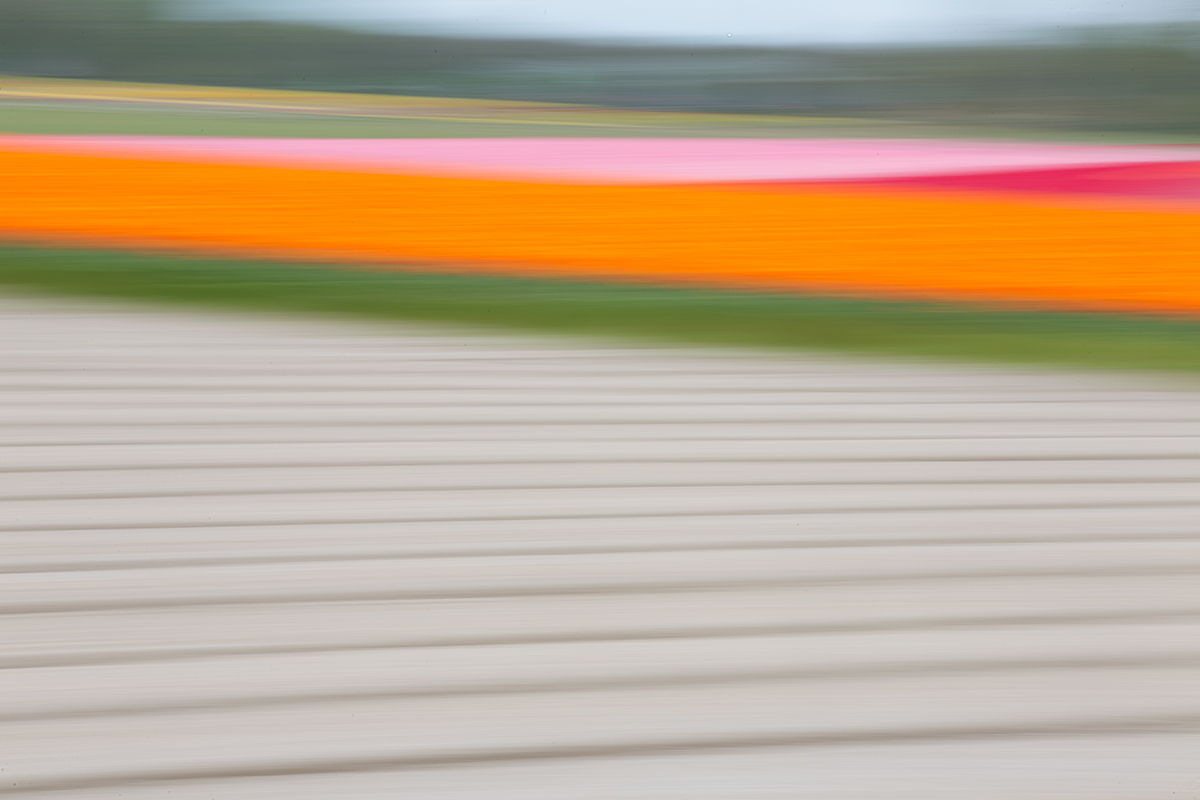
|
|
This image was created at Lisse, Holland on last April’s Tulips and a Touch of Holland IPT with the hand held Canon EF 70-200mm f/2.8L IS II lens (at 140mm) and the Canon EOS-1D X. ISO 50. Evaluative metering + 1 stop as framed: 1/5 sec. at f/29 in Manual mode.
Two sensors down from the central sensor/AI Servo Surround/Rear Focus AF as framed was active at the moment of exposure. Click here if you missed the Rear Focus Tutorial. Be sure to click on the image to see a larger version.
|
What to Do With an Empty Plowed Field of Grey Dirt?
I created this image almost as an afterthought as we headed back to our vehicles after our morning photography session. The field of grey dirt did not get anyone excited and I am not even sure what caught my eye. But when I saw the image on my laptop the contrast of the colorless almost featureless grey foreground furrows with the brilliant patches of tulips in the upper part of the frame really worked for me. Denise and I did a new version of our joint program, “Creating Pleasing Blurs” for a big crowd at the NECCC conference tonight and I must say modestly that we really knocked it out of the park. Today’s image was the last one that I put in the program and it was quite well received.
|
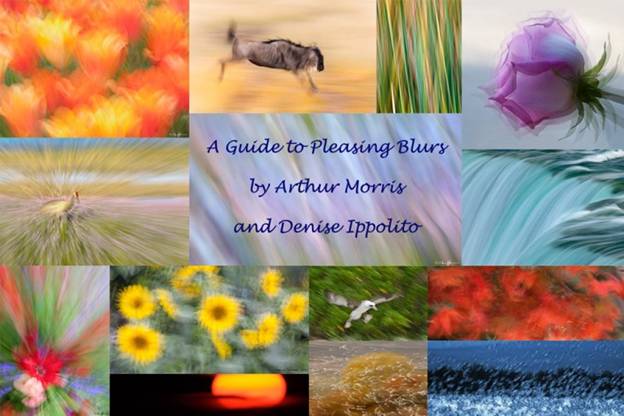
|
|
Learn the secrets of creating contest winning images in our “A Guide to Pleasing Blurs.”
|
A Guide to Pleasing Blurs
Pleasing Blurs are not accidents. Learn pretty much everything that there is about creating them in our A Guide to Pleasing Blurs by Denise Ippolito and yours truly.
Does This Image Work for You?
Does this image do anything for you? Take a minute to leave a comment and let us know what you liked or what you do not like about it. And do let us know why.
|

|
|
Denise and artie hope that you can join them next spring in Holland and learn to improve both the technical and creative aspects of your flower (and street) photography.
|
7 1/2-Day/8-Night: A Creative Adventure/BIRDS AS ART/Tulips & A Touch of Holland Instructional Photo-Tour (IPT)
Keukenhof—Delft—Amsterdam–Flower Fields—Kinderdijk
April 9 -April 16, 2015: $4995. Limit: 12 photographers/Openings 10. Four more to make the trip a go.
This trip needs 6 registrants to run so please do not purchase your plane tickets until you hear from us that the trip is a go.
Join Denise Ippolito, the author of “Bloomin’ Ideas,” and Arthur Morris, Canon Explorer of Light Emeritus, for a great trip to Holland in mid-April 2015. Day 1 of the IPT will be April 9, 2015. We will have a short afternoon get-together and then our first photographic session at the justly-famed Keukenhof. Our last day, Day 8, April 16 will be a full day of photography.
The primary subjects will be tulips and orchids at Keukenhof and the spectacularly amazing tulip, hyacinth, and daffodil bulb fields around Lisse and points north. We will spend one full day in Amsterdam. There will be optional visits to the Van Gogh Museum, the Anne Frank House and/or the Rijk’s Museum. Street photography and sightseeing will be other options. We will spend a half day at Kinderdijk where we will be photographing the windmills and doing some creative photography. We will spend an afternoon in the lovely Dutch town of Delft where we will do some street photography and shopping. There is an optional church tower tour/climb. We will also enjoy a superb fine dining experience in a traditional restaurant.
Other than the arrival date: April 9, Day 1, and the date of our last day of photography on April 16, Day 8, there is no set itinerary. We will check the weather and play everything by ear to maximize the photographic opportunities. We will try to do Amsterdam, Delft, and especially Kinderdijik, on cloudy days.
There are several huge pluses to this trip. First off, denise is an amazingly skilled and caring instructor. Both her creativity and her willingness to share and to help beginning and intermediate photographers are unmatched. And though artie has learned a ton about flower photography from denise, their styles and techniques do vary considerably. You will have a chance to be counseled by and to learn from both of them. While denise will hunt you down to help you, artie’s teaching style is more “the closer you stay to me, the more you will learn.” Both leaders consistently inspire the participants. And each other. The sky, of course, is the limit.
You will learn to create tight abstracts, how best to use depth-of-field (or the lack thereof) to improve your flower photography, how to get the right exposure and make sharp images every time, how to see the best shot, and how to choose the best perspective for a given situation. And you will of course learn to create a variety of pleasingly blurred flower images. If you bring a long lens, you will learn to use it effectively for flower photography. Denise’s two favorite flower lenses are the Canon EF 100mm f/2.8L Macro IS USM lens and the Canon EF 24-105mm f/4L IS USM lens. Mine are the Canon 100mm f/2.8L IS macro , the Canon EF 180mm f/3.5L Macro USM lens ,and the Canon EF 300mm f/2.8L IS II USM lens, all almost always on a tripod. Often with extension tubes and/or either the 1.4X or the 2X (with the 300 II) teleconverters. Denise hand holds a great deal of the time. For flower field blurs denise uses the same lenses mentioned above along with her new 70-200mm f/2.8L IS III lens. Artie’s favorite is that same 70-200 often with a 1.4X TC but he uses both the new Canon EF 24-70mm f/2.8L II USM lens and the 300 II as well. Both of us use and love the Canon EOS 5D Mark IIIfor all of our flower photography. The in-camera HDR and Multiple Exposure features are a blast.
One of the great advantages of our trip is that we will be staying in a single, strategically located hotel that is quite excellent. Do note that all ground transfers to and from Schipol Airport will be via the free hotel shuttle bus.
What’s included: Eight hotel nights. All ground transportation except for airport transfers as noted above. In-the-field instruction and small group image review and Photoshop sessions. All meals from dinner on Day 1 through dinner on Day 8. There is good food at the hotel and we will be dining there on occasion; whenever you order off the menu be it at the hotel or at another restaurant only the cost of your main course is included. On these occasions the cost of soups, appetizers, salads, sodas and other beverages, alcoholic drinks and wine, bottled water, and desserts are not included. Snacks, personal items, phone calls, etc. are also not included. The cost of bus or train transportation to and from Amsterdam (about $20 US), museum entry, and tower and church entry fees (optional) are likewise not included.
Beware of seemingly longer, slightly less expensive tours that include travel days and days sitting in the hotel doing nothing as part of the tour. In addition, other similar trips have you changing hotels often and needlessly. One final note on other similar trips: the instructors on this trip actually instruct. On other similar trips the instructors, though usually imminently qualified, serve for the most part as van drivers and van door openers.
A non-refundable deposit of $1,000 per person is required to hold your spot. The second payment of $2,000 due by October 30, 2014. The balance is due on January 15, 2015. Payments in full are of course welcome at any time. All payments including the deposit must be by check made out to “Arthur Morris.” As life has a way of throwing an occasional curve ball our way, you are urged to purchase travel insurance within 15 days of our cashing your check. Artie uses and recommends Travel Insurance Services. All payments are non-refundable unless the trip fills to capacity. In that case, all payments but your deposit will be refunded. If the trip does not run every penny will of course be refunded. Again, please do not purchase your air tickets until you hear from us that the trip is a go. We are very confident that it will.
All checks should be made out to “Arthur Morris” and sent to: Arthur Morris, PO Box 7245, Indian Lake Estates, FL 33855. Call Jim or Jen in the BAA office with any additional registration questions: 863-692-0906.
For couples or friends signing up at the same time for the tulip trip, a $200/duo discount will be applied to the final payment.
When you send your deposit check, please print, sign, and include the paperwork here.
If you have any questions on the trip please contact artie by e-mail or denise by e-mail.
Support the BAA Blog. Support the BAA Bulletins: Shop B&H here!
We want and need to keep providing you with the latest free information, photography and Photoshop lessons, and all manner of related information. Show your appreciation by making your purchases immediately after clicking on any of our B&H or Amazon Affiliate links in this blog post. Remember, B&H ain’t just photography!
…..
Amazon Canada
Many kind folks from north of the border, ay, have e-mailed stating that they would love to help us out by using one of our affiliate links but that living in Canada and doing so presents numerous problems. Now, they can help us out by using our Amazon Canada affiliate link by starting their searches by clicking here. Many thanks to those who have written.
Typos
In all blog posts and Bulletins, feel free to e-mail or to leave a comment regarding any typos, wrong words, misspellings, omissions, or grammatical errors. Just be right. 🙂
July 11th, 2014
The Streak Continues: 223
It is just afer 5:00am in Amherst, MA as I publish this blog post and begin to put the finishing touches on my 3 hour Photoshop workshop that opens the 2014 NECCC Conference in Amherst, MA where both Denise and I are speaking. My programs are being generously sponsored by the Canon USA Explorers of Light group. Please stop by and say “Hi.” This post, which took me about 90 minutes to prepare, marks 223 consecutive days with a new educational blog post. With so many folks getting in the habit of using our B&H links and our Amazon logo-links why quit now? April, May and June have been fantastic as lots of folks are getting the message; using my affiliate links does not cost you a penny and helps support my efforts here. To show your appreciation, I do ask that you use our B&H and Amazon affiliate links on the right side of the blog for all of your purchases. Please check the availability of all photographic accessories in the BIRDS AS ART Online Store, especially Gitzo tripods, Wimberley tripod heads, and the like. We sell only what I have used and tested, and know that you can depend on. We will not sell you junk. We know the tools that you need to make creating great images easy and fun. And we are always glad to answer your gear questions via e-mail.
You can find the following items in the store: Gitzo tripods, Mongoose M3.6 and Wimberley heads, plates, low feet, and accessories, flash brackets, , Delkin e-film Pro Compact Flash Cards, LensCoat products, and our unique line-up of educational materials including ABP I & II, Digital Basics, Site and Set-up e-Guides, Canon and Nikon Camera Users and AF e-Guides, and MP-4 Photoshop video tutorials among others.
I would of course appreciate your using our B&H affiliate links for all of your major gear, video, and electronic purchases. For the photographic stuff mentioned in the paragraph above we, meaning BAA, would of course greatly appreciate your business. Here is a huge thank you to the many who have been using our links on a regular basis and visiting the BAA Online store as well.
The First Step in Taming the Whites…
As stated here often, I try to bring my WHITEs into Photoshop with no RGB values higher than the mid-230s. That usually results in WHITEs that are bright WHITE with sufficient detail. You learn to do that in the field by watching the histogram carefully and making sure that you have no blinkies (flashing highlight alerts) on the subject.
Assuming that you have not severely toasted the WHITE highlights in the original RAW capture the very best way to tame the WHITEs is to get into the habit of checking the RGB values the moment that you bring the image into your RAW converter. In DPP, place the cursor on the brightest WHITEs (on the breast here) and look at the RGB values in the bottom left of the frame. There, you will see three 3-digit numbers separated by commas. You can move your cursor around a bit while looking for the highest set of numbers. For the image above that was 236, 238, 242. That translates to R=236, G=238, B=242, a bit higher than I prefer. To tame the WHITEs I moved the Brightness adjustment slider 2 clicks to the left to -.33 and moved the Highlight slider 1 click to the left to -1. That yielded RGB values of 231, 234, 237.
Converting the same image in Photoshop CS-6 I placed the cursor on the brightest WHITEs, again on the breast, and noted the RGB values on the left just below the histogram at the top of the Camera RAW 8.3 dialogue box. There I actually increased the Exposure to +20 to open up the BLACKs, moved the Highlights slider to the left to -29, and moved the Whites slider to the left to -12. Now my RGB values for the brightest WHITEs read 235, 236, 238.
If your image is under-exposed your RGB values will be in the 210-230 range; in those cases to produce bright WHITEs you will need to increase the exposure while checking the RGB values. Again, you want them to wind up in the mid-230s. Once you have done that, there are lots of ways to bring out the detail in the WHITEs once you have brought the converted image into Photoshop. Those are all described in my Digital Basics File.
Digital Basics
Digital Basics is written in my easy-to-follow, easy-to-understand style. Are you tired of making your images look worse in Photoshop? Digital Basics File is an instructional PDF that is sent via e-mail. It includes my complete digital workflow, dozens of great Photoshop tips, the use of Contrast Masks, several different ways of expanding and filling in canvas, all of my time-saving Keyboard Shortcuts, Quick Masking, Layer Masking, and NIK Color Efex Pro basics, my killer image clean-up techniques, creating time-saving actions, and lots more.
DPP V4.0
Canon recently released a new version of DPP, V4.0. It can be downloaded here. You will need to enter your 1D X or 5D Mark III serial number to start the download. I now have 4.0 on both of my laptops. While early reports are that it is significantly better in many areas than any previous versions, I was totally baffled by the interface. It bears no resemblance to any current version of DPP. Arash Hazeghi and I will be working on a DPP V4.0 RAW Conversion eGuide quite soon. It will require a separate purchase. V4.0 works only with 1D X, 5D III, 6D, and 1Dc images. Folks with older bodies (both pro-sumer and professional) will need to continue using previous versions of DPP. I recently updated to V3.11 and have been very happy with it. I was glad to note the addition of a Color Temperature slider: I had been suggesting that ever since I began using DPP about 2 years ago.
The currently available version of the DPP Raw Conversion Guide is ideal for folks (like me) who use V3.11 or prior. To learn why I now convert all of my images with DPP, click here.
Facebook
Be sure to like and follow BAA on Facebook by clicking on the logo link upper right. Tanks a stack!
|

|
|
Do consider joining me for a once in a lifetime trip to the Galapagos archipelago in July, 2015.
|
GALAPAGOS Photo Cruise of a Lifetime IPT/The Complete Galapagos Photographic Experience. July 14-28, 2015 on the boat. 13 FULL and two half-days of photography: $12,499. Limit 14 including the leader(s)/Openings: 7.
My two-week Galapagos Photo-Cruises are without equal. The world’s best guide, a killer itinerary, a great boat (the Samba), and the best leader with eight Galapagos cruises under his belt. Pre-trip and pre-landing location-specific gear advice. In-the-field photo instruction and guidance. Jeez, I almost forgot: fine dining at sea!
The great spots that we will visit include Tower Island (including Prince Phillips Steps and Darwin Bay), Hood Island (including Punta Suarez, the world’s only nesting site of Waved Albatross, and Gardner Bay)—each of the preceding are world class wildlife photography designations that rank right up there with Antarctica, Africa, and Midway. We will also visit Fernandina, Puerto Ayora for the tortoises, Puerto Egas—James Bay, North Seymour and Isla Lobos for nesting Blue-footed Booby (most years), South Plaza, Floreana, and Urbina Bay, all spectacular in their own right. We visit every great spot on a single trip. Plus tons more. And there will he lots of opportunities to snorkel on sunny mid-days for those like me who wish to partake.
We will be the first boat on each island in the morning and the last boat to leave each island every afternoon. If we are blessed with overcast weather, we will often spend 5-6 hours at the best sites. And as noted above, mid-day snorkeling is an option on most sunny days depending on location. Note: some of the walks are a bit strenuous. Great images are possible on all landings with a hand held 70-200mm lens and a 1.4X teleconverter. I bring a longer lens ashore on most landings as that fits my style. I generally work with either the Canon 300mm f/2.8L IS or the Canon 200-400mm f/4 L IS with Internal Extender.
Do know that there is a NatureScapes Galapagos trip: one week for $8495. Thus, my trip represents a tremendous value; why go all that way and miss half of the great photographic locations?
The Logistics
Fly to Guayacil, Ecuador on July 12, 2015. Travel insurance/rest day: July 13 (We may or may not offer a photo outing on the 13th). Fly to the archipelago on July 14 and board the Samba. Get off the boat on July 28. Fly to Guayacil that afternoon. Fly home on the early morning of July 29 unless you are staying on or going elsewhere (or catching a red-eye flight on the evening of the 28th).
$12,499 includes just about everything: all transfers, guide and park fees, all food on the boat, transfers and ground transportation, your flights to the archipelago, and three nights (double occupancy) in a top notch hotel in Guayacil. If you are good to go, a non-refundable deposit of $5,000 per person is due immediately. The second payment of $4,000 is not due until 11/1/14. The final payment of $3749 per person will be due on 2/1/15. A $200 discount will be applied to each of the balances for couples or friends who register at the same time.
Purchasing travel insurance within 2 weeks of our cashing your deposit check is strongly recommended. On my past two cruises a total of 5 folks were forced to cancel less than one week prior to the trip. My family and I use Travel Insurance Services and strongly recommend that you do the same.
Not included: your round trip airfare from your home to and from Guayacil, beverages on the boat, phone calls, your meals in Guayacil, personal items, and a $600/person cash tip for the crew and the guide—this works out to roughly $40/day to be shared by the 7 folks who will be waiting on us hand and foot every day for two weeks. The service is so wonderful that many folks choose to tip extra.
Please e-mail for the complete itinerary and for additional info and images. Please cut and paste “Galapagos 2015 Info Please) into the Subject line.
Support the BAA Blog. Support the BAA Bulletins: Shop B&H here!
We want and need to keep providing you with the latest free information, photography and Photoshop lessons, and all manner of related information. Show your appreciation by making your purchases immediately after clicking on any of our B&H or Amazon Affiliate links in this blog post. Remember, B&H ain’t just photography!
…..
Amazon Canada
Many kind folks from north of the border, ay, have e-mailed stating that they would love to help us out by using one of our affiliate links but that living in Canada and doing so presents numerous problems. Now, they can help us out by using our Amazon Canada affiliate link by starting their searches by clicking here. Many thanks to those who have written.
Typos
In all blog posts and Bulletins, feel free to e-mail or to leave a comment regarding any typos, wrong words, misspellings, omissions, or grammatical errors. Just be right. 🙂
July 10th, 2014 The Streak Continues: 222
It is just afer 5:45am at my Mom’s house in Holbrook, NY. I did not get much sleep after 2am this morning–can you say jet lag? I finally got out of bed at 4am to finish up this blog post. It took about four hours in all to create this post. Today Denise and I drive up to the 2014 NECCC Conference in Amherst, MA where both Denise and I are speaking. My programs are being generously sponsored by the Canon USA Explorers of Light group. Please stop by and say “Hi.” This post marks 222 consecutive days with a new educational blog post; there is a ton of stuff to learn here today. With so many folks getting in the habit of using our B&H links and our Amazon logo-links why quit now? April, May and June have been fantastic as lots of folks are getting the message; using my affiliate links does not cost you a penny and helps support my efforts here. To show your appreciation, I do ask that you use our B&H and Amazon affiliate links on the right side of the blog for all of your purchases. Please check the availability of all photographic accessories in the BIRDS AS ART Online Store, especially Gitzo tripods, Wimberley tripod heads, and the like. We sell only what I have used and tested, and know that you can depend on. We will not sell you junk. We know the tools that you need to make creating great images easy and fun. And we are always glad to answer your gear questions via e-mail.
You can find the following items in the store: Gitzo tripods, Mongoose M3.6 and Wimberley heads, plates, low feet, and accessories, flash brackets, , Delkin e-film Pro Compact Flash Cards, LensCoat products, and our unique line-up of educational materials including ABP I & II, Digital Basics, Site and Set-up e-Guides, Canon and Nikon Camera Users and AF e-Guides, and MP-4 Photoshop video tutorials among others.
I would of course appreciate your using our B&H affiliate links for all of your major gear, video, and electronic purchases. For the photographic stuff mentioned in the paragraph above we, meaning BAA, would of course greatly appreciate your business. Here is a huge thank you to the many who have been using our links on a regular basis and visiting the BAA Online store as well.
|
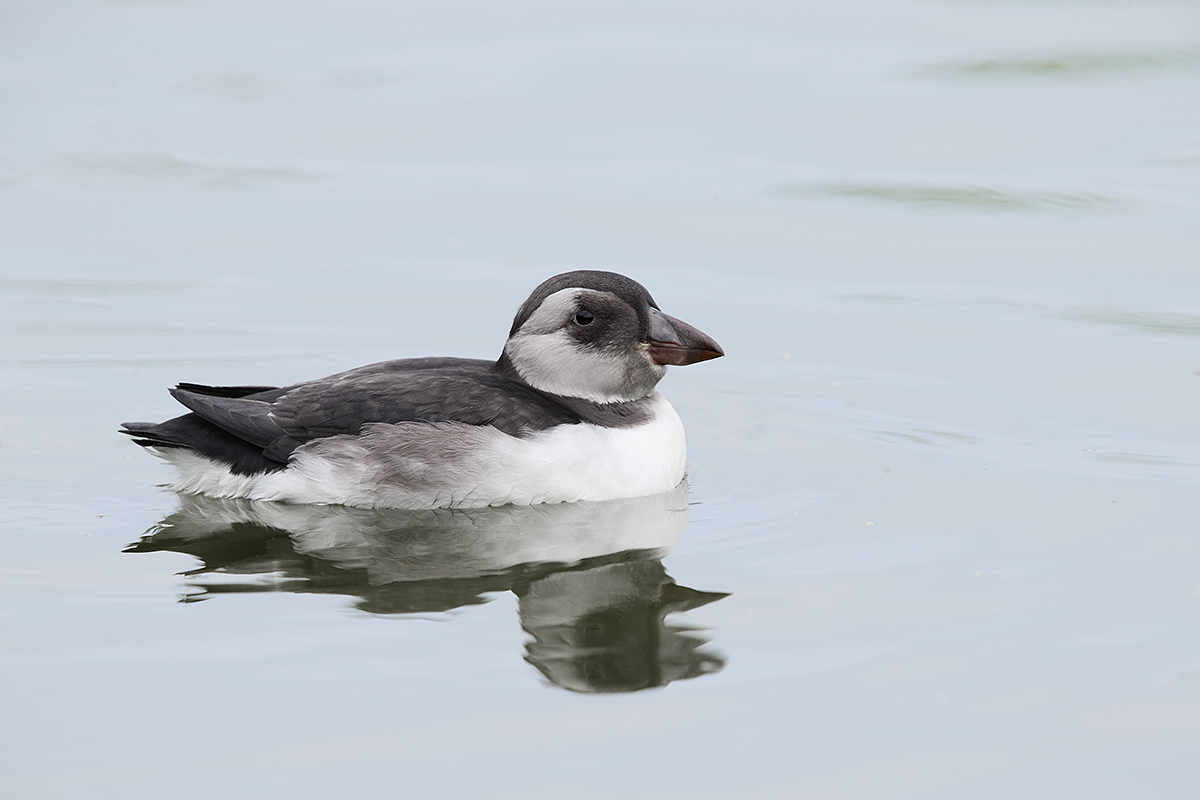
|
|
Though it was hard to believe as I was sitting in my Mom’s house in Holbrook, NY when I began this blog post on Wednesday, July 9, this image was created on the previous afternoon, July 8, in the UK. The image was created with the Gitzo 3532 LS carbon fiber tripod, the Mongoose M3.6 head, the Canon EF 600mm f/4L IS II USM lens, the Canon Extender EF 2X III, and the Canon EOS-1D X. ISO 400. Evaluative metering + 1 1/3 stops as framed: 1/320 sec. at f/10 in Manual mode. AWB in cloudy bright conditions.
Central Sensor (by necessity)/AI Servo-Expand/Rear Focus AF on the side of the bird’s upper breast just below the base of the bird’s bill was active at the moment of exposure. When you add the 2X TC to an f/4 lens with the 1DX or the 5D III you need to remember to hit the MFn button to switch to expand and benefit from having four additional AF sensors activated. You can learn everything there is to know about the 1D X and 5D III AF systems including how to manage the various AF Area Selection Modes, when to use which one, my Custom Case for photographing birds in flight and in action, and several ways to move the AF sensor around in the 1D X AF Guide and the 5D Mark III User’s Guide. Click here to see the latest version of the Rear Focus Tutorial. Click on the image to see a larger version. .
Baby Puffin #1
|
Unexpected Treasure
Several folks in the group had gotten brief looks at a few juvenile totally black and grey above Atlantic Puffins with their small dark bills. One was lost on a muddy flat and was–appropriately–covered in thick black muck. Several others, still covered in soft grey down, were seen peeking out of their burrows. On our afternoon seabird island there is a small pond where adult and juvenile Black-headed Gulls bathed each afternoon. On our last photo session of the trip I was the first one to walk by the pond. I saw a small grey bird with a white breast swimming to and fro, avoiding the occasional dive-bombing gull. When I raised my lens, I was shocked to see that it was a fledgling Atlantic Puffin. The juvenile puffins most often leave their burrows at night and usually head directly to the sea where they spend their first winter. I have never heard of much less seen one swimming in a shallow pond. I quickly called the rest of the group for a very rare photographic opportunity.
|
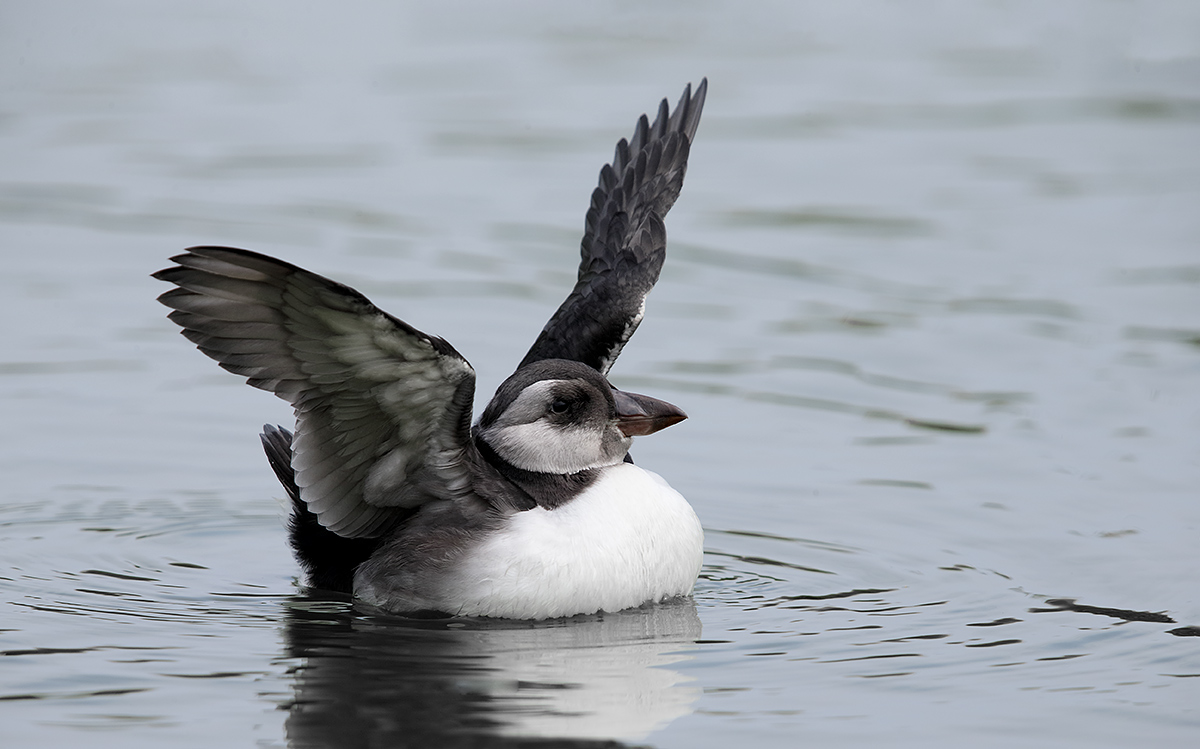
|
|
This image was also created yesterday afternoon in the UK at with the Gitzo 3532 LS carbon fiber tripod, the Mongoose M3.6 head, the Canon EF 600mm f/4L IS II USM lens, the Canon Extender EF 2X III, and the Canon EOS-1D X. ISO 400. Evaluative metering + 1 stop as framed: 1/500 sec. at f/9 in Manual mode. AWB in cloudy bright conditions.
Central Sensor (by necessity)/AI Servo-Expand/Rear Focus AF below and slightly forward of the eye where the black neck ring met the grey face was active at the moment of exposure. When you add the 2X TC to an f/4 lens with the 1DX or the 5D III you need to remember to hit the MFn button to switch to expand and benefit from having four additional AF sensors activated. You can learn everything there is to know about the 1D X and 5D III AF systems including how to manage the various AF Area Selection Modes, when to use which one, my Custom Case for photographing birds in flight and in action, and several ways to move the AF sensor around in the 1D X AF Guide and the 5D Mark III User’s Guide. Click here to see the latest version of the Rear Focus Tutorial. Click on the image to see a larger version. .
Baby Puffin #2
|
When Longer is Better/Getting Set Up
Though a seemingly tame bird the baby puffin remained at the far end of the small pool. Most of us were under-gunned when it came to focal length. In an effort to get a bit longer, I had borrowed Jean-Luc Vaillant’s 200-400 for the last boat trip; even at 784mm I was wishing that I was working at 1200mm. UK Puffins and Gannets IPT participants (both multiple IPT veterans and good friends) Mike Goldhamer of Sand Diego and George Golumbeski (both of whose fathers had their names Americanized by the folks at Ellis Island when they immigrated to the US) each had their 600 IIs with them. Jean-Luc, another multiple IPT veteran and good friend, loaned Mike his 2X III TC. George has his along.
As Mike and George began photographing the very popular young puffin with the 600II/2X III/1D X combo, I made sure that each of them was set up correctly in Manual mode with the right exposure. With its dark feathers and dusky face you want to make sure to push the exposure as far to the right as possible without getting any blinkies on the breast. It was an interesting situation: in the darker green water zero or +1/3 stop gave the best exposure. In the light blue water that came out to about +1 1/3 or +1 2/3 stops. Please remember that there is no EC (exposure compensation) when you are working in Manual Mode; you set the correct exposure for the subject and watch the exposure indicator move along the scale as the framing of light and dark elements and background tonalities changes.
|
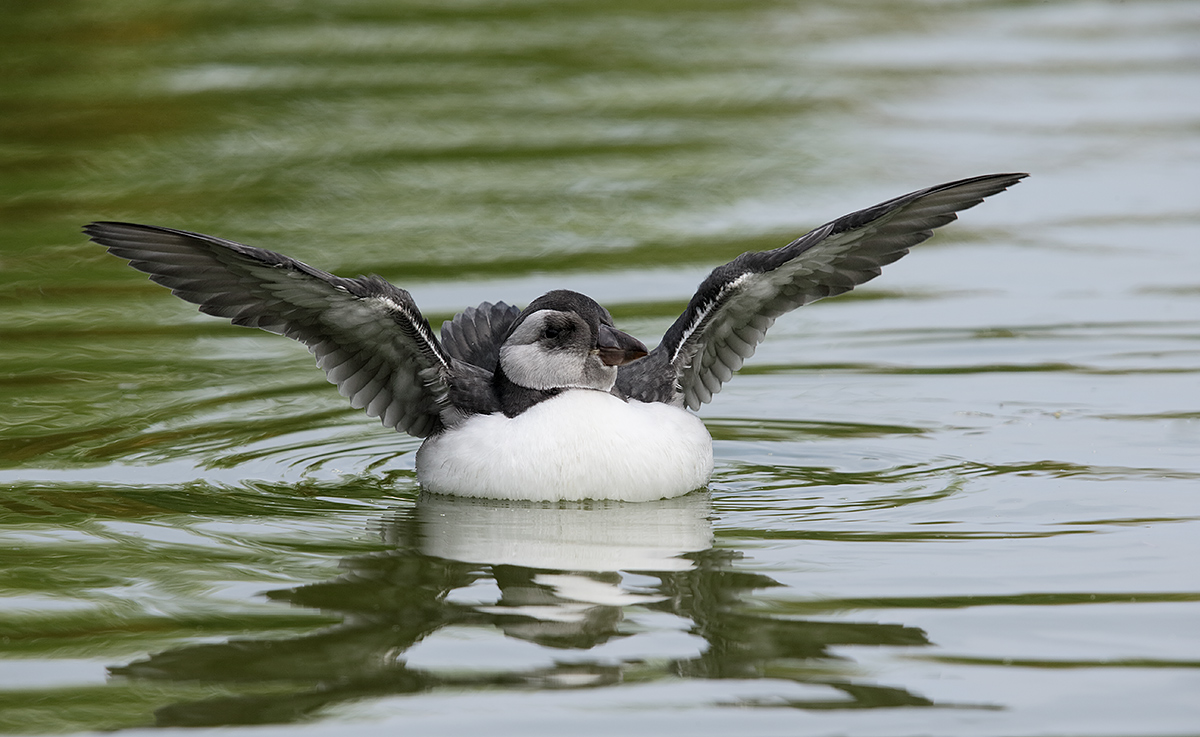
|
|
Again with the Gitzo 3532 LS carbon fiber tripod, the Mongoose M3.6 head, the Canon EF 600mm f/4L IS II USM lens, the Canon Extender EF 2X III, and the Canon EOS-1D X. ISO 400. Evaluative metering at zero as framed: 1/500 sec. at f/10 in Manual mode. AWB in cloudy bright conditions.
Central Sensor (by necessity)/AI Servo-Expand/Rear Focus AF just below the bill where the black neck ring met the white upper breast was active at the moment of exposure. Again, when you add the 2X TC to an f/4 lens with the 1DX or the 5D III you need to remember to hit the MFn button to switch to expand and benefit from having four additional AF sensors activated. You can learn everything there is to know about the 1D X and 5D III AF systems including how to manage the various AF Area Selection Modes, when to use which one, my Custom Case for photographing birds in flight and in action, and several ways to move the AF sensor around in the 1D X AF Guide and the 5D Mark III User’s Guide. Click here to see the latest version of the Rear Focus Tutorial. Click on the image to see a larger version. .
Baby Puffin #3
|
Kindness and Generosity
After having their fill of the amazing little puffin, both Mike and George kindly shared their 600 IIs with a 2X III in place with Jean-luc, with me, and with Denise. Donna Bourdon, after photographing the juvie puffin with her 400 DO/1.4X III TC rig, was off somewhere having a ton of fun and Dave Nielson was working the bird with his 600 II/1.4X II rig. Nikon shooter Milton McLain joined in the fun while working at a shorter focal length.
George had a ball shooting flight with the 200-400 that I had borrowed from Jean-luc and Mike did the same with Jean-luc’s 300 II. Thanks a stack to all involved in the share-fest.
As we headed for the boat to leave the island for the last time, all the while getting pecked on our heads by the Arctic Terns, each of us had a huge smile on our face. What better way could there be to end a great trip than with a swimming baby Atlantic Puffin?
Image Questions
1-Which image offers the best look at the face?
2-Which image features the most dramatic pose?
3-Which image is your favorite?
Facebook
Be sure to like and follow BAA on Facebook by clicking on the logo link upper right. Tanks a stack!
Support the BAA Blog. Support the BAA Bulletins: Shop B&H here!
We want and need to keep providing you with the latest free information, photography and Photoshop lessons, and all manner of related information. Show your appreciation by making your purchases immediately after clicking on any of our B&H or Amazon Affiliate links in this blog post. Remember, B&H ain’t just photography!
…..
Amazon Canada
Many kind folks from north of the border, ay, have e-mailed stating that they would love to help us out by using one of our affiliate links but that living in Canada and doing so presents numerous problems. Now, they can help us out by using our Amazon Canada affiliate link by starting their searches by clicking here. Many thanks to those who have written.
Typos
In all blog posts and Bulletins, feel free to e-mail or to leave a comment regarding any typos, wrong words, misspellings, omissions, or grammatical errors. Just be right. 🙂
July 9th, 2014 The Streak Continues: 221
It is 7:30am here in the Edinburg (Scotland) Airport as we get ready to board our flight to Newark. Then it’s on to my Mom’s and then up to the NECC conference where both Denise and I are speaking. This post marks 221 consecutive days with a new educational blog post. With so many folks getting in the habit of using our B&H links and our Amazon logo-links why quit now? April, May and June have been fantastic as lots of folks are getting the message; using my affiliate links does not cost you a penny and helps support my efforts here. To show your appreciation, I do ask that you use our B&H and Amazon affiliate links on the right side of the blog for all of your purchases. Please check the availability of all photographic accessories in the BIRDS AS ART Online Store, especially Gitzo tripods, Wimberley tripod heads, and the like. We sell only what I have used and tested, and know that you can depend on. We will not sell you junk. We know the tools that you need to make creating great images easy and fun. And we are always glad to answer your gear questions via e-mail.
You can find the following items in the store: Gitzo tripods, Mongoose M3.6 and Wimberley heads, plates, low feet, and accessories, flash brackets, , Delkin e-film Pro Compact Flash Cards, LensCoat products, and our unique line-up of educational materials including ABP I & II, Digital Basics, Site and Set-up e-Guides, Canon and Nikon Camera Users and AF e-Guides, and MP-4 Photoshop video tutorials among others.
I would of course appreciate your using our B&H affiliate links for all of your major gear, video, and electronic purchases. For the photographic stuff mentioned in the paragraph above we, meaning BAA, would of course greatly appreciate your business. Here is a huge thank you to the many who have been using our links on a regular basis and visiting the BAA Online store as well
|
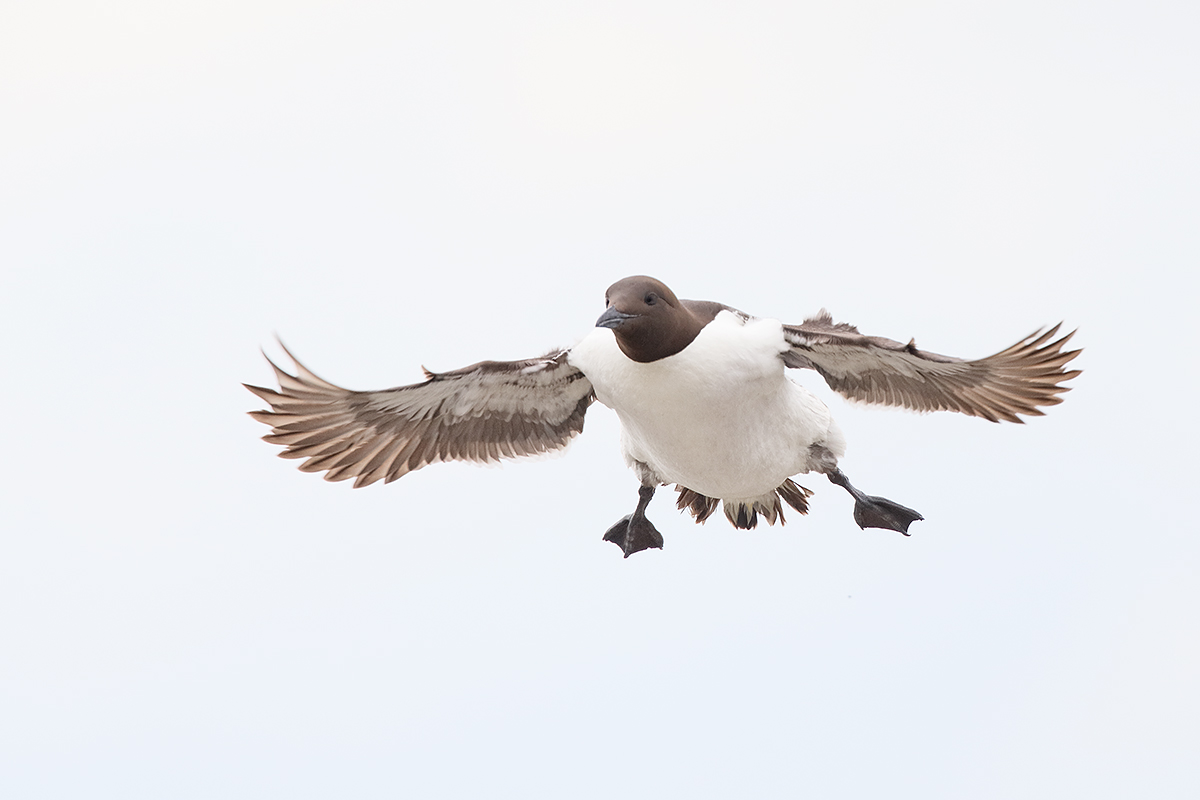
|
|
This image was created on the same morning with the hand held Canon EF 300mm f/2.8L IS II USM lens, the Canon Extender EF 2X III, and the Canon EOS-1D X. ISO 800. Evaluative metering +3 stops off the light grey sky: 1/1600 sec. at f/5.6 in Manual mode. AWB in cloudy conditions.
Central sensor/AI Servo Surround/Rear Focus AF on the top of the bird’s breast was again active at the moment of exposure as it should be for all flight photography. Click here to see the latest version of the Rear Focus Tutorial. Click on the image to see a larger version.
|
Why Stand in One Spot for 2 Hours Without Moving With the 300 II/2X III TC/1D X?
With the slight change in wind direction the puffins were not landing right at us at point blank range as they had been doing the day before. So several of us took the short walk across the island to see how the Commom Murres were landing. Quite well, thank you. Commom Murre is called Common Guillemot in Europe. It is a delightful bird with a sweet looking face and a soft chocolate-colored hood that looks almost black on sunny days. I had been looking for a good situation for photographing them in flight, or better yet, landing towards us, so when I found just that, I stood in the same spot until ten minutes before it was time to head back to the dock for the short sail to our afternoon landing.
|
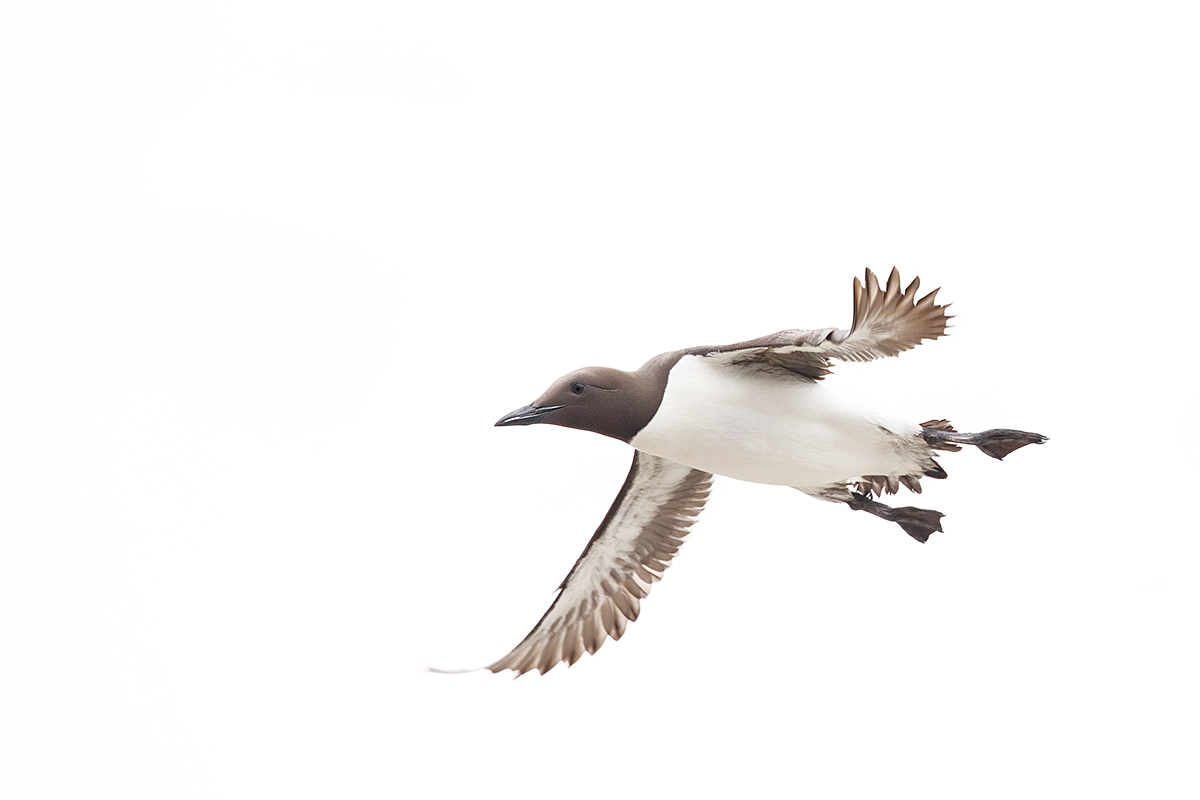
|
|
This image was created on the morning of July 6 with the hand held Canon EF 300mm f/2.8L IS II USM lens, the Canon Extender EF 2X III, and the Canon EOS-1D X. ISO 800. Evaluative metering +3 stops off the light grey sky: 1/1600 sec. at f/5.6 in Manual mode. AWB in cloudy conditions.
Central sensor/AI Servo Surround/Rear Focus AF just caught the tips of the bird’s trailing feet as originally framed and was of course active at the moment of exposure. Click here to see the latest version of the Rear Focus Tutorial. Click on the image to see a larger version. See below for the original image.
|
The Optimized Image
As you can see by looking at the original image below, the subject was way too far forward in the frame, practically leaving the frame rather than entering it. Se more below.
|
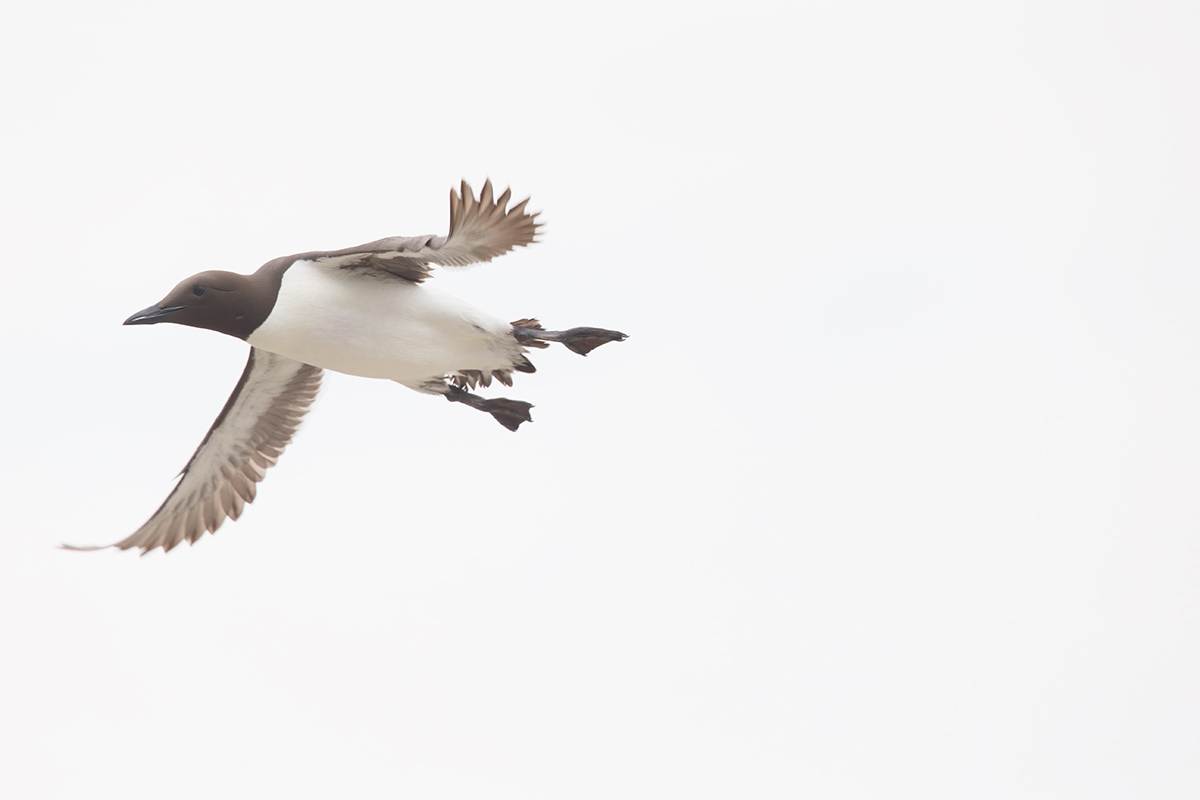
|
|
This is a JPEG that represents the original unsharpened image as it came out of camera. The optimized image is just above. I used techniques from APTATS II to move the bird back in the frame.
|
Pan Faster!
My panning rate was slower than the speed of the bird in flight. As noted above, this left the bird too far forward in the frame. I used techniques from APTATS II to move the bird back and down a bit in the frame.
Your Fave?
Please take a moment to let us know which image you like best. And why.
APTATS I & II
Learn the details of advanced Quick Masking techniques in APTATS I. Learn Advanced Layer Masking Techniques in APTATS I. Mention this blog post and apply a $5 discount to either with phone orders only. Buy both APTATS I and APTATS II and we will be glad to apply at $15 discount with phone orders only. Please call Jim or Jennifer weekdays at 863-221-2372 to take advantage of this special offer.
Nickerson Baby Beach-nesting Birds IPT: 3-Full Days/July 15-17, 2014: $1199. Introductory meet and greet: 8pm, Monday, July 14, 2014. Co-leaders Arthur Morris and Denise Ippolito
Late Registration Discount: Call Jim weekdays at 863-692-0906 for details or call artie this SAT or SUN (6/28 or 29) only at 863-692-0806. Or contact us via e-mail.
With a small group pretty much guaranteed, do consider joining us on Long Island, NY this coming July to photograph Black Skimmers–it’s looking like a great year for skimmer nesting, Common Terns with chicks, American Oystercatcher families, and possibly some just-hatched Black Skimmer chicks. The opportunities will include chances to photograph a variety of breeding behaviors including courtship feeding, display flight and combat, and copulations. Car-pooling is recommended; if we opt to return to the beach before 5pm on cloudy days for example) there is a $30/vehicle parking fee that is not included so it is best to share that expense. Parking in the morning is free.
Because of the late date, your non-refundable payment in full is due when you register.
Please print, complete, and sign the form that is linked to here and shoot it to us along with your deposit check (made out to “Arthur Morris.”) Though we prefer a check, you can also leave your deposit with a credit card by calling the office at 863-692-0906. If you register by phone, please print, complete and sign the form as noted above and either mail it to us or e-mail the scan.
If you have any questions, please feel free to contact me via e-mail
Facebook
Be sure to like and follow BAA on Facebook by clicking on the logo link upper right. Tanks a stack!
Support the BAA Blog. Support the BAA Bulletins: Shop B&H here!
We want and need to keep providing you with the latest free information, photography and Photoshop lessons, and all manner of related information. Show your appreciation by making your purchases immediately after clicking on any of our B&H or Amazon Affiliate links in this blog post. Remember, B&H ain’t just photography!
…..
Amazon Canada
Many kind folks from north of the border, ay, have e-mailed stating that they would love to help us out by using one of our affiliate links but that living in Canada and doing so presents numerous problems. Now, they can help us out by using our Amazon Canada affiliate link by starting their searches by clicking here. Many thanks to those who have written.
Typos
In all blog posts and Bulletins, feel free to e-mail or to leave a comment regarding any typos, wrong words, misspellings, omissions, or grammatical errors. Just be right. 🙂
July 8th, 2014 The Streak Continues: 220
It is 7:00am here in Bamburgh, UK as I hit publish for this blog post. It is drizzling pretty hard right now. Breakfast is at eight. This post marks a ridiculous 220 consecutive days with a new blog post. With so many folks getting in the habit of using our B&H links and our Amazon logo-links why quit now? April, May and June have been fantastic as lots of folks are getting the message; using my affiliate links does not cost you a penny and helps support my efforts here. To show your appreciation, I do ask that you use our B&H and Amazon affiliate links on the right side of the blog for all of your purchases. Please check the availability of all photographic accessories in the BIRDS AS ART Online Store, especially Gitzo tripods, Wimberley tripod heads, and the like. We sell only what I have used and tested, and know that you can depend on. We will not sell you junk. We know the tools that you need to make creating great images easy and fun. And we are always glad to answer your gear questions via e-mail.
You can find the following items in the store: Gitzo tripods, Mongoose M3.6 and Wimberley heads, plates, low feet, and accessories, flash brackets, , Delkin e-film Pro Compact Flash Cards, LensCoat products, and our unique line-up of educational materials including ABP I & II, Digital Basics, Site and Set-up e-Guides, Canon and Nikon Camera Users and AF e-Guides, and MP-4 Photoshop video tutorials among others.
I would of course appreciate your using our B&H affiliate links for all of your major gear, video, and electronic purchases. For the photographic stuff mentioned in the paragraph above we, meaning BAA, would of course greatly appreciate your business. Here is a huge thank you to the many who have been using our links on a regular basis and visiting the BAA Online store as well.
|
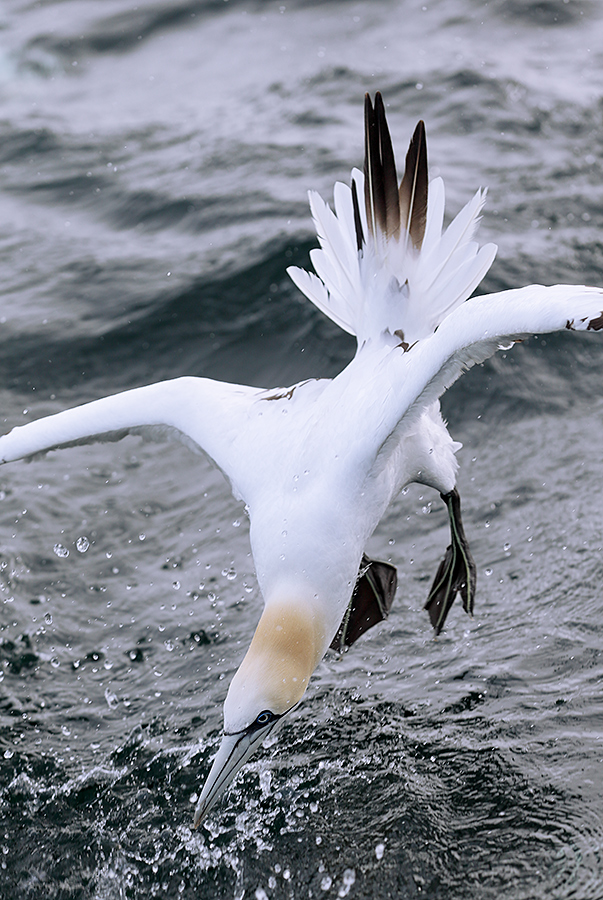
|
|
This image was created with the hand held Canon EF 70-200mm f/2.8L IS II lens (at 140mm) and the Canon EOS-1D X. ISO 400. Evaluative metering + 2 1/3 stops off the grey sky: 1/2000 sec. at f/4 in Manual mode.
Two sensors down from the central sensor/AI Servo Surround/Rear Focus AF on the top of the bird’s back was active at the moment of exposure. Click here if you missed the Rear Focus Tutorial. Be sure to click on the image to see a larger version.
|
Gannet Boat Trip #2
On Monday, July 7 we made our 2nd gannet boat trip. With overall brighter conditions it was even better than our first trip. When we left the dock it looked as if we were going to be dead ducks with wind against sun conditions: the sun in the northeast and the winds from the southwest…. But after the 1 hour run to Bass Rock a lovely thin fog/cloud rolled in to save us. We enjoyed more than 90 minutes of non-stop flight photography. Many of the participants needed to take short breaks here and there as they simply could not raise their rigs to the sky. Almost mercifully the sun came out but most folks still kept trying in difficult conditions. I asked the captain to speed up the boat a bit as the mate baited the gannets with fish so that the birds would follow us as we headed right at the sun. My idea worked perfectly and we enjoyed lots more great diving action.
Vertical Diving Bird Photography???
With the birds diving right next to the boat I decided for the first time ever to go vertical in an attempt to create some images of these rocket arrow birds just before and just after they hit the water. The image above is not quite what I had in mind but it surely is different.
|

|
|
This image was also created with the hand held Canon EF 70-200mm f/2.8L IS II lens (this time at 200mm) and the Canon EOS-1D X. ISO 400. Evaluative metering + 2 1/3 stops off the grey sky: 1/1250 sec. at f/4 in Manual mode.
Two sensors up from the central sensor/AI Servo Surround/Rear Focus AF on the base of the lower mandible was active at the moment of exposure. Click here if you missed the Rear Focus Tutorial. Be sure to click on the image to see a larger version.
|
More Vertical Flight Photography
With the clouds coming and going–but mostly coming, we enjoyed more great flight photography. I was set up for the vertical diving images and when I pointed the lens at the birds directly overhead I noticed that the bird’s bodies framed up nicely. So I moved the active sensor from 2 below the central sensor to 2 above the central sensor and made only a few images. I was thrilled with this one of a screaming gannet.
70-200mm f/2.8L IS & 1D X Combo Does Not Suck
In flight situations with the birds at close range the 70-200II/1D X combo is unbeatable. About a year ago, Denise Ippolito, abandoned her beloved Canon EF 100-400mm L IS lens and purchased Peter Kes’s 70-200 II. On this outing, Denise, who had steadfastly stuck by her 1D Mark IV body, tried one of my two 1D X bodies. Her reaction: “Love it. Tracks better. I need one for my bird photography.”
It’s that simple.
If reading this motivates you to purchase a 1D X please consider using our B&H affiliate logo-link immediately below. Send me your B&H receipt via e-mailand I will be glad to send you a free copy of our EOS-1D X AF Guide.
|
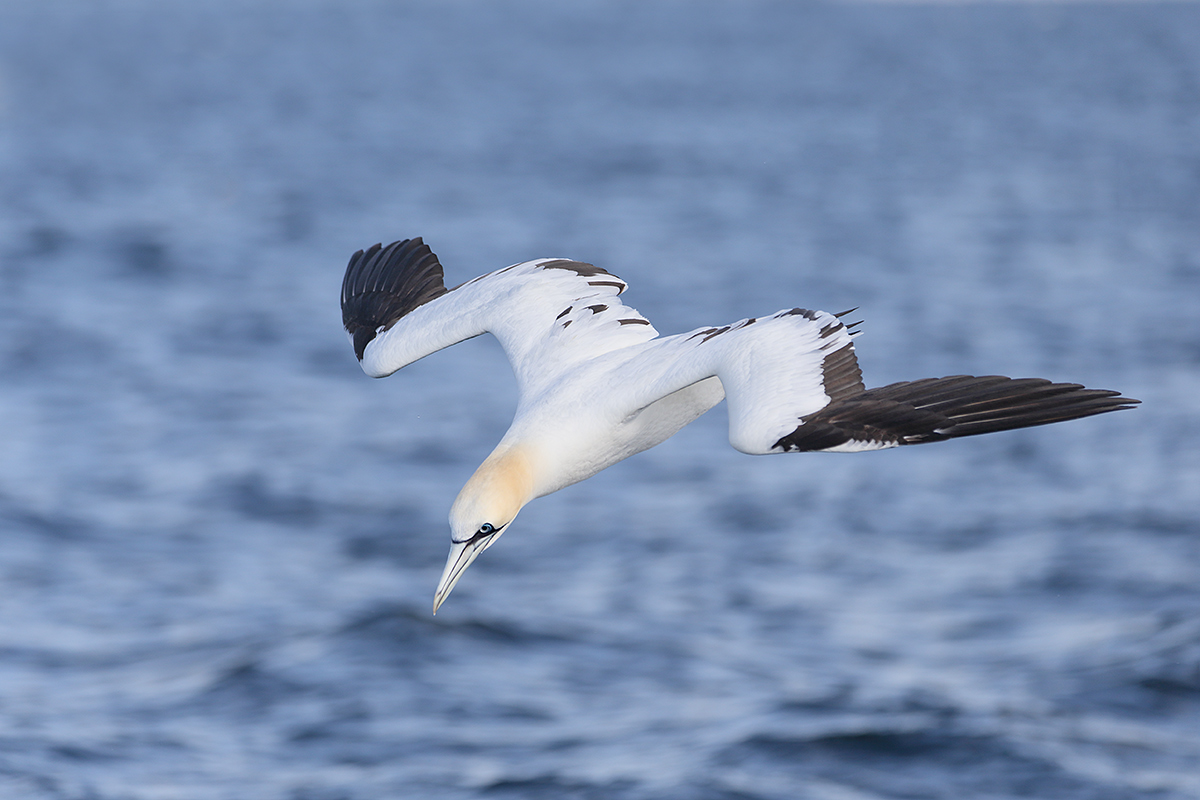
|
|
This image was created with the hand held Canon EF 70-200mm f/2.8L IS II lens , the Canon 1.4x EF Extender III (Teleconverter) (at 222mm), and the Canon EOS-1D X. ISO 400. Evaluative metering + 1 1/3 stops off a fairly bright cloud: 1/2500 sec. at f/4 in Manual mode.
Central sensor/AI Servo Surround/Rear Focus AF on the bird’s upper back was active at the moment of exposure. Click here if you missed the Rear Focus Tutorial. Be sure to click on the image to see a larger version.
|
Adding the 1.4X III TC
Once the boat sped up the birds were a bit farther from the boat than they had been so I added the 1.4X TC III for a bit more reach. Initial AF acquisition and tracking accuracy are still superb. The image above was made in cloudy bright conditions with just a hint of sun. I love the bright whites and the deep rich blues.
Gannet Eyes
The eyes of gannets are very deep-set, surely in part to protect them during their incredible dives. Thus, they are always shaded to some degree. I spent a good deal of time during our Photoshop session yesterday afternoon reviewing my Digital Eye Doctor techniques so that the eyes of the birds looked as bright and sharp as they do in life.
Digital Basics
My Digital Eye Doctor techniques and everything else that I did to optimize today’s image is detailed in the Digital Basics File–written in my easy-to-follow, easy-to-understand style. Are you tired of making your images look worse in Photoshop? Digital Basics File is an instructional PDF that is sent via e-mail. It includes my complete digital workflow, dozens of great Photoshop tips, the use of Contrast Masks, several different ways of expanding and filling in canvas, all of my time-saving Keyboard Shortcuts, Quick Masking, Layer Masking, and NIK Color Efex Pro basics, my killer image clean-up techniques, creating time-saving actions, and lots more.
DPP V4.0
Canon recently released a new version of DPP, V4.0. It can be downloaded here. You will need to enter your 1D X or 5D Mark III serial number to start the download. I now have 4.0 on both of my laptops. While early reports are that it is significantly better in many areas than any previous versions, I was totally baffled by the interface. It bears no resemblance to any current version of DPP. Arash Hazeghi and I will be working on a DPP V4.0 RAW Conversion eGuide quite soon. It will require a separate purchase. V4.0 works only with 1D X, 5D III, 6D, and 1Dc images. Folks with older bodies (both pro-sumer and professional) will need to continue using previous versions of DPP. I recently updated to V3.11 and have been very happy with it. I was glad to note the addition of a Color Temperature slider: I had been suggesting that ever since I began using DPP about 2 years ago.
The currently available version of the DPP Raw Conversion Guide is ideal for folks (like me) who use V3.11 or prior. To learn why I now convert all of my images with DPP, click here.
Your Favorite?
Take a moment to leave a comment and let us know which of the 3 images you liked best. And why.
The 2015 UK Puffins and Gannets IPT
This workshop has been so amazing that by the 2nd afternoon we had already decided to return in very early July 2015. In addition, we may run the first-ever Ireland Puffins and Gannets IPT the week before. If you are interested in receiving early notice for either or both of these great trips, please shoot me an e-mail with the words “2015 Puffins and Gannets IPTs” cut and pasted into the Subject line.
Facebook
Be sure to like and follow BAA on Facebook by clicking on the logo link upper right. Tanks a stack!
|

|
|
Do consider joining me for a once in a lifetime trip to the Galapagos archipelago in July, 2015.
|
GALAPAGOS Photo Cruise of a Lifetime IPT/The Complete Galapagos Photographic Experience. July 14-28, 2015 on the boat. 13 FULL and two half-days of photography: $12,499. Limit 14 including the leader(s)/Openings: 7.
My two-week Galapagos Photo-Cruises are without equal. The world’s best guide, a killer itinerary, a great boat (the Samba), and the best leader with eight Galapagos cruises under his belt. Pre-trip and pre-landing location-specific gear advice. In-the-field photo instruction and guidance. Jeez, I almost forgot: fine dining at sea!
The great spots that we will visit include Tower Island (including Prince Phillips Steps and Darwin Bay), Hood Island (including Punta Suarez, the world’s only nesting site of Waved Albatross, and Gardner Bay)—each of the preceding are world class wildlife photography designations that rank right up there with Antarctica, Africa, and Midway. We will also visit Fernandina, Puerto Ayora for the tortoises, Puerto Egas—James Bay, North Seymour and Isla Lobos for nesting Blue-footed Booby (most years), South Plaza, Floreana, and Urbina Bay, all spectacular in their own right. We visit every great spot on a single trip. Plus tons more. And there will he lots of opportunities to snorkel on sunny mid-days for those like me who wish to partake.
We will be the first boat on each island in the morning and the last boat to leave each island every afternoon. If we are blessed with overcast weather, we will often spend 5-6 hours at the best sites. And as noted above, mid-day snorkeling is an option on most sunny days depending on location. Note: some of the walks are a bit strenuous. Great images are possible on all landings with a hand held 70-200mm lens and a 1.4X teleconverter. I bring a longer lens ashore on most landings as that fits my style. I generally work with either the Canon 300mm f/2.8L IS or the Canon 200-400mm f/4 L IS with Internal Extender.
Do know that there is a NatureScapes Galapagos trip: one week for $8495. Thus, my trip represents a tremendous value; why go all that way and miss half of the great photographic locations?
The Logistics
Fly to Guayacil, Ecuador on July 12, 2015. Travel insurance/rest day: July 13 (We may or may not offer a photo outing on the 13th). Fly to the archipelago on July 14 and board the Samba. Get off the boat on July 28. Fly to Guayacil that afternoon. Fly home on the early morning of July 29 unless you are staying on or going elsewhere (or catching a red-eye flight on the evening of the 28th).
$12,499 includes just about everything: all transfers, guide and park fees, all food on the boat, transfers and ground transportation, your flights to the archipelago, and three nights (double occupancy) in a top notch hotel in Guayacil. If you are good to go, a non-refundable deposit of $5,000 per person is due immediately. The second payment of $4,000 is not due until 11/1/14. The final payment of $3749 per person will be due on 2/1/15. A $200 discount will be applied to each of the balances for couples or friends who register at the same time.
Purchasing travel insurance within 2 weeks of our cashing your deposit check is strongly recommended. On my past two cruises a total of 5 folks were forced to cancel less than one week prior to the trip. My family and I use Travel Insurance Services and strongly recommend that you do the same.
Not included: your round trip airfare from your home to and from Guayaquil, beverages on the boat, phone calls, your meals in Guayacil, personal items, and a $600/person cash tip for the crew and the guide—this works out to roughly $40/day to be shared by the 7 folks who will be waiting on us hand and foot every day for two weeks. The service is so wonderful that many folks choose to tip extra.
Please e-mail for the complete itinerary and for additional info and images. Please cut and paste “Galapagos 2015 Info Please) into the Subject line.
Support the BAA Blog. Support the BAA Bulletins: Shop B&H here!
We want and need to keep providing you with the latest free information, photography and Photoshop lessons, and all manner of related information. Show your appreciation by making your purchases immediately after clicking on any of our B&H or Amazon Affiliate links in this blog post. Remember, B&H ain’t just photography!
…..
Amazon Canada
Many kind folks from north of the border, ay, have e-mailed stating that they would love to help us out by using one of our affiliate links but that living in Canada and doing so presents numerous problems. Now, they can help us out by using our Amazon Canada affiliate link by starting their searches by clicking here. Many thanks to those who have written.
Typos
In all blog posts and Bulletins, feel free to e-mail or to leave a comment regarding any typos, wrong words, misspellings, omissions, or grammatical errors. Just be right. 🙂
July 7th, 2014 The Streak Continues: 219
It is just after 5:000am here in Bamburgh (say BAM-buh-Ruh or BUM-buh-Ruh) as we head out the door for our second trip on the gannet boat. Both Sunday landings were great and my weather Karma held for yet another day: more cloudy bright conditions. On the way to the islands someone asked me “What would you like to get today that you have not already gotten?” I responded quickly: “Landing and flying Common Guillemots (Common Murres on our side of the pond). Done deal.
This post marks a ridiculous 219 consecutive days with a new blog post. With so many folks getting in the habit of using our B&H links and our Amazon logo-links why quit now? April, May and June have been fantastic as lots of folks are getting the message; using my affiliate links does not cost you a penny and helps support my efforts here. To show your appreciation, I do ask that you use our B&H and Amazon affiliate links on the right side of the blog for all of your purchases. Please check the availability of all photographic accessories in the BIRDS AS ART Online Store, especially Gitzo tripods, Wimberley tripod heads, and the like. We sell only what I have used and tested, and know that you can depend on. We will not sell you junk. We know the tools that you need to make creating great images easy and fun. And we are always glad to answer your gear questions via e-mail.
You can find the following items in the store: Gitzo tripods, Mongoose M3.6 and Wimberley heads, plates, low feet, and accessories, flash brackets, , Delkin e-film Pro Compact Flash Cards, LensCoat products, and our unique line-up of educational materials including ABP I & II, Digital Basics, Site and Set-up e-Guides, Canon and Nikon Camera Users and AF e-Guides, and MP-4 Photoshop video tutorials among others.
I would of course appreciate your using our B&H affiliate links for all of your major gear, video, and electronic purchases. For the photographic stuff mentioned in the paragraph above we, meaning BAA, would of course greatly appreciate your business. Here is a huge thank you to the many who have been using our links on a regular basis and visiting the BAA Online store as well.
|
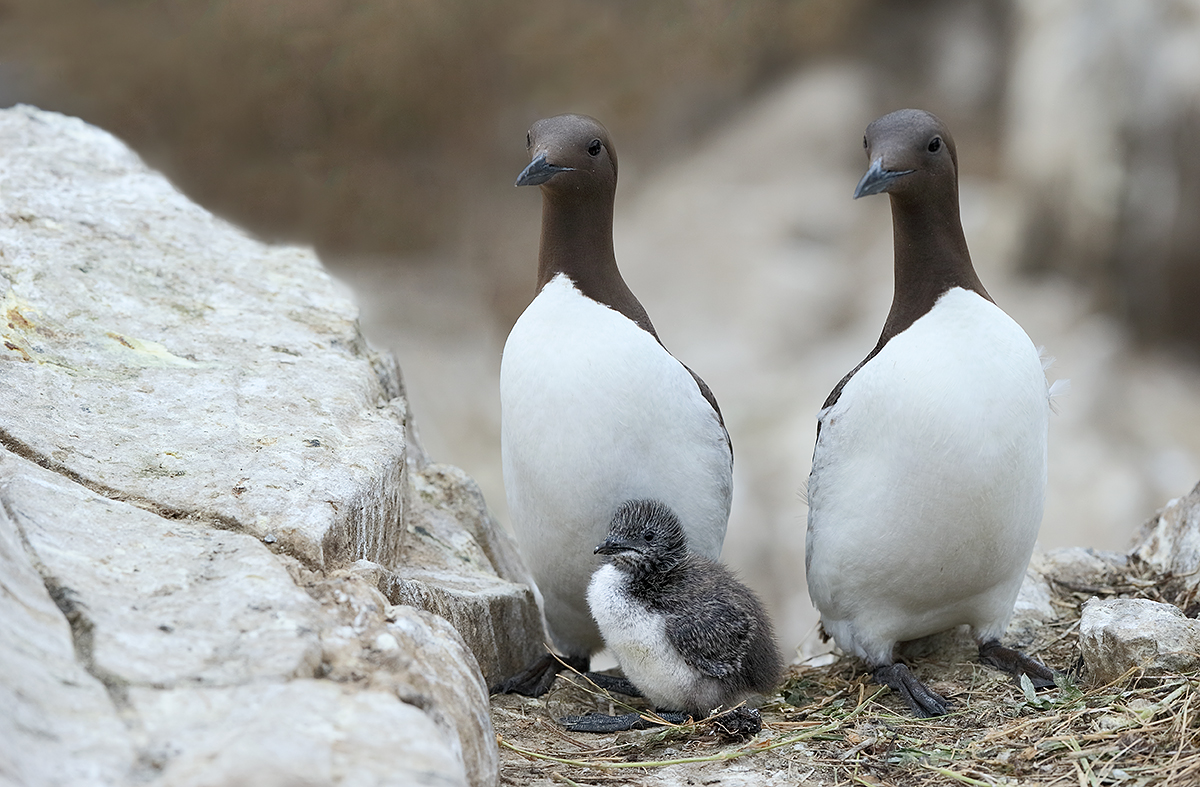
|
|
This image was created on the morning of July 4th with the hand held Canon EF 300mm f/2.8L IS II USM lens and the Canon EOS-1D X. ISO 800. Evaluative metering +1 stop as framed: 1/1600 sec. at f/5.6 in Av mode. Cloudy White Balance left the image too yellow.
One sensor to the left of the central sensor AI Servo/Surround/Rear Focus AF on the center of the upper breast of the adult on our left was active at the moment of exposure. Why was that a mistake? Click here to see the latest version of the Rear Focus Tutorial. Click on the image to see a larger version.
|
Finding the Cleanest Slot…
Photographing nesting birds at seabird colonies is a lot like photographing nesting herons and egrets at rookeries. The key is to find the best, often the only perspective that offers a clean line of sight to the nest and a relatively clean background. My style is to simply pass up obstructed nests or those with horrifically cluttered backgrounds. The key to finding the good situations is to move. Walk right, walk left Explore new areas. Once you find something neat, get higher or lower to see if you can eliminate one or more distracting background elements. Choosing the ideal AF sensor can help you clean up the background as well.
And, as I did above, once you have something fairly clean and have acquired focus, be sure to take lots of images. That is especially true when there are multiple birds at a nest. Doing so increases your chances of getting a few images where all of the birds have good head angles.
|
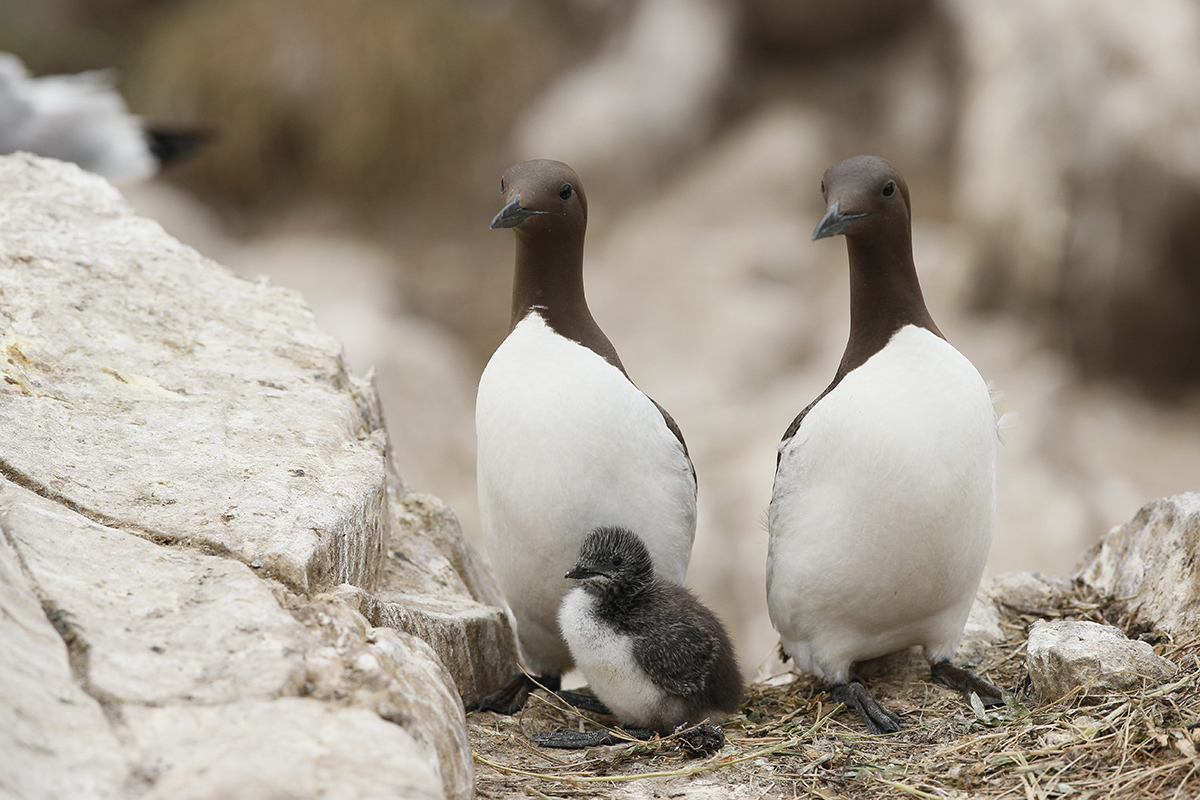
|
|
This is the original image from which the optimized image that opened this blog post was created.
|
The Image Opimization
There was nothing out of the ordinary here. I used Click White Balance in DPP to eliminate the yellow cast. The big job here was cleaning up the BKGR a bit with Denise Ippotlito’s Protective Cloning on a Layer Techniques. I lightened the image with a Curves adjustment and, again as taught to me by Denise, ran a 25% layer of Auto Contrast to give the image some pop. I selected the faces and hoods of the adults and the whole chick with the Quick Selection Tool and then applied a Contrast Mask to that layer only.
Changes?
Please leave a comment and let us know what differences you see between the original and the optimized image.
DPP V4.0
Canon recently released a new version of DPP, V4.0. It can be downloaded here. You will need to enter your 1D X or 5D Mark III serial number to start the download. I now have 4.0 on both of my laptops. While early reports are that it is significantly better in many areas than any previous versions, I was totally baffled by the interface. It bears no resemblance to any current version of DPP. Arash Hazeghi and I will be working on a DPP V4.0 RAW Conversion eGuide quite soon. It will require a separate purchase. V4.0 works only with 1D X, 5D III, 6D, and 1Dc images. Folks with older bodies (both pro-sumer and professional) will need to continue using previous versions of DPP. I recently updated to V3.11 and have been very happy with it. I was glad to note the addition of a Color Temperature slider: I had been suggesting that ever since I began using DPP about 2 years ago.
The currently available version of the DPP Raw Conversion Guide is ideal for folks (like me) who use V3.11 or prior. Learn more here.
Digital Basics
Everything that I did to optimize today’s image is detailed in the Digital Basics File–written in my easy-to-follow, easy-to-understand style. Are you tired of making your images look worse in Photoshop? Digital Basics File is an instructional PDF that is sent via e-mail. It includes my complete digital workflow, dozens of great Photoshop tips, the use of Contrast Masks, several different ways of expanding and filling in canvas, all of my time-saving Keyboard Shortcuts, Quick Masking, Layer Masking, and NIK Color Efex Pro basics, my killer image clean-up techniques, Digital Eye Doctor, creating time-saving actions, and lots more.
APTATS I & II
Learn the details of advanced Quick Masking techniques in APTATS I. Learn Advanced Layer Masking Techniques in APTATS I. Mention this blog post and apply a $5 discount to either with phone orders only. Buy both APTATS I and APTATS II and we will be glad to apply at $15 discount with phone orders only. Please call Jim or Jennifer weekdays at 863-221-2372 to take advantage of this special offer.
Nickerson Baby Beach-nesting Birds IPT: 3-Full Days/July 15-17, 2014: $1199. Introductory meet and greet: 8pm, Monday, July 14, 2014. Co-leaders Arthur Morris and Denise Ippolito
Late Registration Discount: Call Jim weekdays at 863-692-0906 for details or call artie this SAT or SUN (6/28 or 29) only at 863-692-0806. Or contact us via e-mail.
With a small group pretty much guaranteed, do consider joining us on Long Island, NY this coming July to photograph Black Skimmers–it’s looking like a great year for skimmer nesting, Common Terns with chicks, American Oystercatcher families, and possibly some just-hatched Black Skimmer chicks. The opportunities will include chances to photograph a variety of breeding behaviors including courtship feeding, display flight and combat, and copulations. Car-pooling is recommended; if we opt to return to the beach before 5pm on cloudy days for example) there is a $30/vehicle parking fee that is not included so it is best to share that expense. Parking in the morning is free.
Because of the late date, your non-refundable payment in full is due when you register.
Please print, complete, and sign the form that is linked to here and shoot it to us along with your deposit check (made out to “Arthur Morris.”) Though we prefer a check, you can also leave your deposit with a credit card by calling the office at 863-692-0906. If you register by phone, please print, complete and sign the form as noted above and either mail it to us or e-mail the scan.
If you have any questions, please feel free to contact me via e-mail
Facebook
Be sure to like and follow BAA on Facebook by clicking on the logo link upper right. Tanks a stack!
Support the BAA Blog. Support the BAA Bulletins: Shop B&H here!
We want and need to keep providing you with the latest free information, photography and Photoshop lessons, and all manner of related information. Show your appreciation by making your purchases immediately after clicking on any of our B&H or Amazon Affiliate links in this blog post. Remember, B&H ain’t just photography!
…..
Amazon Canada
Many kind folks from north of the border, ay, have e-mailed stating that they would love to help us out by using one of our affiliate links but that living in Canada and doing so presents numerous problems. Now, they can help us out by using our Amazon Canada affiliate link by starting their searches by clicking here. Many thanks to those who have written.
Typos
In all blog posts and Bulletins, feel free to e-mail or to leave a comment regarding any typos, wrong words, misspellings, omissions, or grammatical errors. Just be right. 🙂
July 6th, 2014 The Streak Continues: 218
It is just before 5:00am here in Bamburgh (say BUM-bu-Ruh) as I finish today’s blog post. What was supposed to be our third full day on the puffin boat was cut short as the researchers closed the island to protect the very cold and wet Arctic Tern chicks. Our morning landing was delayed by the bad weather but when we did land we were again blessed with cloudy bright conditions. We did enjoy a late-in-the-day castle photography session in gorgeous light. Pictures to follow.
This post marks 218 consecutive days with a new blog post. With so many folks getting in the habit of using our B&H links and our Amazon logo-links why quit now? April, May and June have been fantastic as lots of folks are getting the message; using my affiliate links does not cost you a penny and helps support my efforts here. To show your appreciation, I do ask that you use our B&H and Amazon affiliate links on the right side of the blog for all of your purchases. Please check the availability of all photographic accessories in the BIRDS AS ART Online Store, especially Gitzo tripods, Wimberley tripod heads, and the like. We sell only what I have used and tested, and know that you can depend on. We will not sell you junk. We know the tools that you need to make creating great images easy and fun. And we are always glad to answer your gear questions via e-mail.
You can find the following items in the store: Gitzo tripods, Mongoose M3.6 and Wimberley heads, plates, low feet, and accessories, flash brackets, , Delkin e-film Pro Compact Flash Cards, LensCoat products, and our unique line-up of educational materials including ABP I & II, Digital Basics, Site and Set-up e-Guides, Canon and Nikon Camera Users and AF e-Guides, and MP-4 Photoshop video tutorials among others.
I would of course appreciate your using our B&H affiliate links for all of your major gear, video, and electronic purchases. For the photographic stuff mentioned in the paragraph above we, meaning BAA, would of course greatly appreciate your business. Here is a huge thank you to the many who have been using our links on a regular basis and visiting the BAA Online store as well.
|
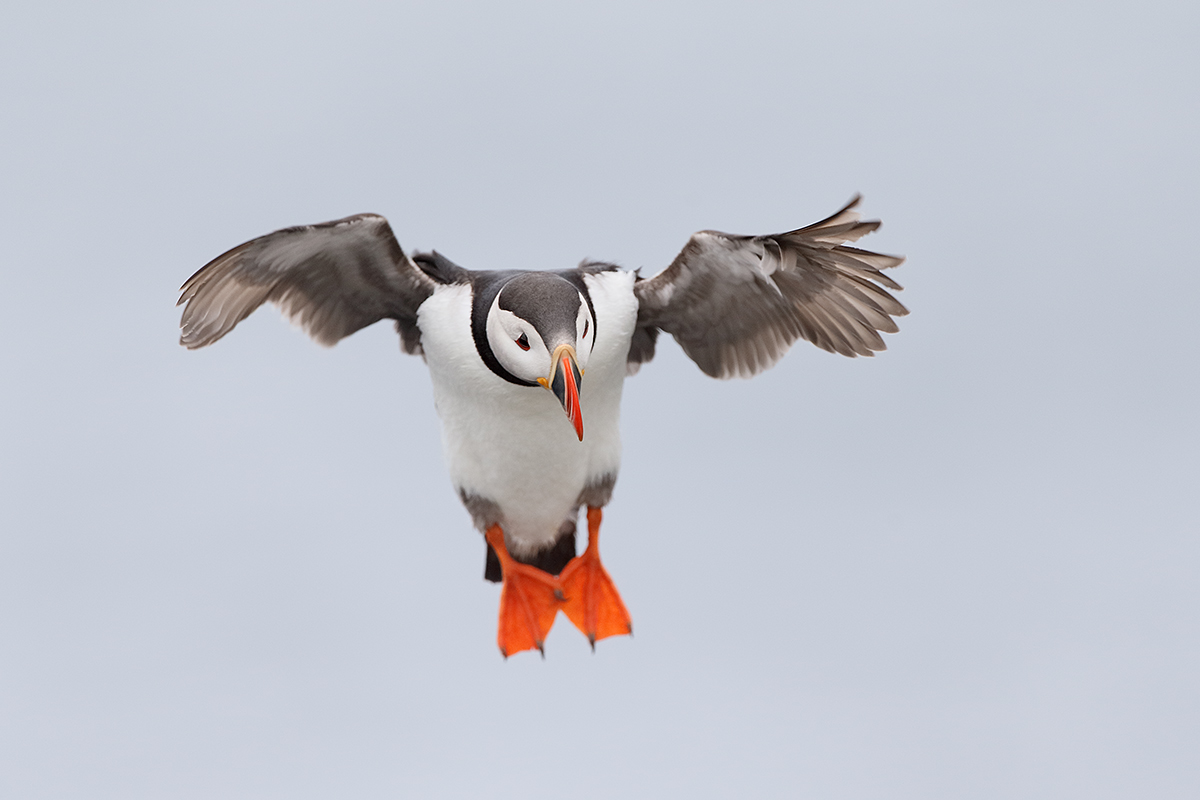
|
|
This braking puffin image was created on the third puffin boat morning landing with the hand held Canon EF 300mm f/2.8L IS II USM lens, the Canon Extender EF 1.4X III, and the Canon EOS-1D X. ISO 800. Evaluative metering +3 stops off a dreary sky: 1/2500 sec. at f/4 in Manual mode.
Central sensor/AI Servo/Surround Rear Focus AF on the base of the bird’s left leg (as originally framed) was active at the moment of exposure. Click here to see the latest version of the Rear Focus Tutorial. Click on the image to see a larger version.
|
Not a Nice Morning…
It was raining pretty good. It was cold. It was windy. It was dark. We could not land at the best location because there was a big swell on. After somewhat of a sight-seeing cruise, the captain announced that we would be landing at a secondary site. The concrete steps were seaweed-covered treacherous. The wet yellow-lichen rocks were treacherous as well. I passed the first group of puffins by–too distant. The next group was perfect. We set up and had a ton of fun.
|
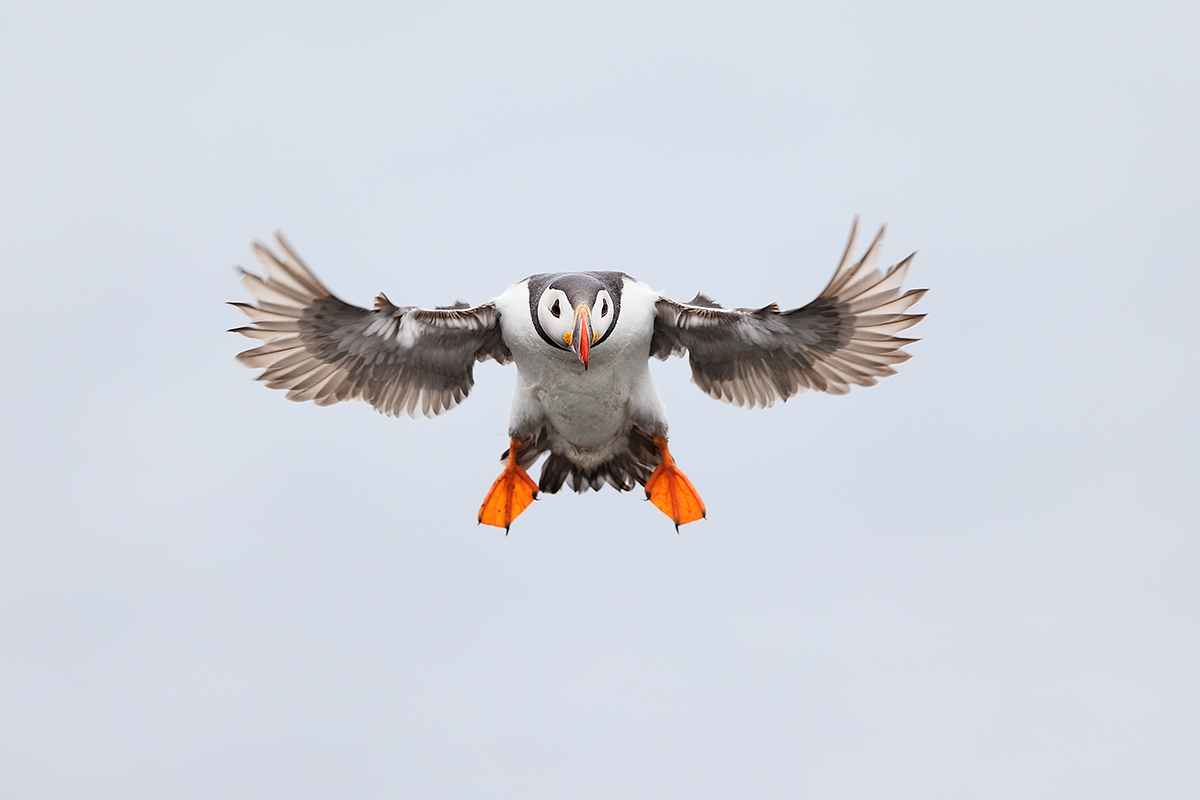
|
|
This image was also created our third puffin boat morning landing, this one with the hand held Canon EF 300mm f/2.8L IS II USM lens and the Canon EOS-1D X. ISO 800. Evaluative metering +3 stops off the dreary sky: 1/2500 sec. at f/2.8 in Manual mode.
Central sensor Surround/AI Servo Rear Focus AF squarely on the bird’s face was active at the moment of exposure. Click here to see the latest version of the Rear Focus Tutorial. Click on the image to see a larger version.
|
Like Shooting Ducks in a Barrel
Had we not enjoyed cloudy conditions, the morning would have been a waste as the wind was from the west as the light would have been in our faces as the birds were landing right at us into the stiff breeze.
|
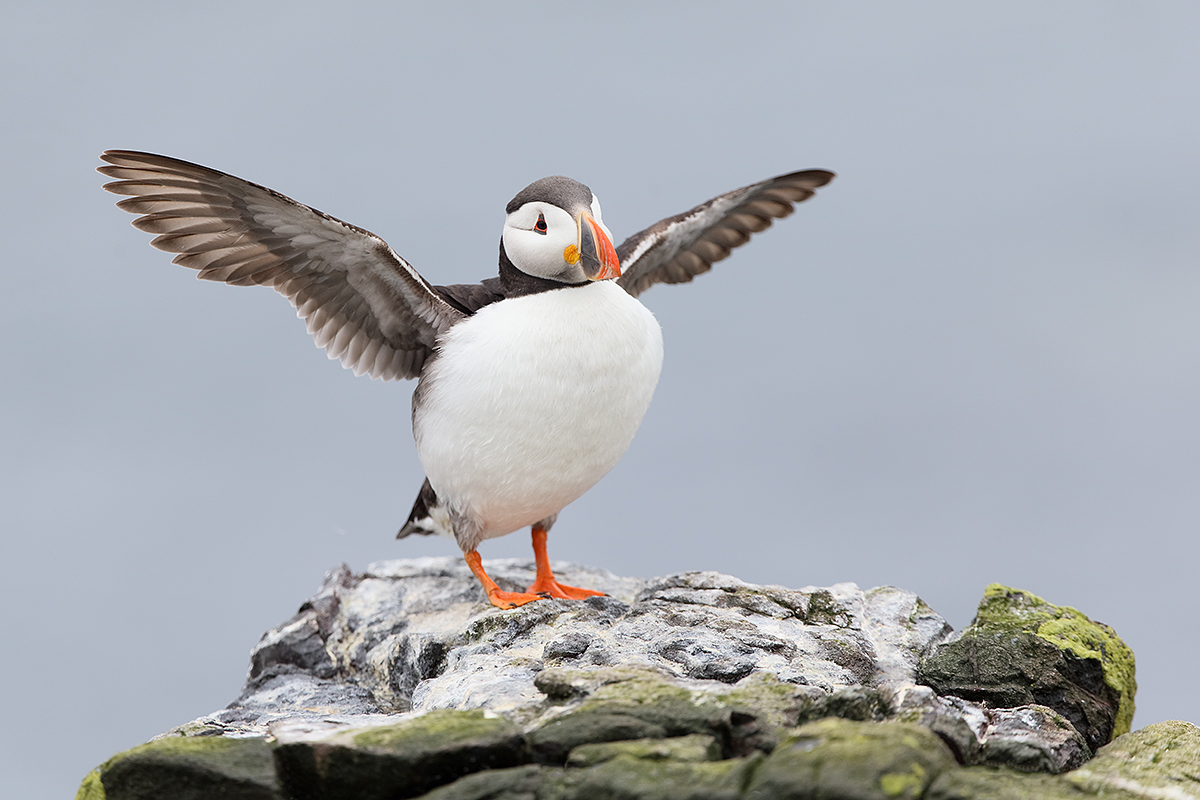
|
|
This image was also created our third puffin boat morning landing with the hand held Canon EF 300mm f/2.8L IS II USM lens and the Canon EOS-1D X. ISO 800. Evaluative metering 3 stops off the dreary sky: 1/2500 sec. at f/4 in Manual mode.
Two sensors up from the Central sensor AI Servo/Surround/Rear Focus AF squarely on the bird’s upper breast just below the neck was active at the moment of exposure. Click here to see the latest version of the Rear Focus Tutorial. Click on the image to see a larger version.
|
Studying and Understanding Bird Behavior
After a few minutes I noted that there were several flapping rocks. If a bird landed on one of them or climbed up from the cliff below to the top and perched on one of them, the bird would invariably flap within 30 seconds. Sharing that with the nearby group members really opened some eyes. At first they thought that I was some kind of clairvoyant…. Figuring out that behavioral pattern lead to lots of excellent images for all present.
Your Favorite?
Please take a moment and let us know which of the 3 images presented here today is the strongest, and why you picked it as your favorite.
Image Question
In the last image, why did I go with two sensors above the central sensor as my active AF point?
Nickerson Baby Beach-nesting Birds IPT: 3-Full Days/July 15-17, 2014: $1199. Introductory meet and greet: 8pm, Monday, July 14, 2014. Co-leaders Arthur Morris and Denise Ippolito
Late Registration Discount: Call Jim weekdays at 863-692-0906 for details. Or contact me via e-mail.
With a small group pretty much guaranteed, do consider joining us on Long Island, NY this coming July to photograph Black Skimmers–it’s looking like a great year for skimmer nesting, Common Terns with chicks, American Oystercatcher families, and possibly some just-hatched Black Skimmer chicks. The opportunities will include chances to photograph a variety of breeding behaviors including courtship feeding, display flight and combat, and copulations. Car-pooling is recommended; if we opt to return to the beach before 5pm on cloudy days for example) there is a $30/vehicle parking fee that is not included so it is best to share that expense. Parking in the morning is free.
Because of the late date, your non-refundable payment in full is due when you register.
Please print, complete, and sign the form that is linked to here and shoot it to us along with your deposit check (made out to “Arthur Morris.”) Though we prefer a check, you can also leave your deposit with a credit card by calling the office at 863-692-0906. If you register by phone, please print, complete and sign the form as noted above and either mail it to us or e-mail the scan.
If you have any questions, please feel free to contact me via e-mail
Facebook
Be sure to like and follow BAA on Facebook by clicking on the logo link upper right. Tanks a stack!
Support the BAA Blog. Support the BAA Bulletins: Shop B&H here!
We want and need to keep providing you with the latest free information, photography and Photoshop lessons, and all manner of related information. Show your appreciation by making your purchases immediately after clicking on any of our B&H or Amazon Affiliate links in this blog post. Remember, B&H ain’t just photography!
…..
Amazon Canada
Many kind folks from north of the border, ay, have e-mailed stating that they would love to help us out by using one of our affiliate links but that living in Canada and doing so presents numerous problems. Now, they can help us out by using our Amazon Canada affiliate link by starting their searches by clicking here. Many thanks to those who have written.
Typos
In all blog posts and Bulletins, feel free to e-mail or to leave a comment regarding any typos, wrong words, misspellings, omissions, or grammatical errors. Just be right. 🙂
July 5th, 2014 The Streak Continues: 217
It is just before 7:45am here in Bamburgh (say BUM-bu-Ruh) as I finish today’s blog post. Our second day on the puffin boat was as incredible as the first. We were blessed with cloudy bright conditions for the whole day. Everyone got to photograph puffins in flight, Arctic Terns with chicks of all ages, Sandwich Terns carrying fish back to their nests, Razorbills, Common Guillemots (Common Murres to us) with chicks, and just-fledged Black-headed Gulls. Though we are well less than halfway through the trip everyone is exhausted from the intensity of the photo sessions.
This post marks 217 consecutive days with a new blog post. With so many folks getting in the habit of using our B&H links and our Amazon logo-links why quit now? April, May and June have been fantastic as lots of folks are getting the message; using my affiliate links does not cost you a penny and helps support my efforts here. To show your appreciation, I do ask that you use our B&H and Amazon affiliate links on the right side of the blog for all of your purchases. Please check the availability of all photographic accessories in the BIRDS AS ART Online Store, especially Gitzo tripods, Wimberley tripod heads, and the like. We sell only what I have used and tested, and know that you can depend on. We will not sell you junk. We know the tools that you need to make creating great images easy and fun. And we are always glad to answer your gear questions via e-mail.
You can find the following items in the store: Gitzo tripods, Mongoose M3.6 and Wimberley heads, plates, low feet, and accessories, flash brackets, , Delkin e-film Pro Compact Flash Cards, LensCoat products, and our unique line-up of educational materials including ABP I & II, Digital Basics, Site and Set-up e-Guides, Canon and Nikon Camera Users and AF e-Guides, and MP-4 Photoshop video tutorials among others.
I would of course appreciate your using our B&H affiliate links for all of your major gear, video, and electronic purchases. For the photographic stuff mentioned in the paragraph above we, meaning BAA, would of course greatly appreciate your business. Here is a huge thank you to the many who have been using our links on a regular basis and visiting the BAA Online store as well.
|
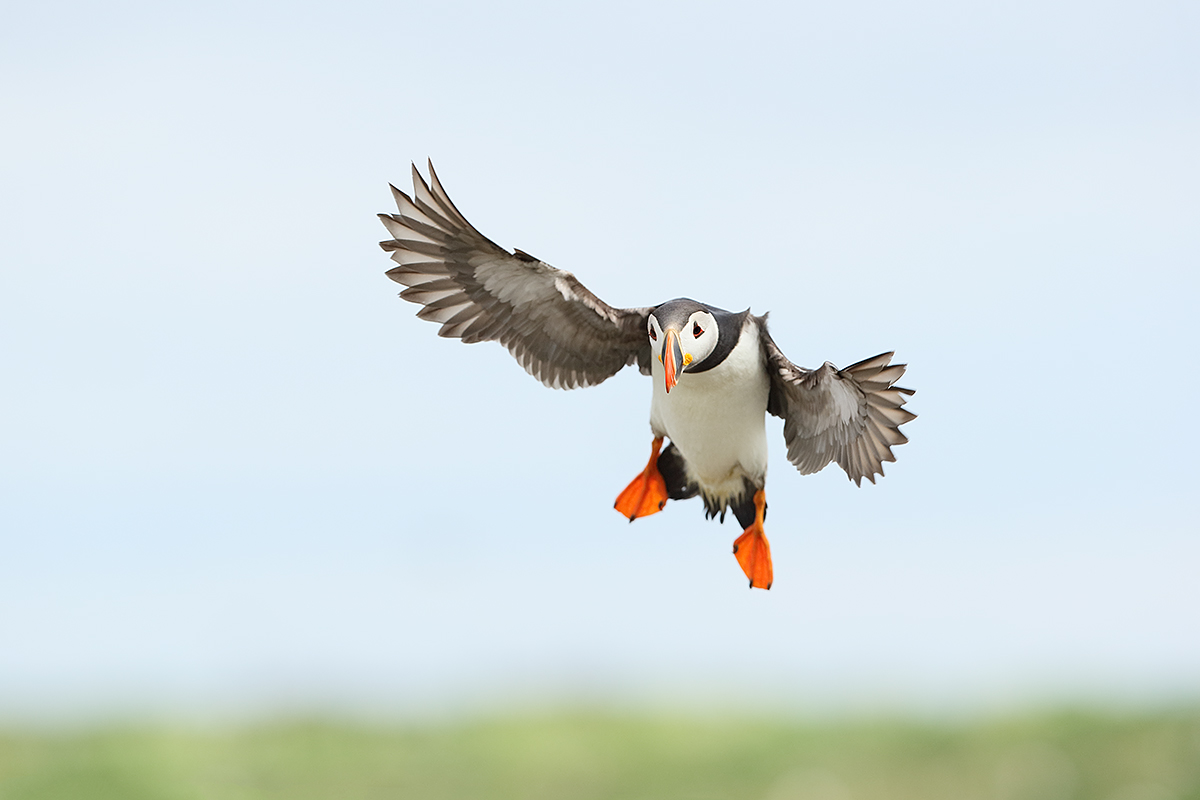
|
|
This image was created on our second puffin boat morning landing with the hand held Canon EF 300mm f/2.8L IS II USM lens and the Canon EOS-1D X. ISO 800. Evaluative metering +1 2/3 stops off light sky: 1/3200 sec. at f/5 in Manual mode.
Central sensor Surround/AI Servo Rear Focus AF may have just caught the bird’s bill and active at the moment of exposure. Click here to see the latest version of the Rear Focus Tutorial. Click on the image to see a larger version.
|
The 300 II Alone
In order to track the speeding puffins in flight I needed to remove the 1.4X TC. There will be lots more soon on photographing these nearly impossible fast flying subjects.
|
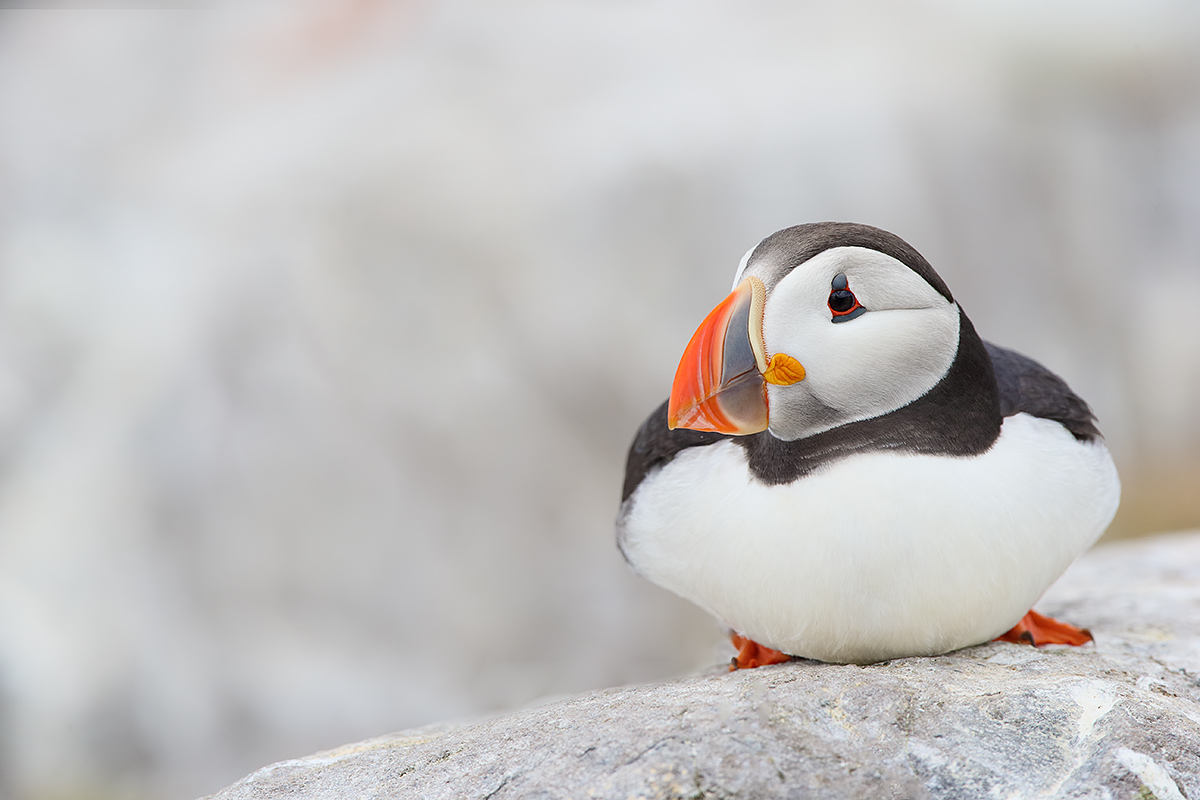
|
|
This image was created on our first puffin boat morning landing with the hand held Canon EF 300mm f/2.8L IS II USM lens, Canon Extender EF 2X III, and the Canon EOS-1D X. ISO 400. Evaluative metering +1 stop as framed: 1/500 sec. at f/8 in Av mode. AWB in cloudy bright conditions.
Two sensors to the right of the Central sensor/AI Servo/Srround Rear Focus AF on the puffin’s face active at the moment of exposure. Click here to see the latest version of the Rear Focus Tutorial. Click on the image to see a larger version.
|
The 300 II and the 2X III TC
Here I added the 2X III TC in order to isolate a nicely posed single puffin. Someone asked in a comment the other day why I now recommend turning the camera off and then on again when adding or removing a TC. The answer: doing so greatly minimizes sensor dust.
|
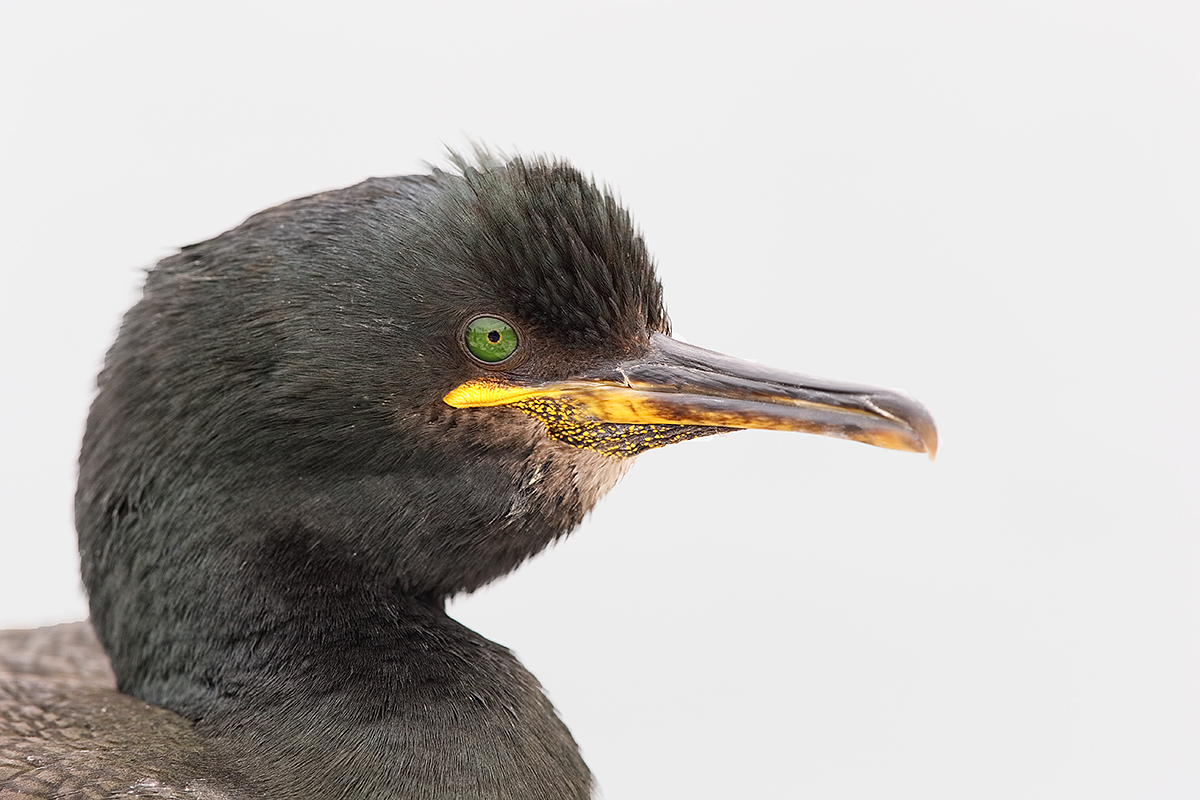
|
|
This Shag head portrait was created on our first puffin boat afternoon landing with the hand held Canon EF 300mm f/2.8L IS II USM lens, Canon Extender EF 1.4X III, and the Canon EOS-1D X. ISO 800. Evaluative metering +1 stop: 1/400 sec. at f/7.1 in Manual mode.
Two sensors to the left of the Central sensor/AI Servo/Surround Rear Focus AF on the base of the gape was active at the moment of exposure. Click here to see the latest version of the Rear Focus Tutorial. Click on the image to see a larger version.
|
The 300 II and the 1.4X III TC
Here, working in high wind with silly-tame birds while hand-holding, the 420mm focal length was perfect. While most photographers concentrate on the puffins, Denise and I have been captivated by the lovely green eyes of this small cormorant species. And I love the colors and patterns of the gular region: yellow spotting on a black background.
|
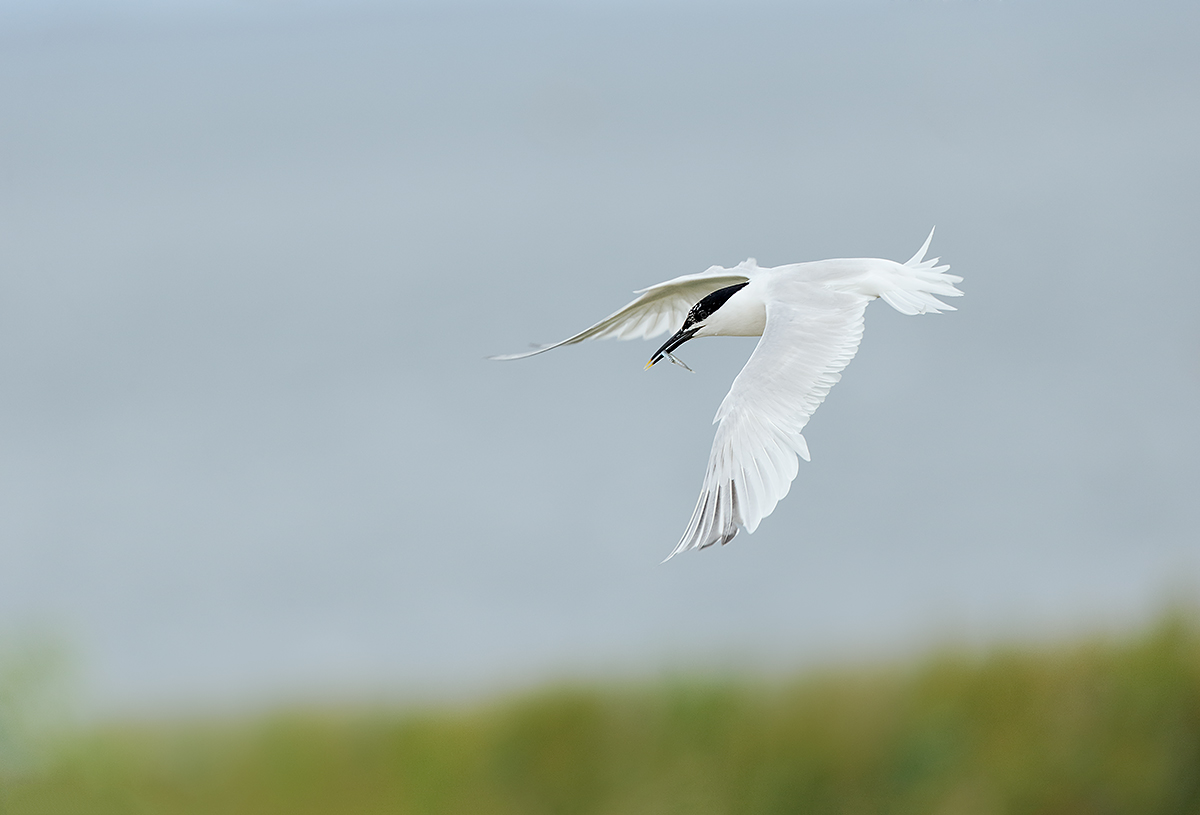
|
|
This image was created on our second puffin boat afternoon landing with the hand held Canon EF 300mm f/2.8L IS II USM lens, Canon Extender EF 2X III, and the Canon EOS-1D X. ISO 400. Evaluative metering +2 1/3 stops off the light grey sky: 1/1250 sec. at f/5.6 in Manual mode. Cloudy WB in cloudy conditions.
Central sensor/AI Servo/Srround Rear Focus AF on the tip of the bird’s bill was active at the moment of exposure. Click here to see the latest version of the Rear Focus Tutorial. Click on the image to see a larger version.
|
The 300 II and the 2X III TC
I have remarked here previously and often on how good this combination is for hand held flight photography but when photographing the Sandwich Terns coming back to their nests yesterday afternoon I was surprised at how quickly and easily it acquired focus, at how well the AF system tracked the bird even against backgrounds other than sky, and at how sharp the images were. Here I went to the 2X III as the area that held about 200 Sandwich Tern nests was well off the path. There were a few Arctic Tern and Atlantic Puffin nests mixed in.
Summing Up
The Canon EF 300mm f/2.8L IS II USM lens used with either Series III TC is an incredibly versatile, hand-hold-able rig the absolutely kills with both the 1D X and the 5D III. It is much lighter but far less versatile and less efficient than the 200-400. As I forgot to mention in the blog post here the compared these 2 great lenses, the 300 II is many thousands of dollars less expensive than the 200-400.
If you have been inspired to purchase any of the gear mentioned here today please consider using one or more of our product-specific B&H affiliate links above.
Nickerson Baby Beach-nesting Birds IPT: 3-Full Days/July 15-17, 2014: $1199. Introductory meet and greet: 8pm, Monday, July 14, 2014. Co-leaders Arthur Morris and Denise Ippolito
Late Registration Discount: Call Jim weekdays at 863-692-0906 for details. Or contact me via e-mail.
With a small group pretty much guaranteed, do consider joining us on Long Island, NY this coming July to photograph Black Skimmers–it’s looking like a great year for skimmer nesting, Common Terns with chicks, American Oystercatcher families, and possibly some just-hatched Black Skimmer chicks. The opportunities will include chances to photograph a variety of breeding behaviors including courtship feeding, display flight and combat, and copulations. Car-pooling is recommended; if we opt to return to the beach before 5pm on cloudy days for example) there is a $30/vehicle parking fee that is not included so it is best to share that expense. Parking in the morning is free.
Because of the late date, your non-refundable payment in full is due when you register.
Please print, complete, and sign the form that is linked to here and shoot it to us along with your deposit check (made out to “Arthur Morris.”) Though we prefer a check, you can also leave your deposit with a credit card by calling the office at 863-692-0906. If you register by phone, please print, complete and sign the form as noted above and either mail it to us or e-mail the scan.
If you have any questions, please feel free to contact me via e-mail
Facebook
Be sure to like and follow BAA on Facebook by clicking on the logo link upper right. Tanks a stack!
Support the BAA Blog. Support the BAA Bulletins: Shop B&H here!
We want and need to keep providing you with the latest free information, photography and Photoshop lessons, and all manner of related information. Show your appreciation by making your purchases immediately after clicking on any of our B&H or Amazon Affiliate links in this blog post. Remember, B&H ain’t just photography!
…..
Amazon Canada
Many kind folks from north of the border, ay, have e-mailed stating that they would love to help us out by using one of our affiliate links but that living in Canada and doing so presents numerous problems. Now, they can help us out by using our Amazon Canada affiliate link by starting their searches by clicking here. Many thanks to those who have written.
Typos
In all blog posts and Bulletins, feel free to e-mail or to leave a comment regarding any typos, wrong words, misspellings, omissions, or grammatical errors. Just be right. 🙂
|
|





